March/April 2024

African AN
ADVANTAGE
Dormans Coffee Managing Director Rozy Rana on influencing a new generation to appreciate Kenyan coffee
Pollinators no more CLIMATE CHANGE AND HABITAT LOSS POSE PRICING AND PRODUCTION RISK
Tech talk
SOFTWARE, APPS, AND AUTOMATION ADVANCE
Back to school
HOW EDUCATION PLATFORMS BUILD CAREER PATHWAYS www.gcrmag.com
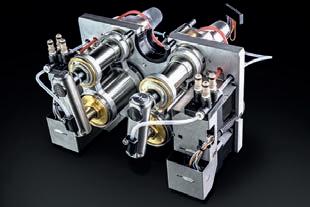






10 Beyond a beverage
Dormans Coffee Managing Director Rozy Rana on leading one of East Africa’s largest coffee roasters and influencing a producing community to appreciate the rich diversity and potential of Kenyan coffee
“[Coffee is] beyond just a beverage. It’s an experience that reflects the exceptional quality and craftsmanship of our local coffee industry.”
FEATURES
15 Pollinators no more
How climate change and habitat loss may limit the reproduction of coffee, posing a risk to its future price and availability
18 Speak the same language
Dr Simon Williams and Danny Andrade discuss the development of the Coffee Character Wheel
22 A Milanese icon
Experience Italy’s renowned coffee house Camparino in Galleria the same way

CONTENTS
24 Back to school
The evolution of coffee education is upskilling and empowering coffee professionals
28 Coffee made with care
Nespresso celebrates 20 years of the AAA Program, a coffee sourcing initiative ensuring the continued supply of highquality coffee
50 Steeped in success
Steeped Coffee details an innovative yet simple single-serve brew method to make coffee more accessible and sustainable
52 Real talk
MICE2024 introduces the Global Coffee Report Breakfast Symposium, a discussion series examining key industry issues
INDUSTRY PROFILES
32 Picture perfect
Probat introduces Roastpic, an app that gives instant statistics on a coffee sample
40 Cold concentration
Flavourtech on how its latest partnership can assist cold brew coffee producers
42 Bring it on
Brambati S.p.A. details how it plans to continue improving its practices and products to maintain a leading status
44 Giving back
Buencafé celebrates its 50th anniversary by honouring the coffee-growing communities that have contributed to its success
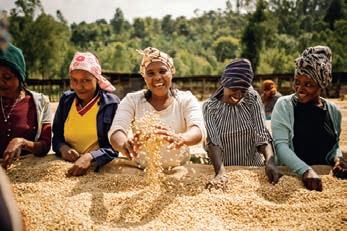
TECHNOLOGY PROFILES
36 Breaking new ground
Cimbali Group explains how it anticipates customer needs with digital solutions
38 Automation nation
Eversys continues to build its presence in the United Kingdom and Ireland
TECHNOLOGY AND SOFTWARE FEATURE
46 Tech-savvy
Unic explores the technical and software features of the Stella Epic multi-boilers and Tango XP super automatic series
48 Moving forward
How the WMF espresso NEXT semiautomatic portafilter can help businesses stay on top
LAST WORD
58 What’s brewing
A wrap-up of the latest appointments and movements of global coffee leaders
REGULARS
04 Editor’s note
06 News drip by drip
54 Marketplace
56

3 GLOBAL COFFEE REPORT
MARCH/APRIL 2024
Diary Dashboard COVER STORY
Rozy Rana MANAGING DIRECTOR, DORMANS COFFEE
22 18 28 48
EDITOR’S NOTE
GLOBAL COFFEE REPORT

Change-makers and coffee careers
WENTY YEARS AGO, BARISTA work part-time profession. For many teenagers, it was their first taste of hospitality, learning customer service skills, and a good way to earn weekend pocket money. During university, it was a job that helped fund music festival tickets, and weekend benders. If you were smart with money, it helped pay the rent or accumulated to a second-hand car loan. Unless you lived in Italy where baristas are worshipped into their ‘wiser years’, that was the extent of coffee. No one dared tell their parents they were leaving for a “career in coffee”.
But somewhere along the line, something clicked. Barista competitions opened the doors to exploring flavour and taste characteristics. They pushed curious minds to take daily barista work into the realm of science and innovation, and along the way, the industry has seen new cultivars, processing techniques, brewing applications, and beverages emerge.
Different ‘waves of coffee’ and the influence of cultural traditions have also pushed roast profiles to evolve, and specialty coffee to thrive. Each step has forced knowledge transfer between industry and consumers. This has resulted in a greater understanding of quality, and a deeper appreciation for coffee, its producers, and the baristas who strive to make every cup better than the last.
Fast forward to 2024. If you told your parents you wanted a career in coffee, I think most would approve, if not be interested by the proposition. As we explore in this edition of Global Coffee Report, there are a plethora of roaster-led courses and university subjects targeted at intermediate and advanced levels of coffee knowledge that exist to create more coffee academics and experts in the field (see page 24). The dream of completing a coffee-dedicated degree is on the horizon, as is a diploma in hand and a mortarboard graduate hat.
In the meantime, researcher Dr Simon Williams of Southern Cross University in Australia, and the 2023 Australian Coffee in Good Spirits Champion and Founder of Processing Methods Bootcamp Danny Andrade, have taken research into their own hands. They collected thousands of coffee descriptions from cupping panels and coffee literature, and analysed the data in depth to better understand the conversation around acidity, aftertaste, and mouthfeel. They have since published their findings in a research paper, and developed the Coffee Character Wheel as a new industry tool to standardise these sensory terms (see page 18).
Another industry change-maker is this edition’s cover story, Rozy Rana, Managing Director of Dormans Coffee in Nairobi, Kenya. When Rozy first started at Dormans Coffee, she was a personal assistant to then Chairman Jeremy Block. For the past 30 years, she has worked her way up the corporate ladder to the MD position she now holds.
Rana is passionate about passing on industry knowledge and training her peers. She remains an advocate for Kenyan coffee, and is committed to growing local awareness on the value of their homeground product.
As she attests, coffee is not simply, “just another beverage”. It’s an experiential product. It’s complex and beautiful, diverse, and sacred, not to mention utterly delicious when treated well. Most importantly, it’s you, the reader, who gets to celebrate this product on a daily basis, and tell your grandkids you were one of the fortunate few who had a career in coffee. GCR
 Sarah Baker Editor, Global Coffee Report
Sarah Baker Editor, Global Coffee Report
CHIEF OPERATING OFFICER
Christine Clancy christine.clancy@primecreative.com.au
EDITOR
Sarah Baker sarah.baker@primecreative.com.au
JOURNALISTS
Hayley Ralph hayley.ralph@primecreative.com.au
Dominic Morrell dominic.morrell@primecreative.com.au
ART DIRECTOR/DESIGN
Daz Woolley daz.woolley@primecreative.com.au
HEAD OF DESIGN
Blake Storey blake.storey@primecreative.com.au
DESIGN PRODUCTION MANAGER
Michelle Weston
BUSINESS DEVELOPMENT AND MARKETING ACCOUNT MANAGER
Adele Haywood adele.haywood@primecreative.com.au
CLIENT SUCCESS
Ben Griffiths ben.griffiths@primecreative.com.au
PHOTOGRAPHY
Antony Trivet Photography, Melania Dalle Grave, James Thomas Photography, William Gammuto
HEAD OFFICE
Prime Creative Pty Ltd
379 Docklands Drive, Docklands, Victoria 3008 p: +61 3 9690 8766 f: +61 3 9682 0044 enquiries@primecreative.com.au www.gcrmag.com
SUBSCRIPTIONS
+61 3 9690 8766
subscriptions@primecreative.com.au
Global Coffee Report Magazine is available by subscription from the publisher. The rights of refusal are reserved by the publisher.
ARTICLES
All articles submitted for publication become the property of the publisher. The Editor reserves the right to adjust any article to conform with the magazine format.
COPYRIGHT
Global Coffee Report is owned and published by Prime Creative Media. All material in Global Coffee Report Magazine is copyright and no part may be reproduced or copied in any form or by any means (graphic, electronic or mechanical including information and retrieval systems) without written permission of the publisher. The Editor welcomes contributions but reserves the right to accept or reject any material. While every effort has been made to ensure the accuracy of information Prime Creative Media will not accept responsibility for errors or omissions or for any consequences arising from reliance on information published. The opinions expressed in Global Coffee Report are not necessarily the opinions of, or endorsed by the publisher unless otherwise stated.

4 GLOBAL COFFEE REPORT
GREAT

GREAT COFFEE tastes better with
a smile
Sometimes it’s the unexpected details that leave the greatest impression. Mytico empowers your baristas to effortlessly create exceptional coffee drinks while still having time to welcome customers with a warm smile.
more at mytico.franke.coffee
Discover
NEWS In brief
AFRICA
More than 90 per cent of the coffee Dormans Coffee roasts is sourced from Kenya. Currently, Kenya’s crop output per coffee year is about 40,000 tonnes. Less than 10 per cent of Dormans Coffee is sourced from other East African countries including Tanzania and Rwanda. It supplies a range of roasted blends to more than 1000 clientele, with the top 20 businesses representing 55 to 60 per cent of Dormans Coffee’s total sales volumes.
See page 10.
AMERICAS
Buencafé’s investment in renewable energy has demonstrated the company’s environmental commitment through concrete actions. In its administrative offices, Buencafé has adopted solar energy as its primary energy source. Throughout 2022, it collected 17,000 cubic metres of rainwater for industrial service and 97 per cent of waste is reused in its processes.
See page 44.
Steeped Coffee has created brew bags made from commercially compostable packaging that brew premium coffee as simply as tea. In 2023, the company was included on the Inc. Best in Business list, a list that recognises 215 companies that focus on purpose before profits to make a difference in communities, industries, and the world.
See page 50.
ASIA PACIFIC
A research paper published in the Journal of Sensory Studies explores the creation of the Coffee Character Wheel. The process involved collecting coffee descriptions from cupping panels and coffee literature. A total of 679 unique sensory terms identified for acidity, mouthfeel, and aftertaste were distilled into a total of 95 terms and included an overall grouping for shared terms. The reduced terms were arranged onto a Coffee Character Wheel organised from broad to specific to assist cuppers. See page 18.
Image: Southern Cross
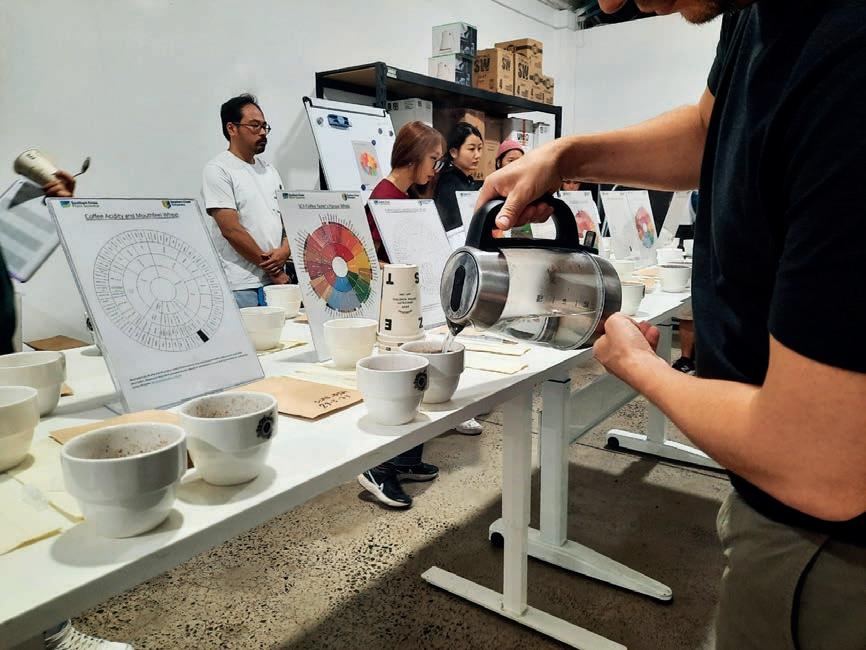
The National Coffee Association stated in a 2023 National Coffee Data Trends report that the number of people who drink cold brew regularly has increased by 60 per cent since 2019. To assist manufacturers in producing higher quality cold brew concentrates, Flavourtech has partnered with Danish water technology company Aquaporin.
See page 40.
The 2024 Melbourne International Coffee Expo will introduce the GCR Breakfast Symposium, a discussion series examining key issues in the coffee industry. The discussions will happen on the mornings of 13 and 14 May, which will take place at the Melbourne Convention and Exhibition Centre. Guests who purchase tickets to the symposium will also gain early access to the stage floor.
See page 52.
40,000 tonnes
Kenya’s current crop output per coffee year, according to Dormans Coffee Managing Director Rozy Rana.
EUROPE
Postdoctoral Researcher Joe Millard led a study published in Science Advances that compiled data from 1507 crop growing sites around the world and catalogued 3080 insect pollinator species. The data exposed a trend that the combined pressures of climate change and agricultural activities have led to substantial declines in both the abundance and richness of insect pollinators.
See page 15.
Camparino in Galleria espresso house in Milan serves about 30 kilograms of coffee per week. It is said to be very place that inspired Starbucks Founder Howard Schultz to develop the concept for the global coffee chain when visiting Italy in 1983.
See page 22.
For students of coffee who have pursued education before, the Coffee Excellence Centre offers an advanced-level course through its Certificate of Advanced Studies in Coffee Excellence. The online program is designed at the highest level where professionals are offered a comprehensive scientific education on coffee that covers the entire value chain.
See page 24.
6 GLOBAL COFFEE REPORT
The Coffee Character Wheel is a new industry tool to standardise sensory terms.
18
University.
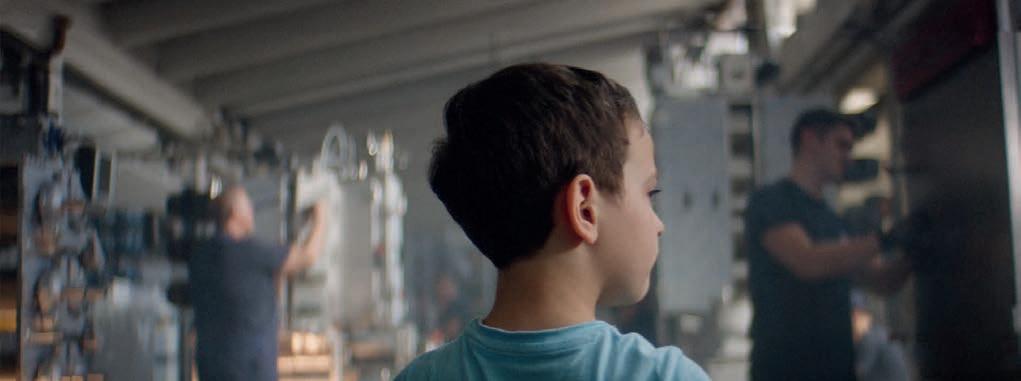
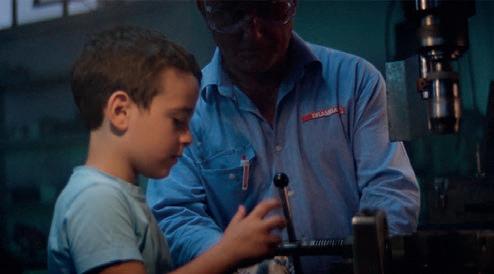


Tailor-made technology, driven by innovation Discover Brambati’s experience and continuous research in complete installations for coffee processing. BRAMBATI S.p.A — via Strada Nuova, 37 27050 Codevilla (PV) ITALY tel: +39 0383 373100 | www.brambati.it | info@brambati.it
NEWS In brief
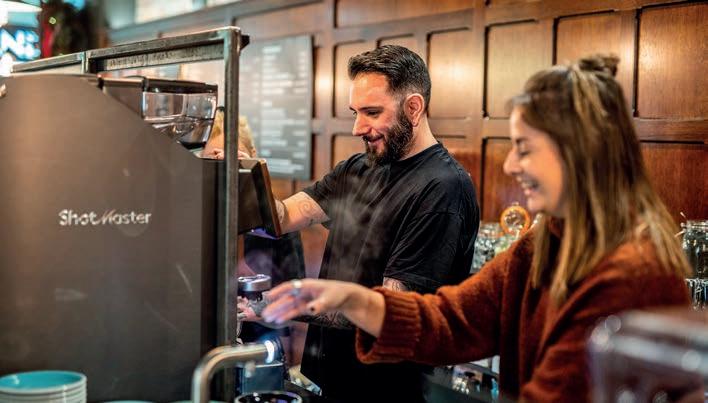
The Nespresso AAA Sustainable Quality Program has grown from 300 farmers in Costa Rica in 2003 to more than 150,000 farmers in 18 countries, creating a lasting legacy for thousands of farming families and protecting the future of Nespresso coffee.
See page 28.
Probat has launched Roastpic, an app that provides instant statistics on a coffee sample by analysing a phone photo. Roastpic’s Free and Premium versions will officially be launched at the Specialty Coffee Expo in Chicago, taking place from 12 to 14 April 2024. The Professional version will be made available during Q3 of 2024.
See page 32.
Cimbali Group has rebranded after more than 100 years. The company maintained its commitment to sustainability, hiring 53 disadvantaged workers in 2022, incorporating recyclable materials into its machines, and ensuring 100 per cent of its electricity comes from renewable resources.
See page 36.
CHF 363 million
The amount Nespresso has invested in its AAA Sustainable Quality Program since 2014.
Eversys is working with 200 Degrees in the United Kingdom to add value to its operations. Each 200 Degrees location has two Eversys Enigma E4M machines, with select shops also housing Shotmasters. The E4M can produce up to 350 espresso shots per hour at 23 seconds of extraction time, as well as 170 hot water products per hour.
See page 38.
Brambati’s grinders come in a variety of sizes and types, such as traditional models with a production capacity ranging from 100 kilograms per hour to 2500 kilograms per hour for espresso, moka pot and filter coffee. It also produces a grinder model with a capacity ranging from 50 kilograms per hour to 1000 kilograms per hour, best suited to Turkish and Greek coffee.
See page 42.
Unic’s Tango XP Duo produces up to 440 espresso cups per hour, delivered simultaneously via two independent pistons.
The Tango Solo is an evolution model that features a new single piston. The Tango XP series also manages the delivery of milk-based drinks thanks to a one-step integrated pump system, an advanced design that delivers hot and cold milk foam.
See page 46.
The WMF espresso NEXT is the first WMF machine to introduce the company’s Auto Milk Dispensing technology, which works with dairy milk as well dairy alternatives. The machine also features the One-Touch Americano function that can create the popular drink at the touch of a button. It also includes the AutoSteam concept which allows the simultaneous use of two configurable, automatic steam lances.
See page 48.
Rancilio Group has appointed Massimiliano Bizzarri as its new CEO, as of 1 January 2024.
Restaurant industry veteran John Owen joins Scooter’s Coffee as Chief Operating Officer to help lead the drive-thru kiosk franchise model.
Roel van Poppel is now responsible for scaling ofi’s ability to drive positive impact across its five leading product platforms as Chief Sustainability Officer.
Prime Creative Media has appointed Siobhan Rocks as the new General Manager of its Melbourne International Coffee Expo.
See page 58.


8 GLOBAL COFFEE REPORT
In the UK, Eversys customers prefer machines with a two-step option. Image: 200 Degrees.
he
Brambati’s
metre engineering
hosts Brambati’s
Image:
38 42
T
pilot plant and lab at
10,000 square
facility
latest equipment.
Brambati.


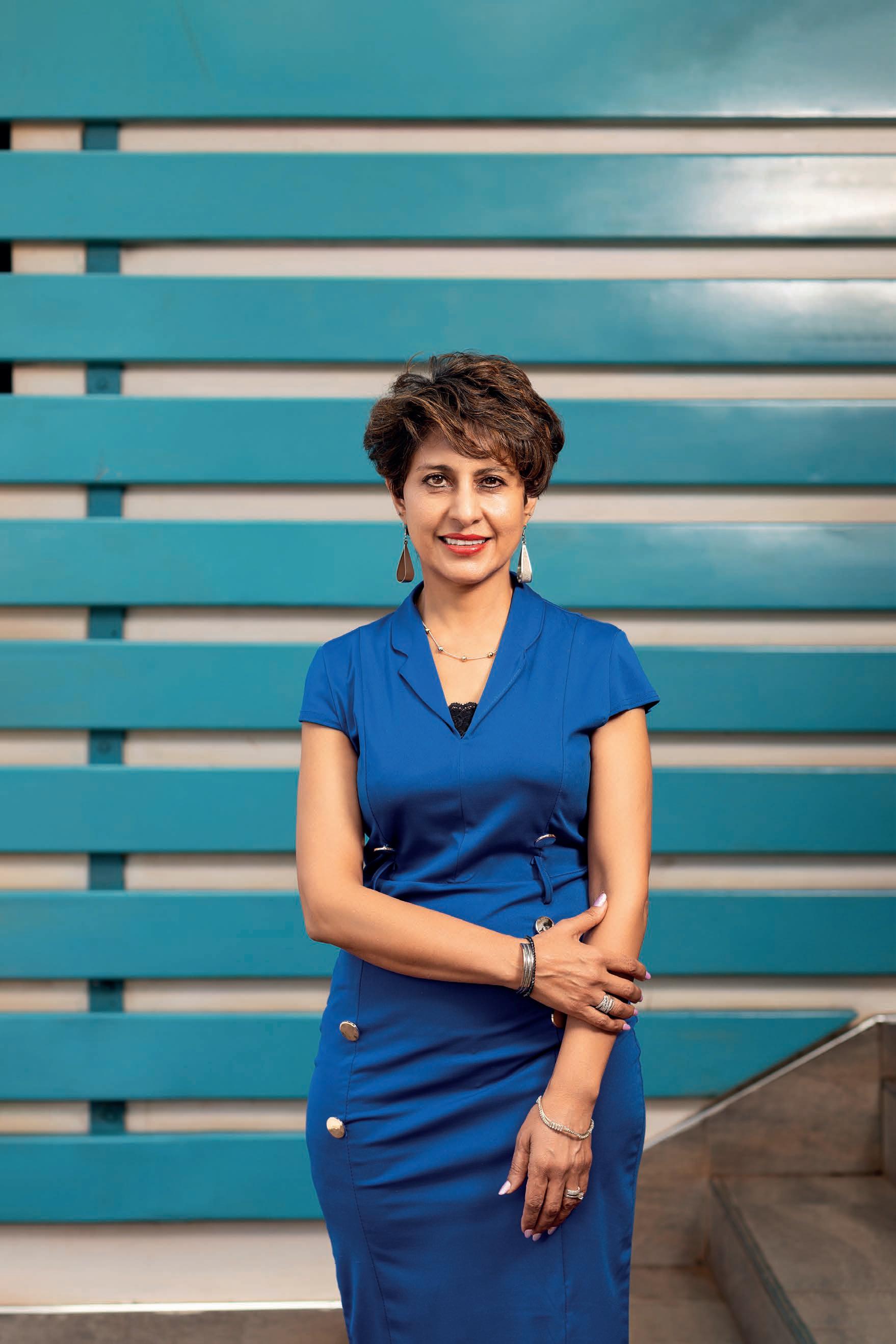
10 GLOBAL COFFEE REPORT COVER STORY DORMANS COFFEE
Images: Antony Trivet Photography

A BEVERAGE Beyond
Dormans Coffee Managing Director Rozy Rana on leading one of East Africa’s largest coffee roasters and influencing a producing community to appreciate the potential of Kenyan coffee.
KENYA HAS a “long and complex” history of producing some of the world’s highest quality Arabica coffee. Over that time, Dormans Coffee Managing Director Rozy Rana has witnessed two very different eras of production.
“When I joined [Dormans Coffee] in the 90s, Kenya’s crop output was about 100,000 tonnes. At one point, there was a big boom and coffee prices rocketed. Farmers did not understand the volatility, which was a function of global demand and supply. Some years later, the crop was on a declining trend. Farmers came out wanting direct sales and a new window opened to allow for this. Unfortunately, the trend has not reversed, and currently crop output per coffee year is about 40,000 tonnes. It's a pity,” Rana tells Global Coffee Report.
Kenya is ranked as the 16th highest global exporter of coffee, however, Rana says the decline in production is due to a myriad of factors: escalating property prices causing farmers to uproot coffee production in favour of real estate, price volatility, internal wrangles, mismanagement, an aging population and aging coffee trees, disease, regulatory changes, and changing weather patterns, among others.
For several years, Rana says Dormans Coffee has worked closely with the farming community to offer support, husbandry advice, input, climate mitigation training, financing, certification projects, and initiatives including youth and genderbased training to create more opportunities.
“Being part of the coffee industry in Kenya means contributing to the
BY SARAH BAKER
livelihoods of our staff, farmers, and workers who depend on this crop for their income. It is immensely gratifying to know my work directly supports and uplifts local communities,” Rana says.
Despite Dormans Coffee’s best efforts to support Kenya’s future of coffee production, which is largely represented by smallholder farmers, Rana says consumers still see the commodity product as a “luxury item”.
“Of the last domestic consumption report I saw, Finland had the highest per capita consumption of 12 kilograms per year. Kenya’s is 0.04 kilograms per person, representing 5 per cent of the country’s entire crop. This indicates that a fairly large percentage of the population is yet to be introduced to the coffee drinking culture,” she says.
“At Dormans Coffee, we have never stopped wanting to sensitise and grow awareness for good, locally grown coffee, and that goal remains. The country has faced economic hardships but I want to keep upselling and getting more Kenyans to truly appreciate this beautiful, rich, and diverse product with unique flavour profiles that we have available at our fingertips.
“[Coffee is] beyond just a beverage. It's an experience that reflects the exceptional quality and craftsmanship of our local coffee industry.”
Rana says the advent of Kenya’s specialty coffee shops and increased retail and supermarket presence, with support and participation from Dormans Coffee, part of the Ecom Group, has helped increase
local appreciation and consumption of espresso-based drinks. This includes education, awareness campaigns, and creating a variety of blends to suit different preferences. Dormans Coffee is also credited with starting the Nairobi School of Coffee and the Kenyan National Barista Championship to enhance the appreciation of the craft and talent of the barista profession.
Business-to-consumer sales represent a small portion of Dormans Coffee’s clientele. It closed its line of retail shops in 2012, instead focusing on the growing potential in the B2B market. The African roaster supplies a range of roasted blends to more than 1000 clients, with the top 20 businesses representing 55 to 60 per cent of Dormans Coffee’s total sales volumes. This includes independent coffee shops, distribution chains, wholesalers, retailers, supermarkets, hospitality clientele including large hotels and airlines, and an emerging third category, institutions, including brands such as pwc, Deloitte, Toyota, to name a few.
“This is a category I feel the company can grow by supplying niche offerings, either by vending solutions or hospitality packages. We definitely have goals to grow this section in 2024,” Rana says.
More than 90 per cent of the coffee Dormans Coffee roasts is sourced from Kenya. Less than 10 per cent of its coffee is sourced from other East African countries including Tanzania and Rwanda.
“Our customers prefer Dormans because we distribute directly and roast fresh daily. We have a unique model where we train
11 GLOBAL COFFEE REPORT
and audit how the coffee is made, and take pride in teaching our customers the best practices to get the most out of our product,” Rana says.
“There’s no doubt we are the largest roaster in the region. Because the market is so saturated, other roasters might be more visible by virtue of the fact that they’re in the retail space, but they are limited to Nairobi and urban regions while we distribute nationwide. From a volume perspective, and in line with current economic hardships, we find that people want more affordable, yet quality-driven products, and that’s why we are trusted. We are the leader with the most accessible and consistent range across the country.”
Rana says it is because of this ambition to deliver and control Dormans' quality output that the company maintains a growth-minded outlook.
“It’s in our DNA. I don’t think anyone doubts that. Over the years, more and more players have come in with the appreciation and belief that coffee is a lucrative business, but in order to compete we believe it’s necessary to be at the forefront of innovation that meets customer needs,” she says.
For Dormans Coffee, this means continually introducing new experiential product lines that meet customer needs. It is one of the only roasters in Kenya to have Food Safety System Certification 22000 and sell roasted Fairtrade coffee. It recently launched biodegradable capsules with a modified barrier, introduced Kenya’s first coffee premix line, and this year will become one of the first roasters in the region to invest in a drip bag machine.
“It is impossible to build and maintain a strong brand without being innovative,” Rana says.
“When I joined Dormans, our tagline was always ‘the coffee experts’, because we've always been associated with quality innovation, and that’s only grown over time. Our mission was, and remains, ‘to strengthen communities through every cup of exceptional coffee. At that time, back in 1992, I didn't know that meant sustainability because it wasn’t even a word we associated with. Today it’s a buzzword, but it’s an area we have remained strong and consistent in and will continue to tighten.”
From the ground up
Rana joined Dormans Coffee 31 years ago and is an example of where hard work, commitment, and passion can lead.
An educator by trade, Rana worked at the United Nations (Habitat) for a year before joining Dormans Group as a PA to then Managing Director, now Chairman, Jeremy Block. Rana says Block’s mentorship and guidance have played a pivotal role in shaping her journey within the coffee industry.
“Dormans was a much smaller company back when I started. I had a quest to do more, and we have. It’s been a progressive journey, but that’s what’s special about working at Dormans. It quickly became evident that working with coffee at Dormans was not going to be just a job – it’s a passion. It’s something that gets instilled in you, like a spirit,” Rana says.
A mentor once told Rana ‘the only thing that grows in your comfort zone is your waistline. If you are too comfortable, you aren’t growing’. Despite the figurative analogy, Rana has experienced different layers of growth, working as Dormans Coffee’s Human Resource Director, Chief Financial Officer, and taking on the challenge of streamlining processes across company departments. Shortly after, in 2014, Dormans Coffee split from its larger entity to run as a standalone roasting operation, and Rana was appointed Managing Director of the Group’s roasting division.
“Comfort can easily breed complacency, especially when you are among the first movers in a market. As a leader at Dormans, embracing this philosophy has been instrumental in staying on top of developments and this has enhanced our competitiveness, even during challenging periods,” Rana says.
Rana says it’s Dormans Coffee’s innovative and creative spirit, along with an unwavering commitment to quality, sustainability, and ethical practices that has kept the organisation thriving for the past 73 years.
“It is no accident that the Dormans brand has gained trust and recognition as a premier quality coffee brand. The rigorous attention to quality and value for customers is non-negotiable in all we do. In my current position, there is nothing more fulfilling than customers lauding the services delivered by my dedicated teams or speaking glowingly about our products,” Rana says.
A born leader
Rana was raised in the village of Muranga in central Kenya, a region renowned for producing exceptional coffee. But like in
most of the country, coffee consumption was sparse.
“We drank tea at home, which was seen as less elitist,” Rana says. “I had been to coffee plantations in my region, but coffee had this connotation of only being a product for export. There’s obviously a new generation and appreciation for coffee drinking in Kenya now, but in my early years, coffee was, and still remains, an aspirational product.”
Rana attributes this divide to Kenya’s “big” history. When Kenya gained independence in 1963, coffee was the biggest foreign exchange earner. As a result, Rana says coffee was heavily regulated and auctioned under the Coffee Board of Kenya (CBK) up until 2001. She notes that some of CBK’s regulations were welcome in the early days as many smallholder farmers needed protection and didn’t have the capability or logistical capacity to deal with “big overseas buyers” in the industry.
“At auctions, the dealer who bids the highest price gets the coffee, and this price trickles down to the farmer. That worked well but it also meant there was continued interference and sadly poor governance along the line. There was even greater dissatisfaction when price volatility set in because the farmer didn’t know how to hedge his or her coffee,” she says. “Kenya is renowned for having the best coffee, and perhaps has been in a fortunate position where demand from global players has outstripped supply.”
Rana says recent regulatory changes have imposed restrictions, barring companies from assuming multiple roles within the supply chain. This has resulted in firms that once played diverse roles being unable to maintain direct oversight over the sustainability of the entire coffee chain.
Rana says the government’s perspective to the farm-to-cup approach remains unclear, but what she can commit, is her drive to consolidate Dorman Coffee’s position in the market, and provide the best value and product to customers.
“I find as a woman who has grown up in the industry, many women look up to me and I feel a certain amount of obligation or responsibility. The best way to learn is by empowering. It’s about passing down knowledge and training, which has helped improve communities,” she says.
“That's growth, and I believe in the power of development. I, myself, am a lifelong learner too.” GCR
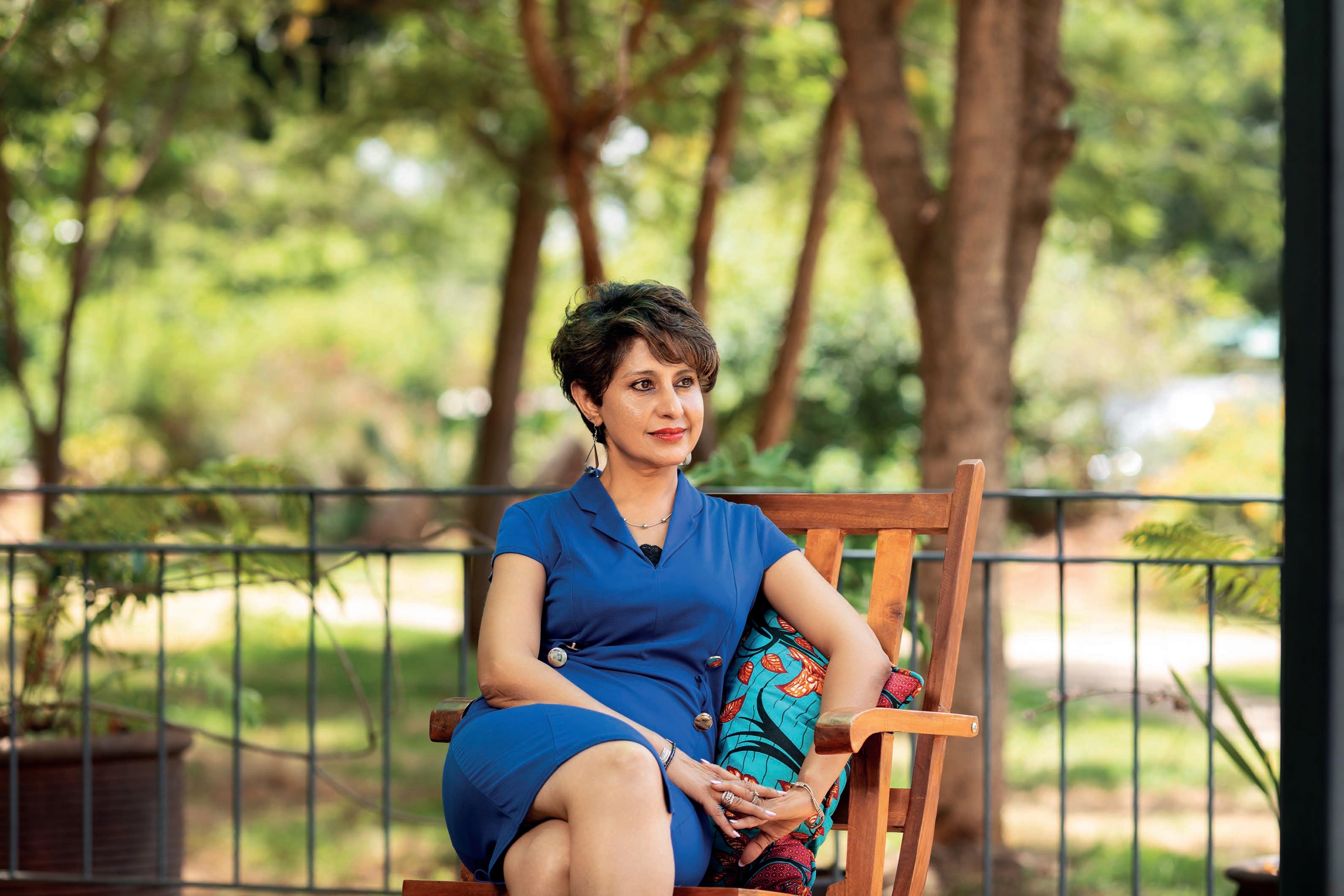
12 GLOBAL COFFEE REPORT
COVER STORY DORMANS COFFEE

It is impossible to build and maintain a strong brand without being innovative.
13 GLOBAL COFFEE REPORT
Rozy Rana
DORMANS COFFEE MANAGING DIRECTOR


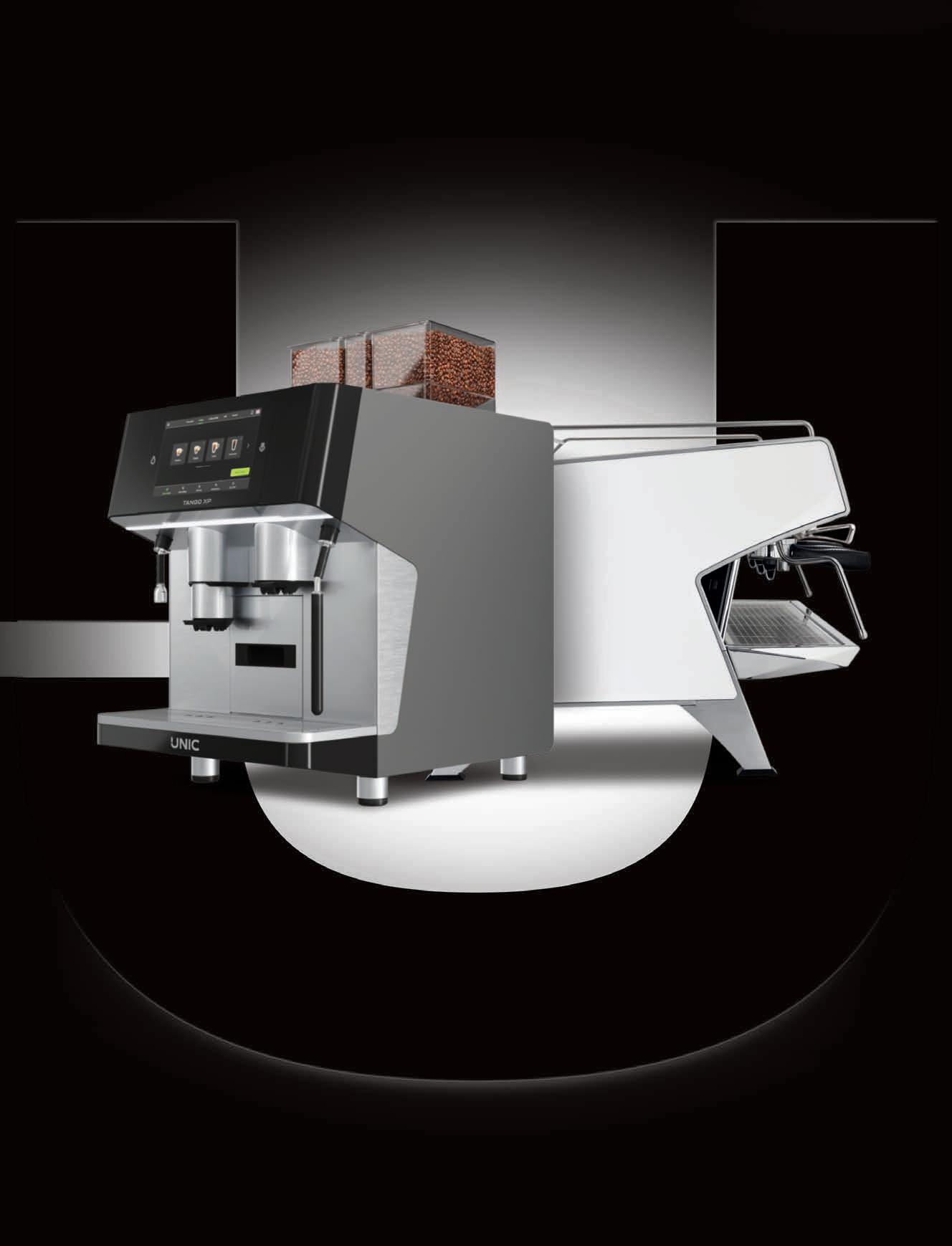

Pollinators no more

Natural History
Postdoctoral
Millard explains how climate change and habitat loss will limit the reproduction of coffee, posing a risk to its future price and availability.
CLIMATE CHANGE may be creating an uncertain future for coffee production, but it’s also having a negative impact on biodiversity which has a trickle-down effect.
A study published in Science Advances, led by Postdoctoral Researcher Joe Millard, explores the interplay between climate change, land use change, and their impact on pollinator biodiversity, revealing significant implications for global crop pollination.
“Crops such as coffee are highly dependent on animal pollinators. Coffee is mostly grown in tropical parts of the world which are warming outside of their normal range at a quicker rate, making it
highly susceptible to changes in animal pollinators,” says Millard.
The study, which compiled data from 1507 crop growing sites around the world and catalogued 3080 insect pollinator species, exposed a trend — the combined pressures of climate change and agricultural activities have led to substantial declines in both the abundance and richness of insect pollinators.
“Our research indicates that the tropics are likely most at risk when it comes to crop production from pollinator losses, due primarily to the interaction of climate change and land use. While localised risks are highest in regions like sub-Saharan Africa, northern South America, and
south-east Asia, the implications of this extend globally via the trade in pollination dependent crops,” says Millard.
“These parts of the world are, and will continue to, experience the greatest increase in temperatures outside their normal range, and are also the areas most dependent on animal pollinated crops relative to all crop production in those locations.”
To look at which regions of the world might be most affected by changing numbers of pollinators, the team made use of the Projecting Responses of Ecological Diversity in Changing Terrestrial Systems database. Natural History Museum researchers have put together a global
15 GLOBAL COFFEE REPORT
FEATURE INSECT POLLINATORS
Coffee plants rely on the pollination of insects to increase yields. Image: sulit.photos/ Shutterstock.com.
Museum
Researcher Joe
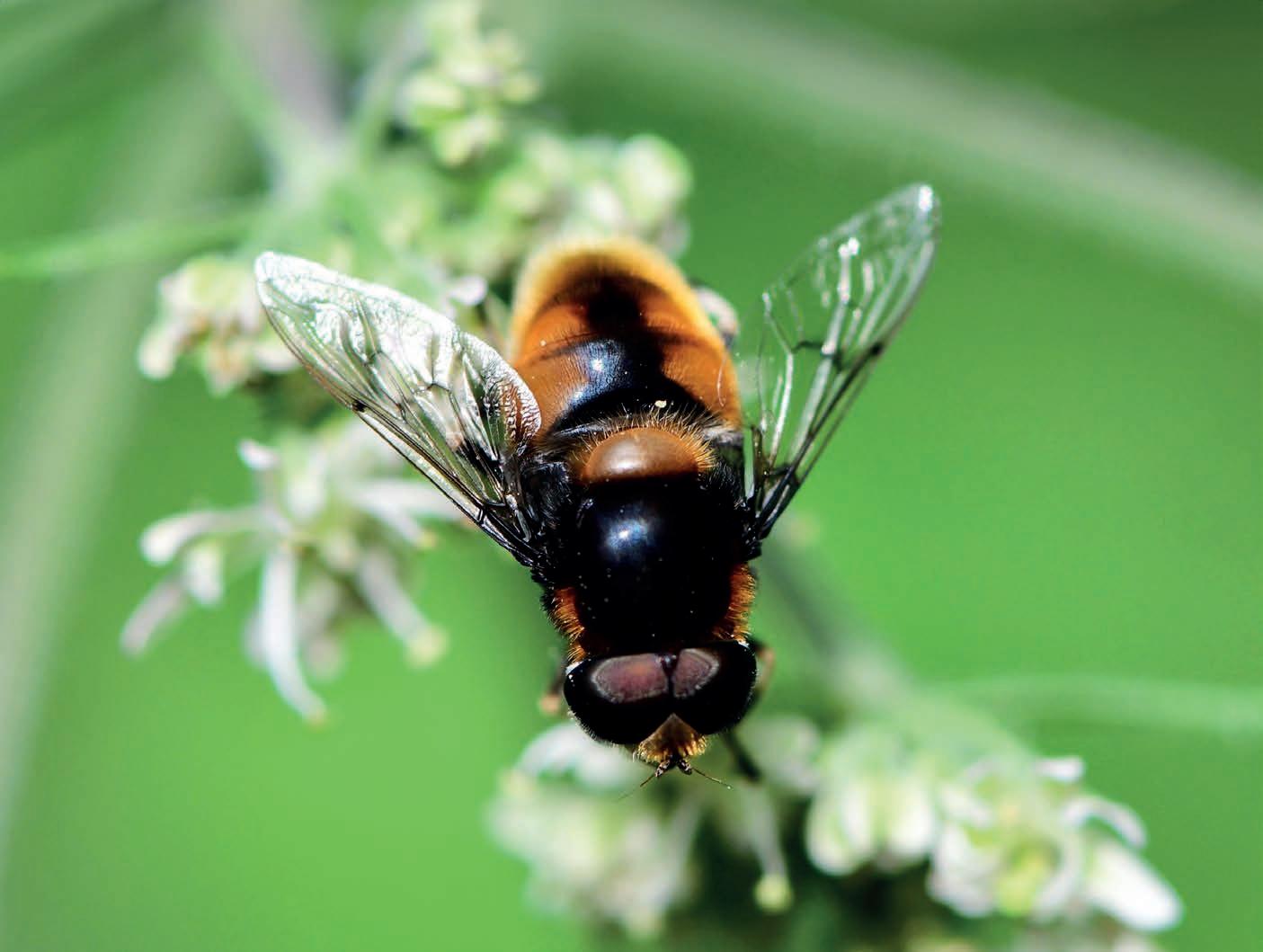
dataset which is used to understand how biodiversity is changing in response to land use.
By combining this data with information on climate change and crop pollination globally, the team could predict how crop production might be affected in the years to come.
Their results suggest the tropics, which are already likely to have been affected by pollinator loss, will start experiencing more significant changes. This means crops such a coffee, cocoa, mango, and watermelon –which all rely on insect pollination – are at the greatest risk.
These crops play vital roles in local economies and global trade, and their reduction could cause increased income insecurity for millions of small-scale farmers in these regions.
“As insects decline due to being unable to cope with the interacting effects of climate change and land use, so too will the crops that rely on them as pollinators. In some cases, these crops could be pollinated by hand, but this would require more labour and more cost,” says Millard.
“It’s likely coffee producers are already experiencing these negative effects in reduced yields, pricing, and, in turn, their livelihoods.”
Millard states that even countries with low production risk may feel the impact of pollinators losses and the crops that depend on them.
This could occur through disruption to imports, especially as vulnerable crops like coffee and cocoa are valuable export products.
“Large countries such as China and the United States have the highest total import risks. The Netherlands also has unexpectedly high risk given its size, the third largest overall import risk. Import risk per capita highlights the challenges that could be faced by nations with limited agricultural production capacity, such as many island countries like The Cayman Islands and Singapore, or countries with unfavourable environmental conditions for agriculture like Mongolia,” he says.
“Total import risk per capita tends to be high also in northern and high-income countries, particularly continental western
Europe, which has large processing industries for crops such as coffee and cocoa. High income and unfavourable environment for agriculture could also account for high import risk per capita for some countries in the Middle East.”
Millard continues that predictions of import risk are based on trade patterns in the present day, meaning it does not account for changes in trade flows that will likely occur in the future.
“Our approach also assumes all crop production produced in a given country is exported. In other words, we used our trade pattern data to determine how production at risk within a given country should be split among its importers, but did not have a value for the proportion of production staying in that country,” he says.
According to the study, by 2050 crop production in some of the world’s most populated countries, including India and Brazil, will be at the greatest risk of pollinator losses.
This will likely significantly affect crops such as coffee, and as these plants are common in small, family-run farms across
16 GLOBAL COFFEE REPORT
FEATURE INSECT POLLINATORS
Pollinators covered in hairs are less able to tolerate rising temperatures.
Image: Gerrit Lammers/Shutterstock.com.

the tropics, the loss of income could push many into poverty.
On the bright side
One way to mitigate the issue, Millard says, may be to allow patches of natural habitat to grow among cropland. This can provide a refuge for pollinating insects and maintain a more suitable microclimate.
“There are also other solutions that can help. It may be possible to breed varieties of these plants that can reproduce without pollinators, as has already been seen in some crops,” he says.
“Other technological solutions, like pollination by hand or through artificial means, are already used on a large scale for crops like vanilla. To buffer against pollinator declines, it might become more common in crops, but this will increase the production cost.”

Ultimately, Millard says the main way to reduce these risks is to tackle them at the source.
“Significantly reducing greenhouse gas emissions by 2030 will help to limit the







worst effects of climate change, while preserving and restoring habitats will help pollinators to recover,” he says.
“We’re not saying coffee is going to
be extinct by 2050. However, we want to highlight that it might become harder to grow coffee in certain parts of the world in the near future.” GCR
 Allowing patches of natural habitat to grow among coffee crops may provide a refuge for pollinating insects.
Allowing patches of natural habitat to grow among coffee crops may provide a refuge for pollinating insects.
flavourtech.com LEARN MORE about our technologies RTD & COLD BREW COFFEE unique Processing Technology for with High Impact, Natural Flavour Extraction & Brewing Cold Brew Concentration Aroma Concentration Continuous Process Lines Aroma Recovery
Image: Marcelo F Junior/Shutterstock.com.

Speak the same language
Global Coffee Report talks to Dr Simon Williams and Danny Andrade about the development of the Coffee Character Wheel, a new industry tool to standardise sensory terms.
DESCRIBING THE flavours of coffee has just become a whole lot easier.
Southern Cross University (SCU) and education platform Processing Methods Bootcamp, in conjunction with research organisation AgriFutures Australia, have unveiled a Coffee Character Wheel to homogenise the way the global coffee industry refers to the sensory terms acidity, mouthfeel, and aftertaste.
“Flavour can be very subjective, depending on your background, memories, and taste preferences. The Coffee Character Wheel, which focuses on characteristics, is more objective and allows people to agree easily on coffee descriptors,” says 2023 Australian Coffee in Good Spirits Champion (CIGS) and Founder of Processing Methods Bootcamp Danny Andrade.
The Coffee Character Wheel is a colour-
coded visual glossary of terms, created to establish a common language for producers and consumers.
“Many sensory terms have been used to describe these attributes, but there is no clear summary or discussion around the terms used. By analysing the terms used currently we can create mutual descriptors for coffee character,” says SCU’s adjunct researcher Dr Simon Williams.
Andrade says it is important to expand the conversation around acidity, aftertaste, and mouthfeel descriptors so the global coffee industry is on the same page.
“For example, traditionally, if I talk about a coffee that has floral aromas and berry fruity notes, you might guess it’s a natural processed Geisha from Panama, as Panamanian Natural coffees often have these flavour notes descriptors. But suppose I say the coffee has floral aromas,
with notes of blueberry, and has bright, vibrant acidity. In that case, it’s much easier to identify that the coffee might be from Ethiopia,” he says.
“Coffee is also evolving very fast, thanks to experiments in fermentation and postharvesting processing, which contributes to the characteristics of coffee. These descriptors will help coffee professionals identify and express the fermentation and post-harvest processes used.”
Williams says the Coffee Character Wheel expands on the original Specialty Coffee Association (SCA) Coffee Taster's Flavor Wheel by including what they believe were the previously missing elements.
“For coffee aroma and flavour, we standardise to the well-known Coffee Taster's Flavour Wheel. However, during our tasting panels, we also identified
18 GLOBAL COFFEE REPORT
FEATURE COFFEE CHARACTER WHEEL
Images: Southern Cross University.
Coffee panels were used to highlight the sensory terms acidity, mouthfeel, and aftertaste.
many coffee descriptions for Australiangrown coffee beans related to coffee acidity, mouthfeel, and aftertaste. These descriptions have not been discussed widely in the literature,” he says.
“The acidity, mouthfeel, and aftertaste are also essential characteristics of coffee. We summarised these descriptions and created the world-first Coffee Character Wheel.”
More than flavour
Williams and Andrade, in collaboration with SCU Researcher Dr Ben Liu, helped develop a research paper published in the Journal of Sensory Studies that explores the creation of the Coffee Character Wheel. The process involved collecting thousands of coffee descriptions from cupping panels and coffee literature.
“Danny provided industry support and advice, and helped us run the coffee panels. He also assisted with the language used in the research paper, ensuring it made sense to the people in the industry,” Williams says.
“I developed much of the data analysis and set the guides to ensure we had minimal overlap with descriptors already on the [SCA] Flavor Wheel.”
According to the research paper, coffee is assessed and marketed on its fragrance/ aroma, flavour, aftertaste, acidity, and body/ mouthfeel. Yet, only the fragrance/aroma and flavour have standardised sensory descriptors and lexicons. The World Coffee Research (WCR) Sensory Lexicon has standardised aroma and flavour sensory terms to create a common sensory vocabulary for research and industry.
“Currently, coffee professionals and researchers use a range of descriptors, with some terms used interchangeably and others overlapping with flavour terms,” Williams says.
Coffee gains its acidity from its combination and intensity of chlorogenic acids, carboxylic acids, and phosphoric acid. Coffee acidity can be described in three ways: the pH of the coffee representing the dissociation of ions into the coffee from acids contained in the coffee, the sour taste imparted to the coffee from said acids, and the character provided to the coffee from the acids. Coffee pH can be measured via instrumentation, and the sour taste can be described using the WCR Sensory Lexicon. Many sensory terms such as bright, sharp, mellow, low, and flat describe the character of the acidity when coffee is assessed. However, little research
Coffee Character Wheel

has been carried out to summarise the sensory terms used to portray the character of coffee acidity.
The study says the tactile experience of drinking coffee is often described by the coffee's body or mouthfeel, with the two terms used interchangeably. Body is favoured when reporting on the quality of coffee, as it forms one of the assessed categories in the standard industry method. However, the term mouthfeel is used more broadly within coffee literature and other industries when a more detailed description of the tactile response is required. In general, mouthfeel covers the texture and body of the coffee. Body reflects the weight and viscosity of the coffee. According to the study, though there is agreement in using 'mouthfeel' as a broad primary term, a range of related but different secondary terms provide more specific descriptions.
Aftertaste or finish is the residual sensory
experience that remains in the mouth after the coffee is removed, according to the research paper. The residue coats the oral cavity and releases volatile compounds which are detected as the aftertaste. The released chemicals in the residue correlate with the least soluble compounds that generally belong to the nutty/cocoa, roasted, or chemical flavour groups found in the WCR lexicon.
“We realised there were a lot of similar descriptors of flavour, especially for mouthfeel and acidity, used by our panellist cuppers. There was a lot of misunderstanding about the difference between flavours and the characteristics of the coffee, what words like ‘apple’ or ‘heavy’ or ‘full’ actually meant, because there was no tool to guide them,” Andrade says.
A total of 679 unique sensory terms identified for acidity, mouthfeel, and aftertaste were distilled into a total of 95
19 GLOBAL COFFEE REPORT
The Coffee Character Wheel is a colour-coded visual glossary of terms to describe coffee character.
terms, and included an overall grouping for shared terms. The reduced terms were arranged onto a Coffee Character Wheel organised from broad to specific to assist cuppers.
“During our coffee panels investigating the terroir of Australian-grown coffee, the list of descriptors was getting out of hand, so we brought in earlier versions of the Coffee Character Wheel which helped impose some control over how many sensory terms we had,” Williams says.
FEATURE COFFEE CHARACTER WHEEL

Andrade says the study was released at “the perfect time” (in September 2023), right before he won the 2023 Australian CIGS.
“I was able to use the interest from competing in the worlds to boost the promotion of the Coffee Character Wheel as an education tool,” he says.
The wheel is currently available to download for free on AgriFutures’ website, titled ‘Defining the terroir of Australian coffee’.
Aussie made
The Coffee Character Wheel was also designed to help build demand for Australian-grown coffee beans. According to SCU, the green bean market in Australia is worth AUD$1 billion, yet the majority of beans are sourced internationally. What's unique about Australian-grown coffee, is a set of characteristics unlike any other region.
“Using the Coffee Character Wheel, Australian-grown coffee has been described as having a low-medium intensity acidity with citric acid and malic acid characters similar to apple and berry,
a smooth texture and light medium body mouthfeel, a medium-long aftertaste, and flavours described as fruity and nutty,” Williams says.
“This sort of information will allow us to inform consumers that Australia is a sophisticated and established coffee producer with enormous potential based on the unique characteristics of the region where that coffee is grown and produced.”
AgriFutures Australia and SCU have produced the 'Defining terroir of Australian coffee to increase demand and investment report' which summarises an investigation into coffee terroir, especially the terroir of Australian-grown coffee.
More than 100 Australian-grown singleorigin green beans from 28 farms were analysed, along with an additional 50 international single-origin green beans.
20 GLOBAL COFFEE REPORT
Danny Andrade helped coordinate 138 panellists to define taste descriptors in coffee-tasting panels.
The green beans were roasted using a fixed roast profile to ensure equal treatment and then tasted by 15 coffee panels across Australia. The panellists included coffee growers, green bean buyers, roasters, baristas, trainers, and coffee judges.
“The coffees were de-identified and given to 138 panellists to taste at our coffee-tasting panels. We also generated comprehensive chemical fingerprints of the brewed coffee prepared for our panels. The coffee descriptions and chemical fingerprints of the brewed coffee were analysed by machine learning algorithms. A machine learning model was also created to predict coffee terroir based on chemical fingerprints alone,” Williams says.
“We used word clouds to highlight the sensory terms used by panellists to describe the coffee terroir. Even though we provided the [SCA] Flavor Wheel and our Coffee Character Wheel during the assessment, panellists still used a range of sensory descriptors outside of those on the wheels.
“We confirmed that Australian-grown coffee is sweeter, nuttier and fruitier in flavour. This pleasant terroir is probably due to the cooler temperature in our coffeeproducing areas.”
Williams says the produced terroir profiles will enable coffee producers to define and communicate the unique characteristics and flavours of their coffee based on published research.
“Allowing Australian coffee to differentiate itself in the global market can potentially result in higher prices due to its distinct qualities. With a more welldefined understanding of the terroir and its impact on coffee flavour, consumers who appreciate high-quality specialty coffee may develop a stronger preference for Australian single-origin coffee,” Williams says.
“This could increase demand for Australian coffee in domestic and international markets, improve efficiencies, and lower production costs.”
Williams adds that increasing industry cooperation will create more resources
within the Australian coffee industry.
“The flow of ideas can lead to a growth of interest in the industry, leading to increased demand, investment opportunities to increase current coffee farm size, or the establishment of new coffee farms,” he says.
Coffee professionals utilised the project cupping panels to establish connections and communicate ideas.
Williams says establishing regular cuppings of Australian-grown coffee, facilitated by a third party, would create opportunities for coffee professionals to come together and discuss Australian coffee with less perceived bias. He says events open to the public would also allow Australian-grown coffee to reach larger audiences.
“Industry cooperation, with a focus on promoting the unified Australian coffee terroir of sweet, nutty, and fruity flavours, can give Australian-grown coffee a competitive advantage against international coffee, especially in the domestic market,” he says. GCR
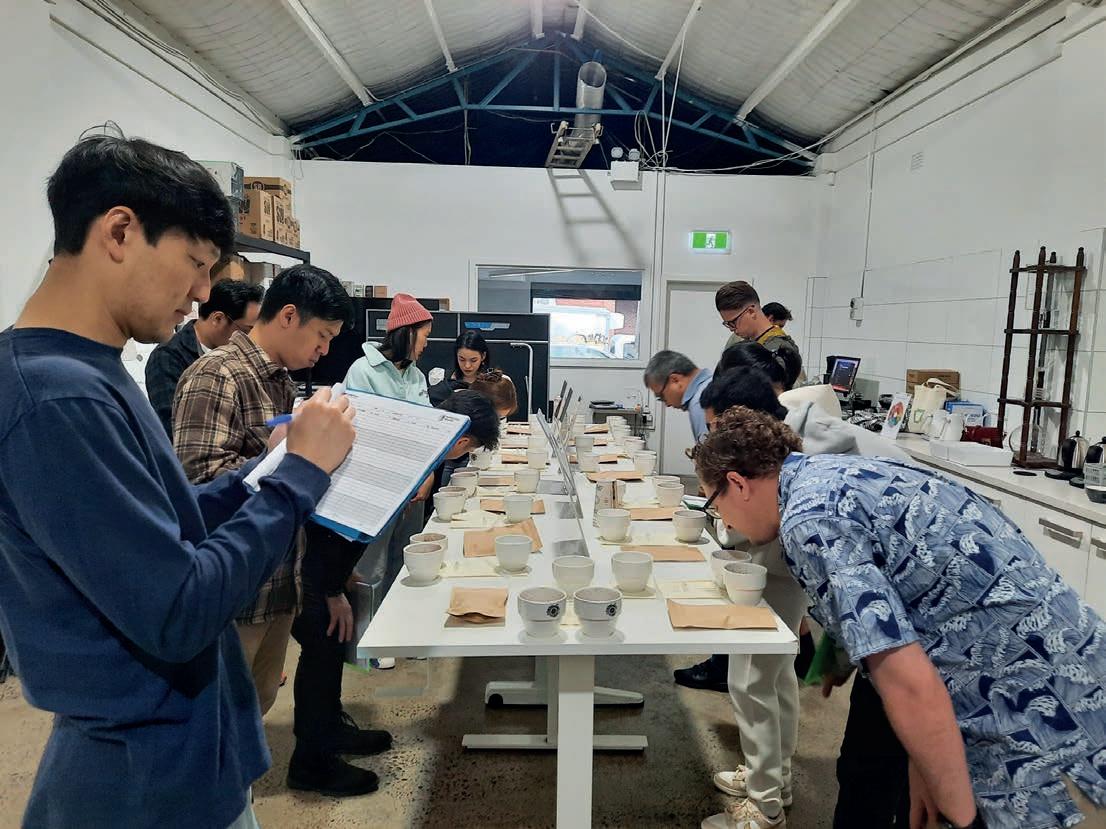
21 GLOBAL COFFEE REPORT
Thousands of coffee descriptions were collected from cupping panels and literature.
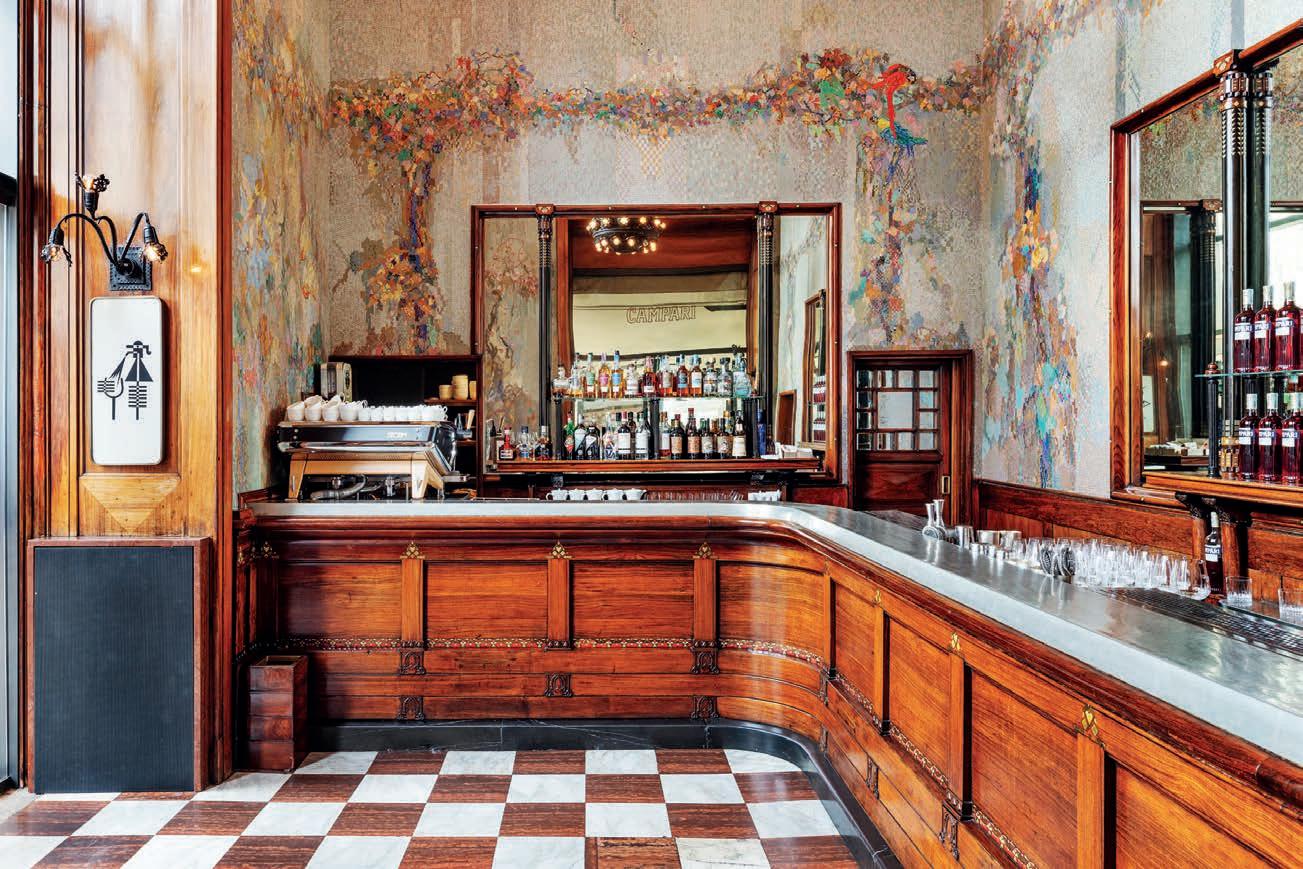
A Milanese icon
Camparino in Galleria enthuses the quintessence of Milanese aperitivo, with its espresso house and Campari bar experience inviting guests to explore the same beauty Starbucks Founder Howard Schultz once did.
WHEN VISITORS to Milan exit the Duomo station and look up, they are greeted with the sheer size and beauty of the city’s cathedral. To the right, in Galleria Vittorio Emanuele II, lies Camparino in Galleria, which, for coffee fans, offers almost the same religious experience.
Starbucks Founder Howard Schultz first visited Camparino in Galleria in the 1980s. It was this voyage to Milan, to attend an expo, and his first steps into Camparino in Galleria, that are said to have been the catalyst for his quest to develop an espresso-based coffee shop.
“I was exposed to something that completely lit a fuse inside me,” Schultz said in a YouTube interview with Graham Bensinger while seated in Camparino in Galleria, “the place where it all started”.
Schultz was overcome by a “lightning bolt of opportunity”, impressed by how highly trained and professional the baristas were, noting their sense of pride and integrity, and the ritual of people coming

back to the same coffee bar every day.
According to Tommaso Cecca, Global Head of Camparino Licensing and Mixology at Camparino in Galleria, Schultz would have been easily impressed by the beauty of the bar, and the energy of the Milanese people.
“[Schultz] said that the idea of Starbucks’ concept came out during his experience in Camparino in 1983, reading the newspaper and taking inspirations from routine of services the staff provided to the customers,” says Cecca.
Schultz once stood at the historic Bar di Passo, taking in the ambiance and beauty of the chestnut-wood espresso bar. Forty years on, the bar counter has undergone a conservative restoration aimed at enhancing its historic and Art Nouveau heritage, including the illuminations, mosaic, and coffered ceiling. A full-height wall, decorated with original historical bottles and objects that tell the brand’s history, accompanies customers through the three rooms of the venue, located on
22 GLOBAL COFFEE REPORT
FEATURE MILAN
Images: Melania Dalle Grave
Camparino in Galleria is located in Galleria Vittorio Emanuele II in Milan.
Camparino in Galleria in Milan was founded in 1915 and remains a historical coffee house.

the second floor, ground, and basement.
Davide Campari founded Camparino in Galleria in 1915. The bar was opened across the street from Caffè Campari, the establishment which Gaspare Campari, Davide’s father, founded in 1867.
Thanks to its strategic position in Piazza Duomo, the beating heart of Milan, Camparino in Galleria attracts international customers fascinated by the venue’s heritage and aperitif culture.
“Since its founding, Camparino in Galleria has been considered an icon and symbol of the aperitivo par excellence. It is strongly linked to the city of Milan and the artistic and cultural context of the 20th century,” Cecca says. “Besides being a meeting place and home of the Milanese aperitivo, it is also a symbol of excellence and pride for the city, which over time has been able to establish its prestige in the beverage and mixology scene in Italy and beyond.”
Camparino in Galleria is not only famous for aperitivo. It strongly believes in the quality of the food and coffee it serves.
“Coffee is considered one of the most important rituals,” Cecca says.
“We are famous for several things, and Italian quality is one of them. In Camparino we cannot give a different level of service and quality [other] than the best, with the best product and the highest standards at every moment of the day. This is our style.”
Camparino in Galleria serves about 30 kilograms of coffee per week via its Storm espresso machine from Barista Attitude. It serves Lavazza’s single origin Kafa, which Cecca says expresses acidity and freshness, and Alteco Bio as a blend, to guarantee a rounded coffee flavour.
“[Maintaining quality] is our main and most challenging duty every day as we’re open to the public 362 days per year. Consistency is one of the most important keys to success and I think Camparino is a brilliant representation of longevity and iconicity in the world,” Cecca says.
When the morning espresso round is complete, classic cocktails such as the Campari Seltz or Negroni served at Bar di Passo room, are a reminder of the host city of Milan. Cecca says cocktails in Sala Spiritello are a true laboratory experimentation that combines bold and traditional ingredients. Camparino in Galleria is synonymous with excellence in the art of mixology, but also offers guests a culinary experience of the best pairing of food and cocktails. Coffee cocktails have even made their way onto the menu, with

Cecca’s favourite, the Hazelnut Espresso Martini, using Frangelico liqueur instead of coffee liqueur.
“This is a cocktail that pairs the subtle sweetness of Italian hazelnuts with the bitterness of espresso, creating a truly harmonious experience with complex, yet smooth and rich, balanced flavours,” Cecca says.
Cecca is proud to call Camparino in
Galleria his daily office. He says it’s the bar’s guests, however, that represent a diverse mix of nationalities and cultures, with very different backgrounds among them.
“Camparino’s doors are always open to welcome millions of guests, and this perfectly represents the soul of Milan as an inclusive and international city,” Cecca says. GCR
23 GLOBAL COFFEE REPORT
Camparino in Galleria serves its signature coffee and Negroni offerings with a view.

Back to school
There’s no shortage of education platforms around the world, but when it comes to coffee education, what’s on offer? GCR looks at the evolution of programs dedicated to upskilling and empowering coffee enthusiasts to turn an interest into a career.
IT HAS LONG BEEN said that most coffee professionals simply “fall into” the industry instead of undertaking a university pathway with a coffee degree rewarded at the end. Establishing a career in coffee takes time and experience. For many, it’s a labour of love, but that’s no longer the only option.
The Coffee Excellence Centre (CEC), founded in 2008 in Switzerland, offers an advanced course through its Certificate of Advanced Studies (CAS) in Coffee Excellence.
The online program is designed for the highest level of coffee training, where professionals are offered a comprehensive scientific education on coffee.
“We wanted to add a program that wasn’t competing with existing programs but complemented what was already available,” says Head of CEC Prof. Dr. Chahan Yeretzian, who noted a knowledge gap on a scientific level.
“We offer an education to those who already have knowledge of coffee who want to add science to their craft. What students look for particularly is aligning their coffee knowledge to scientifically validated content to create a community of coffee experts and education that shares a common, science-based language.”
The 15-month program includes six to eight hours of classes per week, depending on the experience of the student. It covers the entire value chain while promoting a holistic understanding of coffee. Through this, students learn and realise that each component of coffee is connected to create cup quality.
The curriculum consists of three distance learning modules. The first, The Coffee Fruit: From Tree to Trade, examines all aspects of the coffee cherry in origin countries, considering important aspects of botany and the role of agronomic and postharvest processing practices on the farm to
improve yield and quality.
The second module, The Coffee Bean: Transformation and Composition, covers the physical transformation and chemical composition of green coffee to roasted beans.
The third module, The Coffee Cup: Extraction and Sensory, looks at the vital role water composition and machine technologies play in the quality of a brew.
“We develop a lot of unique and novel knowledge, and we often do that through research partners within companies,” Yeretzian says.
He says the ideal student for the program would have vast experience in the coffee sector and pursued further coffee education in the past.
“Ideally, we would like people who already know the craft and even know how to taste coffee properly,” he says.
While the classes are largely scientific, there is no prerequisite for extensive

24 GLOBAL COFFEE REPORT
FEATURE EDUCATION
Coffee Quality Institute’s mission is to train, educate, and certify coffee professionals.
Image: Coffee Quality Institute.

chemical knowledge, as Yeretzian says the program teaches rudimentary levels of chemistry. Students have come from a number of different undergraduate degrees, including economics.
“The level of people who come in for coffee education programs is very different now compared to 10 years ago,” Yeretzian says. “People are showing interest because coffee is becoming such an important field.”
In addition, he says the CEC education can assist students in working with larger roasters, given the emphasis many of these businesses have on research and development.
“Students can easily do their own research once they are properly educated,” he says.
Knowledge is power
In the United States, Bill Ristenpart
“In 2012, my colleague [Prof. Tonya Kuhl] and I were sitting around drinking coffee, thinking about how we could improve our senior level chemical engineering unit operations,” he says. “She looked at her coffee and suggested we have our students reverse engineer a cup of coffee, and that prompted us to make a whole course.”
The course’s first class, The Design of Coffee, teaches students the principles and practice of brewing. What began with 18 students enrolling initially has grown to more than 2000 taking part in the 2023/24 academic year.
“A lot of students like coffee, but don’t know anything about it,” Ristenpart tells Global Coffee Report. “[The class] serves its purpose as an academic pipeline [to the coffee industry].”
The university now offers two further
consumption over time.
The UC Davis Coffee Centre is also hoping to become one of the first universities in the US to offer a master’s degree in coffee sciences, allowing future students to remain at the university for further coffee education.
“Some students have fallen so in love with coffee that they’ve pursued graduate degrees elsewhere and have ended up working in the coffee industry,” he says.
The steady growth of success of the UC Davis Coffee Centre begs the question: why aren’t more universities offering coffee degrees in the US?
The answer, according to Ristenpart, stems from governmental funding decisions dating back to the 19th century. In California, laws were put in place to prioritise education on the production

25 GLOBAL COFFEE REPORT
Head of the Coffee Education Centre Dr. Chahan Yeretzian (fourth from right) says the institution is committed to developing unique and novel coffee knowledge. Image: Coffee Education Centre.

“Without government support for coffee, there was no academic research fund, and without that, there were no professors.”
Ristenpart adds the US has traditionally focused on agricultural exports produced domestically when it comes to education, including wine and even tree nuts.
The lack of specialised education at tertiary institutions in the coffee sphere has not prevented people from entering the coffee industry. Organisations such as Coffee Quality Institute (CQI) can provide the tools necessary for coffee professionals around the world and throughout the value chain to achieve greater knowledge of the industry while on their way to a Q Grader certification.
“CQI was founded to train, educate, and certify coffee professionals,” says CQI outgoing Interim CEO Bridget Carrington. “The institute was created as an educational trust in 1997 in order to use donor funded money to work in origin countries.”
The Institute’s mission is to enhance the lives of coffee-producing farmers around the world, which is why the majority of its education services extends worldwide.
“CQI provides Arabica and Robusta courses in both sensory evaluation and post-harvest processing,” Carrington says. “The courses are tiered from entry to professional level.”
The institute features a network of professionals and instructors from around the world, including Latin America, Africa and the Far East.
It trains and certifies instructors, preferably from the countries in which
classes will be taught, who then teach the material to their students.
“We only have a staff of 15, but we have 80 instructors around the world. When combined with the lecturers that teach our classes, the number of CQI educators exceeds 200,” Carrington says.
When participants have advanced through the courses, they are awarded Q Grader certification for either Arabica or Robusta, which Carrington says is a "gold standard" for the coffee industry.
“In many farms and mills, these days you need a Q Grader certification to even get a job,” she says.
The students not only walk away with the required verification, but with a new network of coffee professionals they can learn from and lean on.
“If we’re going to create this common language, then people should be able to talk about coffee in the same way,” Carrington says.
She says the program is constantly under review, as CQI hopes to best equip its students with knowledge that can prepare them for the future, adjusting for factors such as climate change and urbanisation.
“We need to move with the industry, so we’re looking constantly at our programs and how we can improve them,” she says.
A similar desire for advanced education is also what drives the Specialty Coffee Association (SCA), which reaches more than 40,000 participants annually through its authorised trainer network.
Aspiring students can enrol in three separate educational programs. The Coffee
Skills Program includes courses on barista and brewing skills to green coffee buying, roasting, and sensory evaluation. The Coffee Sustainability Program explores how to develop more environmentally, economically, and socially sustainable organisations in the coffee industry. The Coffee Technicians Program helps students understand how to maintain and repair equipment.
“In 2016, professionals from the manufacturing and technical support community came together to form the Coffee Technicians Guild, which championed the creation of a training program for those who support coffee equipment,” says SCA Education Officer Dorit Lessard.
“Despite the name, the courses are designed for anyone who wants to better understand and support their coffee equipment.”
Lessard says the courses have attracted a wide range of participants, including practicing technicians and baristas looking to better understand the coffee machine industry.
“It’s a program that had been years in the making, and we have seen a very high demand for it,” she says.
According to Lessard, employers of all sizes had communicated with the SCA in the past about the need for staff who demonstrate a mastery of skills in a specific area. This is what each course seeks to accomplish.
“Each program includes live instruction, either in-person or online,” says Lessard.
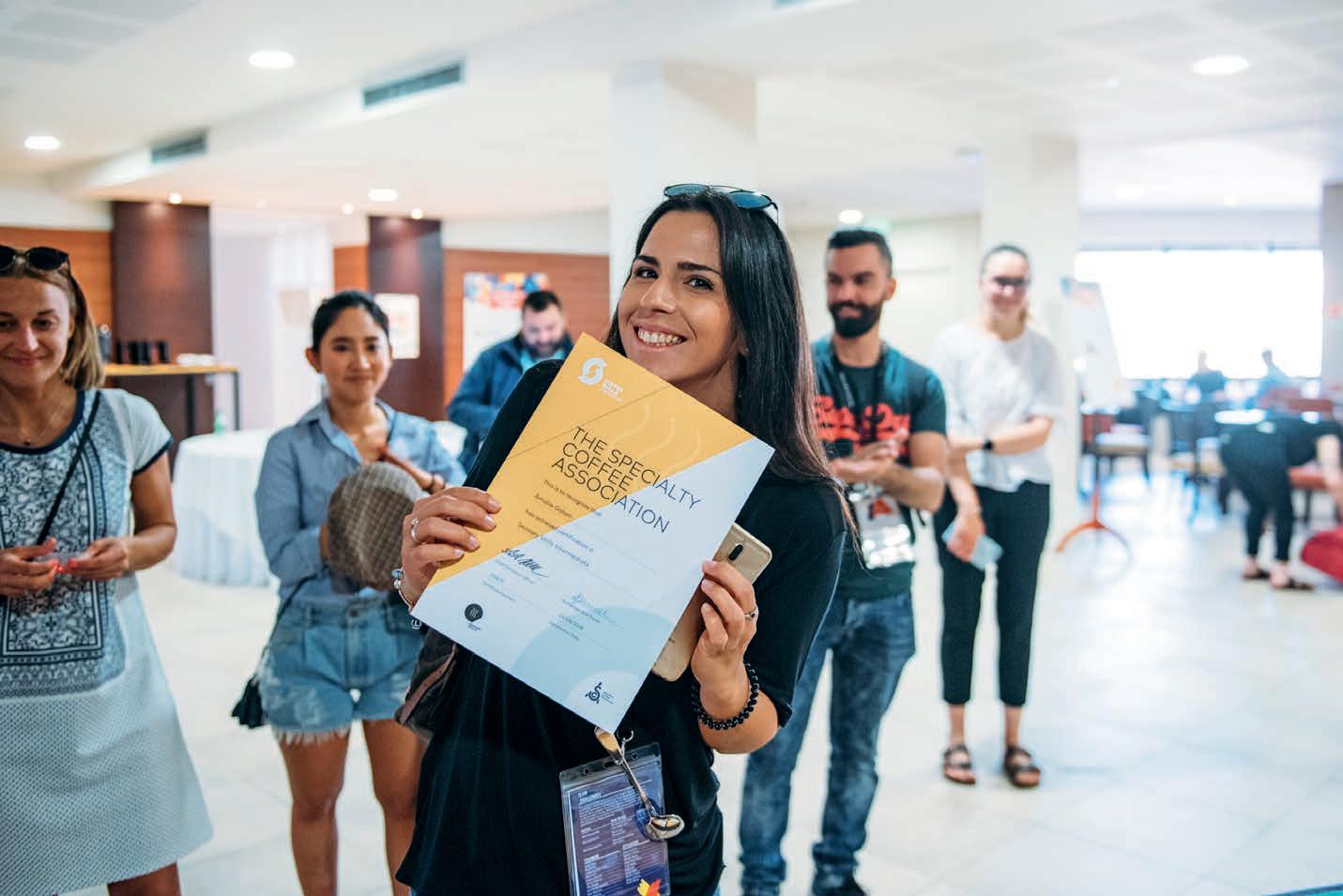
26 GLOBAL COFFEE REPORT
FEATURE EDUCATION
illycaffé hopes to impart the knowledge that has helped the company run for more than 90 years. Image: Università del Caffè.
“Each course has been carefully reviewed by industry practitioners to ensure the content is relevant and accurate.”
SCA trainers and industry practitioners who have passed qualification tests run the program's courses. There are more than 1800 authorised SCA trainers across the globe who lead the courses for each program. Following course completion, students take an online written exam, which is available in multiple languages.
“The courses have been designed to make the program as accessible as possible while maintaining the delivery standard of live instruction,” Lessard says. “Our chapter network [at the SCA] has been critical in spreading our certificate programs around the world.”
The courses are designed with adult learners in mind, where students can gain skills to bring to the workplace anywhere in the coffee industry.
Those who develop the curriculum bring a wealth of industry experience while factoring in past and future coffee market trends.
“We have created robust review structures that allow us to incorporate feedback from our global community, which includes
has completed advanced training in specific areas while also being exposed to a broad view of the industry, including a good understanding of the fundamentals of sustainability,” says Lessard.
“The SCA certificate programs are an excellent way to distribute contemporary research, standards, and tools.”
Additionally, the SCA collaborates closely with Zurich University of Applied Sciences (ZHAW) in an effort to implement the CAS in Coffee Excellence. The partnership is the start of a broader goal for the SCA to work with multiple universities around the world to create opportunities to teach specialty coffee in higher education and master's programs.
Building a culture
Individual companies are also turning their attention towards education. Italian coffee roaster illycaffé has opened its own institution dedicated to assisting the next generation of the coffee industry.
The company’s Università del Caffè opened in 1999 in Trieste, Italy, as a way for coffee professionals to further their knowledge.
“At the time, few companies were thinking
Through the university, illycaffé hopes to impart the knowledge that has helped the company run for more than 90 years.
“We now have the full supply chain under our program, with which we’re able to build great relationships,” he says.
The university is open for anyone looking to expand their knowledge, with the company's research and development departments carrying out in-person and online programs based on advanced research.
Since its inception, Università del Caffè has expanded to 23 countries, offering educational services and networking opportunities.
ACS Italia, a skills certification body that examines the level of knowledge and training proficiency across a range of industries including coffee, has certified all intructors at Università del Caffè as of February 2024.
“The network is based on knowledge developed here in Trieste, and is updated frequently,” Faina says.
In fact, every six months the university’s program is refreshed to reflect changes in the industry, with each of the network’s 72 professors receiving new training.
Faina says the program is still adaptable,
 The Specialty Coffee Association's education courses have attracted participants from across the coffee industry. Image: SCA.
The Specialty Coffee Association's education courses have attracted participants from across the coffee industry. Image: SCA.
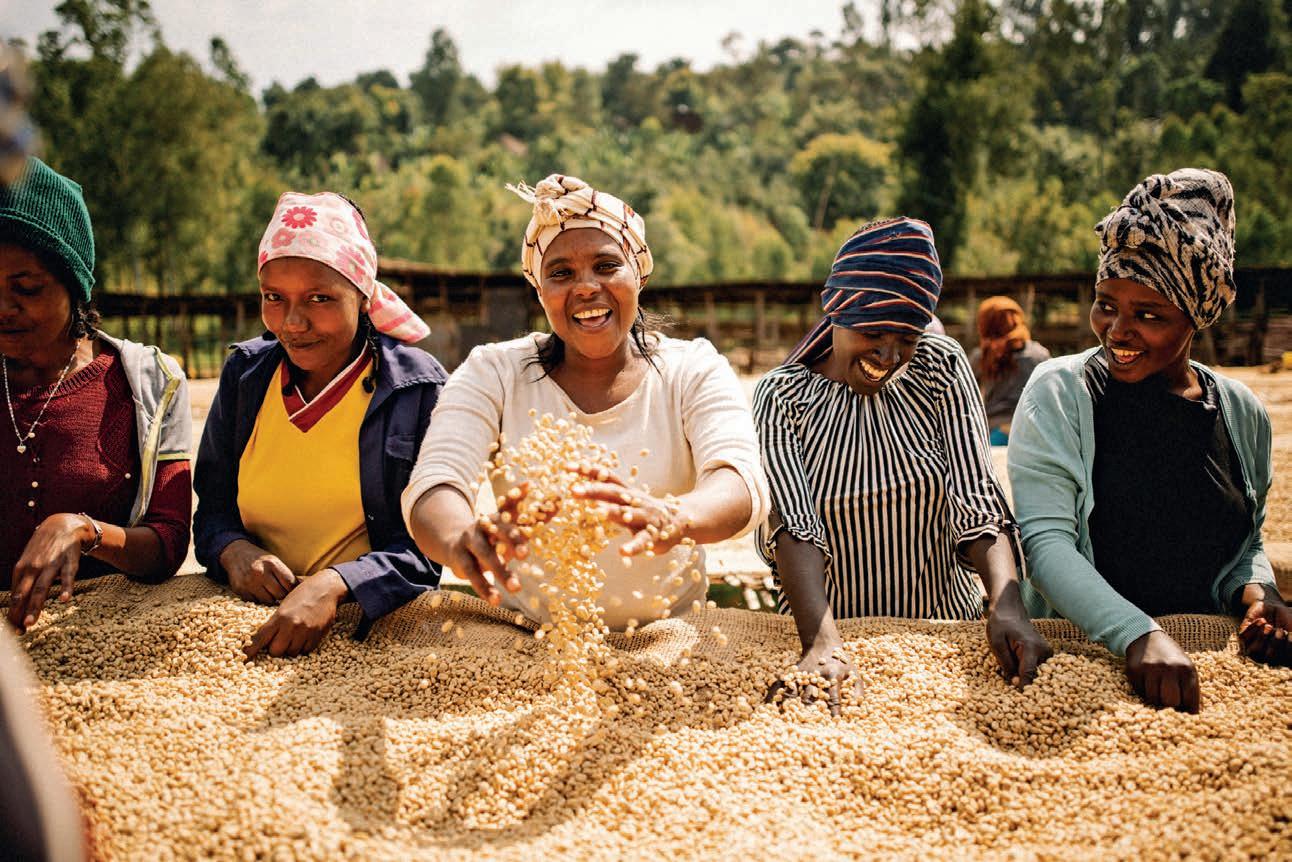
Coffee made with care
Nespresso celebrates 20 years of the AAA Program, a coffee sourcing initiative designed to ensure the continued supply of high-quality coffee while improving the livelihoods of farmers and protecting the environment.
TWO DECADES ago, coffee giant Nespresso realised the long-term supply of high-quality coffee was under threat due to climate change. The company decided to act, building a coffee sourcing program to protect coffee farmers and the future of coffee production.
The result was the Nespresso AAA Sustainable Quality Program, created in partnership with the Rainforest Alliance. Its founding principle was to build strong and direct relationships with coffee farmers, protect the nature and life in landscapes where coffee is grown, and strengthen communities’ environmental and economic resilience.
“The AAA Program is a unique coffee sourcing project which isn’t about buying coffee on the commodity market or buying external certification — it’s about acting on sustainability directly in our business approach, supporting coffee farmers on the ground, and helping to make coffee farming environmentally, socially, and economically sustainable,” says Nespresso Global Head of
Sustainability Jérôme Perez.
“The regions from which we source coffee are particularly vulnerable to the impacts of climate change. Extreme temperature fluctuations, heavy rainfall and droughts pose serious risks to coffee crops. Through the AAA Program, we are supporting farmers to reduce the environmental impact of coffee farming, and the impact of climate change on farmers in order to preserve their farm. To be a part of this important journey makes me very proud.”
The overall goal of the Nespresso AAA Program is to work with farms and coffee farmers on a process of continuous improvement. This helps Nespresso to ensure it's meeting the criteria laid out in the program.
“To set out these criteria and guidelines, we established the Tool for Assessment of Sustainable Quality, or TASQ. It's inspired by international standards such as the Sustainable Agricultural Network (SAN), and Fairtrade, from which we integrated our own additional criteria. All
performance results are then verified by the Rainforest Alliance and SAN partners,” Perez says.
“We are now in the third iteration of the TASQ, solidifying its position as an independent standard. The new iteration brings additional knowledge to regenerative agriculture, providing producers with adequate guidance in this respect.”
Twenty years of care
In 2023, the AAA Program celebrated its 20th anniversary. Perez says it's a program that has grown from 300 farmers in Costa Rica in 2003 to more than 150,000 farmers in 18 countries, creating a lasting legacy for thousands of farming families and protecting the future of Nespresso coffee.
“The AAA Program provides technical training that empowers the farmers to improve the quality of their coffee and increase the yield of their harvest. Nespresso then rewards the investment farmers make in sustainable quality by
28 GLOBAL COFFEE REPORT
FEATURE NESPRESSO AAA
The Nespresso AAA Program is designed to improve the livelihoods of farmers. Image: William Gammuto.
paying a premium price for their beans.
Since 2014, we have invested more than CHF$363 million (about US$416 million) in training, technical assistance, and farmer premiums, as well as making structural investments in farming communities to improve the social, environmental, and economic performance of coffee farms. In 2020, Flocert (Fairtrade's global independent certification body) verified that 95 per cent of all the global coffee we bought in 2019 met the Fairtrade Minimum Price,” he says.
AAA Program producer Nyota Mukuza and agronomist Judith Zawadi from the Democratic Republic of Congo have successfully raised the quality and production of coffee on the farm. With the help of Zawadi, Mukuza is implementing regenerative practices and breaking down gender barriers.
“I have adopted a number of best practices including pruning and rejuvenating the coffee trees, applying organic compost, and shown good shade management by planting 150 native trees
with initiatives to complement coffee production such as raising goats for manure and intercropping with bananas, beans and soybeans,” says Mukuza.
Perez says a distinctive aspect of this program is that Nespresso maintains longstanding relationships that provide the security of a reliable, long-term partner. It allows Nespresso to build mutual trust and enduring partnerships. He says through initiatives such as agroforestry, crop insurance, and retirement savings schemes, Nespresso’s AAA Program helps farmers to safeguard their land and livelihood for the future.
“I have had the privilege of being here from the get-go — more than 20 years ago. What I find amazing, but also emotional, is that by buying from the same farmers year after year, new generations can also envision a prosperous future in coffee farming,” Perez says.
“It is incredibly rewarding to see a AAA farm passed onto the adult children or grandchildren of a coffee farmer who was part of the program since the beginning.”
Business Studies conducted a study in 2013 called 'Monitoring & Evaluation Study, Nespresso AAA Sustainable Quality Program Colombia', based on 1000 Colombian farmers, found that the farmers participating in the AAA Program had income levels 46 per cent higher than nonAAA farmers.
“Although this study was limited to Colombia, we believe it is strong indicator of how the AAA Program is helping to improve farmer welfare in all the countries where we work,” Perez says.
“Since 2014 we have also, together with our partners, planted over seven million trees in AAA landscapes. By 2030, we have an ambition to reach net zero in AAA green coffee production through the acceleration of regenerative agricultural practices and carbon removals.”
By using organic fertiliser and creating compost from farm material in Costa Rica, AAA Program farmer Alejandra Quesada and agronomist Melissa Chacon are transforming their environment with nature-based solutions and are already
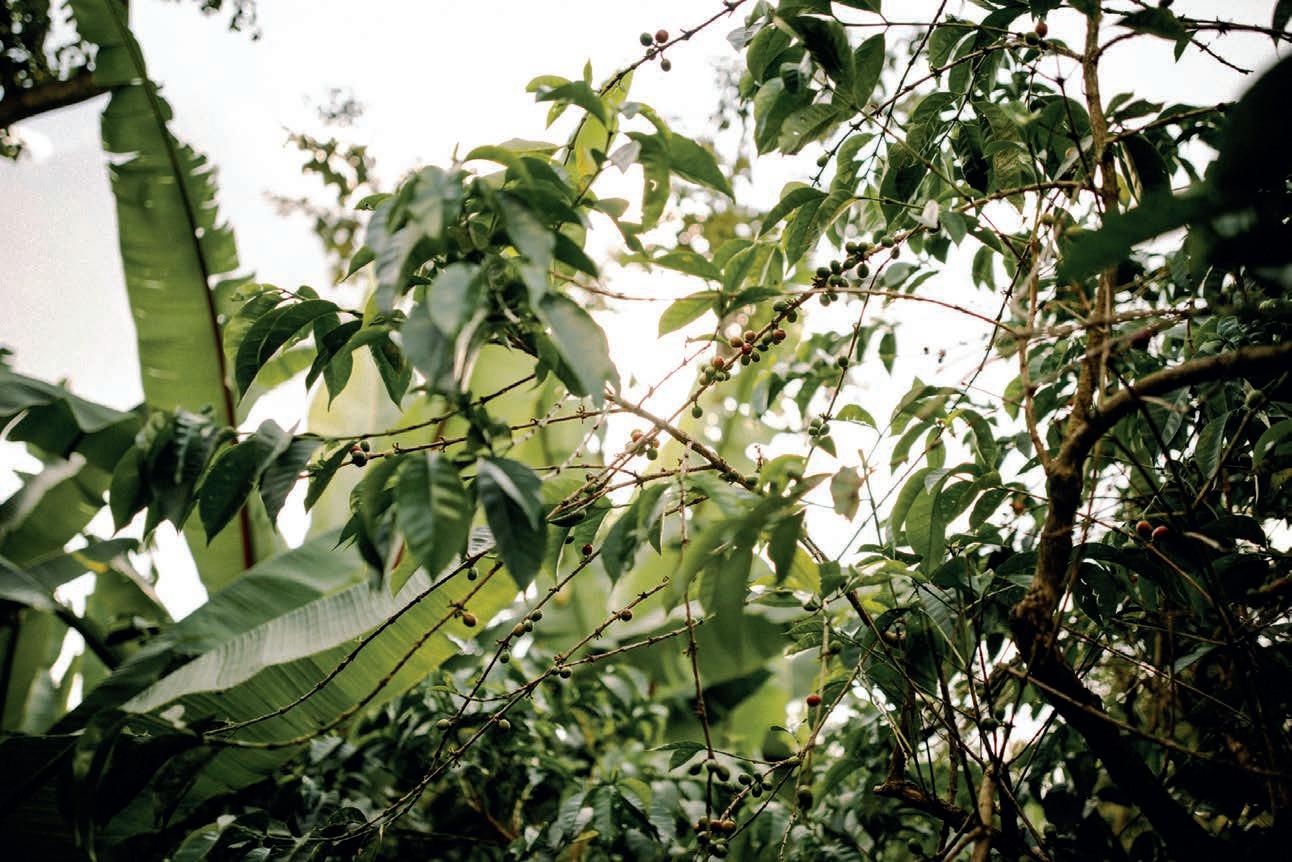 The AAA Program aims to reach net zero in AAA green coffee production by 2030. Image: Nespresso.
The AAA Program aims to reach net zero in AAA green coffee production by 2030. Image: Nespresso.
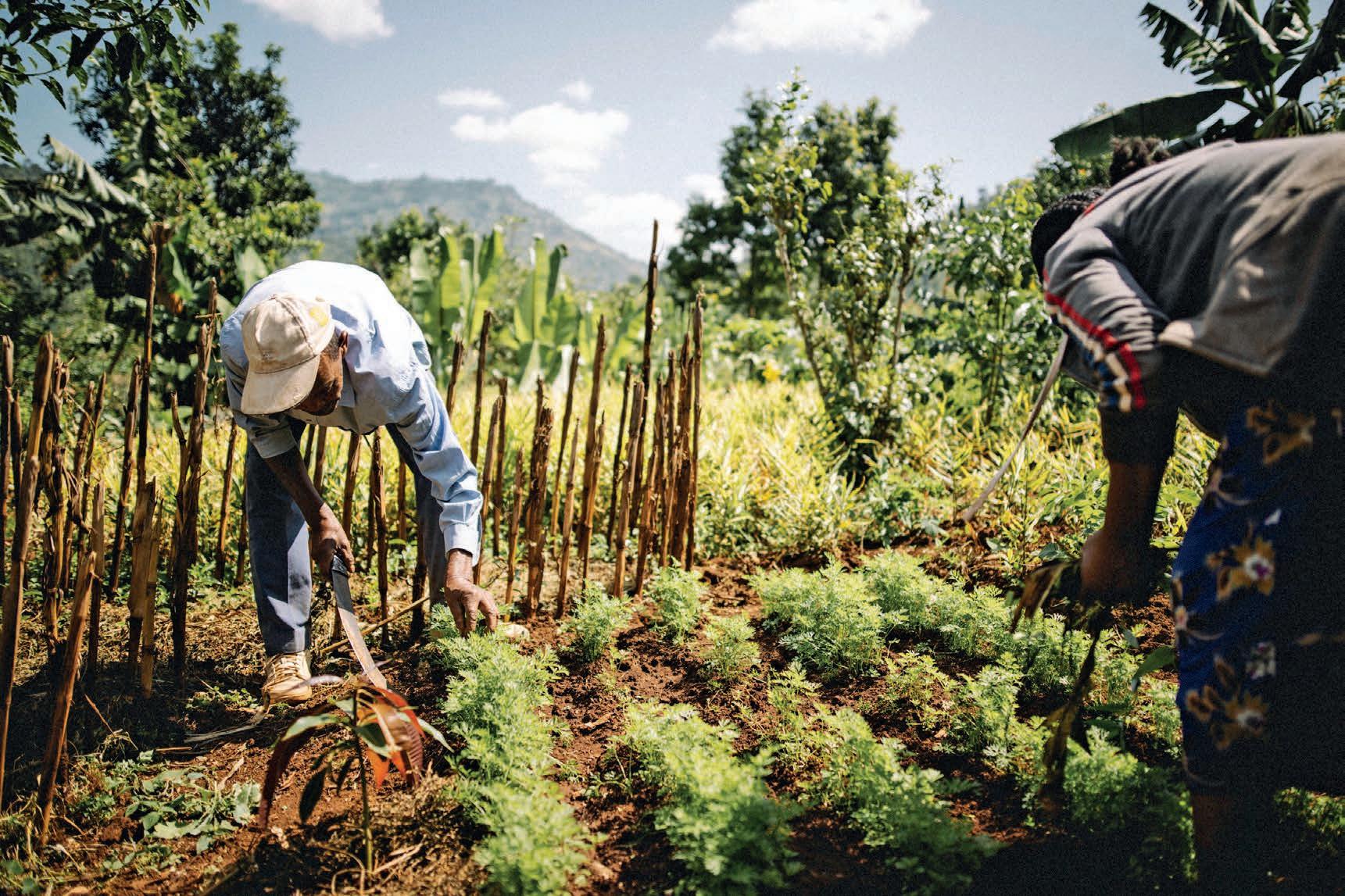
2000 trees have been planted with a focus on timber and fruit bearing varieties for animals to feed on.
With the intention to rehouse the native bird species, Quesada and Chacon estimate that this initiative has already seen an 80 per cent increase in animals and birds on the farm.
“It was scary taking over the farm from my father, but we did the handover together and I have learned to do everything. I do it all myself, from pruning the coffee trees and cutting the grass to planting new varieties of trees,” says Quesada.
From sustaining to regenerating Extreme temperature fluctuations, heavy rainfall, and droughts pose serious risks to coffee crops, while weather shocks
can exacerbate pests and disease. And if the coffee is exposed to risks, so are the farmers.
According to Nespresso, this demands urgent action. It’s why the company is working together with Rainforest Alliance and partner farmers on a transition to regenerative agriculture.
Perez says this vision is based on harnessing nature and its diversity as an asset.
“Through the AAA Program, coffee farmers will make a positive contribution to the natural ecosystem by adopting regenerative farming practices and producing in ways that restore and protect biodiversity in and around their farms –embracing the power of nature to heal and restore itself,” he says.
“Regenerative agriculture delivers benefits to farmers, environment, and society by addressing the challenges of climate change, biodiversity loss, and community resilience. Nespresso sees a tremendous opportunity to transition the whole coffee industry to a model that supports ecosystem services, sequesters carbon, and provides diversified sources of income to farmers.”
After taking over Fazenda Três Meninas in Brazil, AAA Program farmers Ana Paula Curiacos Urtado and Marcelo Urtado quickly recognised that it was being run in a conventional way and was highly dependent on chemical fertilisation. With their respective backgrounds in agronomy and animal science, they understood the potential for the farm to work in harmony with nature.
30 GLOBAL COFFEE REPORT
FEATURE NESPRESSO AAA
Regenerative agriculture addresses the challenges of climate change, biodiversity loss, and community resilience. Image: William Gammuto.


“We knew we had to do something different. The goal was to increase biodiversity and improve resilience. We started with techniques such as cover crops, using different crops in the middle of the coffee plants, as well as planting different varieties of trees,” says Urtado.
“Now we can use 100 per cent biological products and the cover crops act as our ‘fertiliser factory’, getting nitrogen from the atmosphere to put in the soil. In the beginning people called us crazy… now we don’t have time to receive everybody that wants to come to the farm.”
A force for good
Nespresso's Perez says it's important to recognise that this transition to regenerative agriculture requires collaborations. He says
Image: William Gammuto.
the AAA Program provides a framework to support farmers and reward them for their efforts in sustainable quality and the implementation of regenerative agriculture practices.
“We also consulted with our longstanding partner, the Rainforest Alliance, to develop the Rainforest Alliance Regenerative Coffee Scorecard. The idea is that it provides a measurement framework for the adoption of regenerative agriculture practices at farm level for the coffee industry. The scorecard is the first to set the ‘regenerative standard’ for coffee, identifying the thresholds for bronze-, silver-, and gold-level performances. The scorecard assesses soil, biodiversity, water, crop resiliency, and livelihoods,” says Perez.
Perez continues that the AAA Program
is a reflection of Nespresso’s core belief: the coffee sector has the potential to be a powerful force for good in the world.
“This deep and long-term commitment helped us earn B Corp status, putting Nespresso within a community of companies that meet high standards of social and environmental sustainability,” he says.
“The transition to regenerative agriculture is a continuation of the sustainable agriculture approach that we’ve been promoting since we created the Nespresso AAA Program. We want to build on this to encourage profitable, sustainable coffee growing that respectfully uses the best of what nature provides, and to inspire widespread change across the global food system.” GCR
31 GLOBAL COFFEE REPORT
The Nespresso AAA Program encourages profitable, sustainable coffee growing.
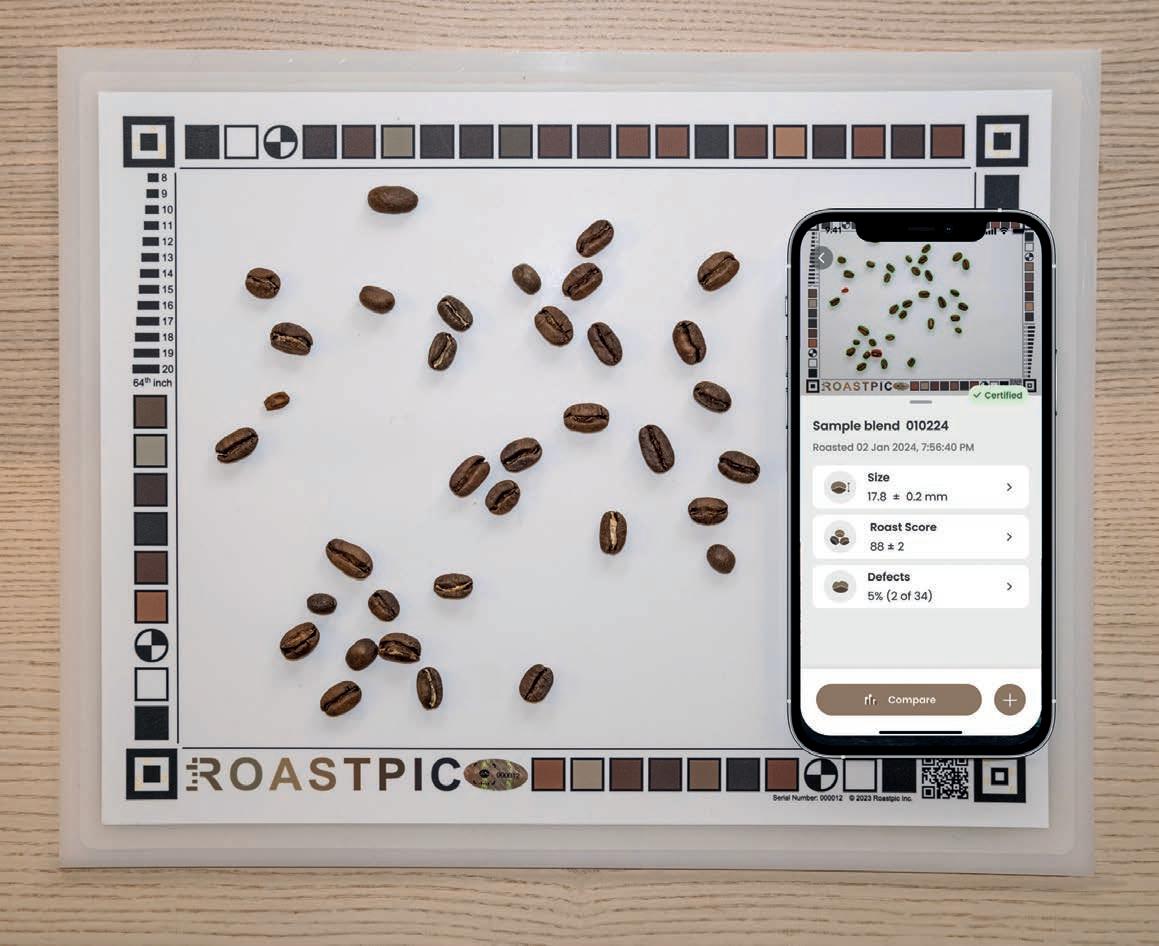
Picture perfect
Roastpic, a new photo-based technology from University of California, Davis, has partnered with data integration service Fabscale to offer seamless integration at the snap of a photo.
PROFESSIONALS ACROSS the coffee supply chain spend countless hours focusing on quality control: ensuring the right colour cherry is picked, correct bean size selected, and defect beans identified.
These tasks are often performed manually, and have been practiced for decades.
However, two students at the University of California, Davis (UC Davis) have developed a new app called Roastpic to analyse coffee samples by using a sheet, camera phone, and five seconds of patience.
Roastpic is a technology spin-off company from UC Davis, developed by faculty and students who are launching a new app of
the same name which provides instant statistics on a coffee sample by simply analysing a camera phone image.
“We’ve made sure that the app can predict the entire sample of coffee using the one photo,” says Roastpic Cofounder and Backend Software Engineer Zhuoheng (Andy) Li. “This technology
32 GLOBAL COFFEE REPORT
TECHNOLOGY PROFILE PROBAT
The Roastpic app can complete a full analysis of green, roasted, or ground coffee that is presented on the accompanying Photosheet. Image: Roastpic.
will be usable across the world.”
To do the analysis, roasters first take a sample of coffee – green, roasted or ground – and place it on the supplied Roastpic Photosheet, which features individual QR codes for data collection. The sheet is decorated with colour charts, sample colour squares to compensate for potential lighting changes, and measurement scales. The user then takes a photo of the chart with the coffee bean, and uploads it directly to the app. The app needs only five seconds to generate data.
To test the validity of Roastpic’s results, students at UC Davis measured green and roasted beans by hand. Their results showed near-identical outcomes, but were achieved in a much longer timeframe.
Roastpic allows the user to decide if the coffee meets their target specifications or not. In the future, the app will implement a comparison feature which will allow the user to quickly compare a given sample to a set exemplar batch.
The app’s ability to recognise defects incorporates the use of artificial intelligence when surveying the coffee sample. Beans that are not defects will appear in the app with a green outline. This enables the user to click on an individual bean to view its statistics. This includes average height and colour gradient. Defects in the batch, whether misshaped beans or a non-coffee material, will appear with red outlines. The percentage of defects in the batch can also be viewed.
Roastpic Head of Design Mengqi Cao orchestrated the design of the app, which Li says ensures the experience of the roaster is as important as retrieving the statistical data of the roast sample.
Roasters can manually categorise the sample by origin and species to compare past roasts for consistency.
“We’re thinking of a user-centric app design, where all you must do before uploading the image is select the type of coffee you are about to take a photo,” Li says.
“We are focusing on every stage throughout the coffee industry’s supply chain, with an emphasis on both single roasters and large-scale roasters. We want to help users understand information about their coffee.”
The concept for Roastpic evolved in late 2021, following Li’s participation in UC Davis Coffee Center Co-founder and Professor Bill Ristenpart’s Design of Coffee class.
“I saw one of my students pouring
hot water into a cup instead of coffee,” Ristenpart says. “I told him we were supposed to be doing a coffee tasting, and he told me that he was pre-heating his mug. I asked him where he learned to do this, and he said it was from when he got his Q certification (in 2020).”
Q Grade certification, distributed by non-profit organisation Coffee Quality Institute (CQI), acknowledges skilled coffee professionals in sensory evaluation. Ristenpart says the odds of a student achieving such certification before completing his course is very slim.
“I found out soon after that he was majoring in computer science, and I thought it was time to give him a project,” he says.
We are focusing on every stage throughout the coffee industry’s supply chain, with an emphasis on both single roasters and large-scale roasters. We want to help users understand information about their coffee.
Zhuoheng (Andy) Li ROASTPIC COFOUNDER AND BACKEND SOFTWARE ENGINEER
Xiao (Harold) Liu, another Q Grader certified computer science major at UC Davis, joined Li when Ristenpart first presented his vision for the app.
“The idea for Roastpic had been kicking around in my head since 2015 when I saw people still using shakers to measure the size of beans, and I thought, ‘we should be able to do the same work by taking a photo’,” Ristenpart says.
“It wasn’t until I had two Q Grader certified computer science majors fall right in front of me that I thought it could be done.”
Through Roastpic’s instant statistical feedback, Ristenpart’s aim was to alleviate
the manual labour of quality control in the coffee industry.
“There are so many points across the supply chain in coffee that require consistent inspections. It can often mean spending 20 minutes or more looking at every single bean in a batch,” he says. “Our idea was to solve this in a matter of seconds.
“As a roaster, you want to make sure your 2pm roast is the same as the 2:15pm roast. If you take a photo with Roastpic of every sample you do, you’ll have thousands of photos of the same blend by the end of the month to analyse and compare.”
The UC Davis Coffee Center held a groundbreaking ceremony for a new facility in September 2022. Ristenpart helped organise a research symposium during the event, which included a presentation from Li and Liu regarding the new app technology.
“Scott Stouffer, Chief Sales Officer of Probat, was in the audience that day, and told us after the presentation that we had a winning concept on our hands,” says Ristenpart.
The Roastpic app will be available in three formats. The first, accessible for free, will provide approximate data primarily for coffee hobbyists and enthusiasts. In this application, users can download and print the Roastpic Photosheet, which does not guarantee accuracy in colour identification as each printer may produce different colour results.
The second version, Premium, gives paying users a registered Roastpic Photosheet which is precision printed with UV-protective laminate. This ensures accurate data for size, colour and defects in the batch.
Roastpic, in collaboration with Fabscale, recommends the third version, the Professional format, for larger businesses that need the highest standards of quality assurance and verification.
This version offers roasters a multi-user photo station, named the Coffee Vision System, which features state-of-the-art uniform lighting and an integrated camera for the highest quality bean images with the Roastpic Photosheet.
Roastpic Professional will be fully integrated into the dashboards of Fabscale, a company founded as a joint venture between German coffee roaster manufacturer Probat and coffee software solutions supplier Cropster.
It will link with other data from the shop floor, collected and analysed in the company’s Manufacturing Execution
33 GLOBAL COFFEE REPORT
Roastpic Professional users can analyse and compare roasts using Fabscale. Image: Fabscale.
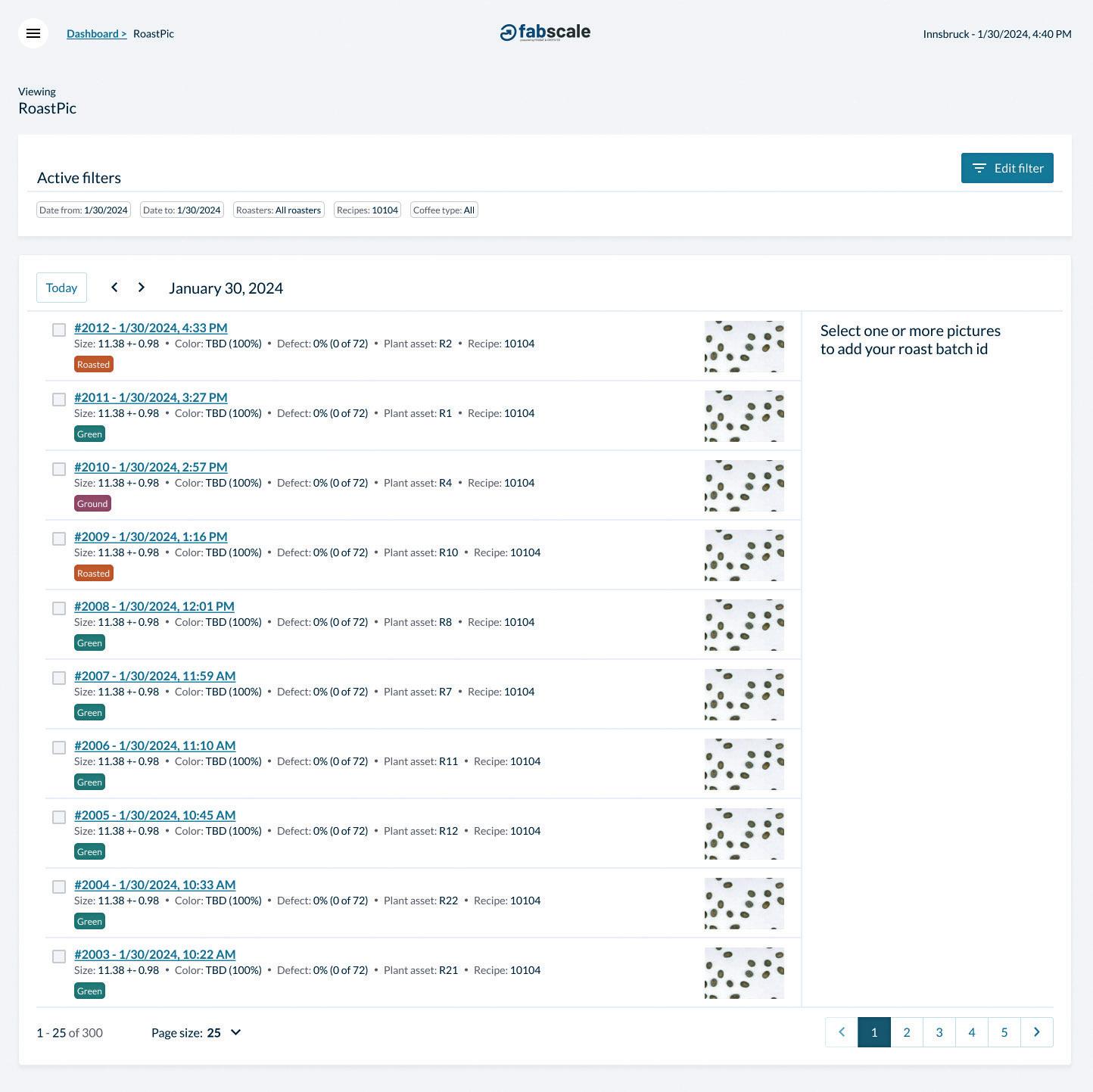
System to provide statistics on new and past roasts.
“In the professional version, we can have multiple users under the one software,” says Fabscale CEO Gökhan Adamhanoglu.
“It will give roasters a chance to see how each individual batch is doing or how the recipes are performing.”
Roasters can upload their desired settings for each recipe onto Fabscale, including a target colour and size for each bean.
Roastpic Professional can measure the exact colour metrics of coffee beans, as the
Coffee Vision System with its integrated camera ensures the lighting conditions in the uploaded photos are always consistent.
“What we are offering is a basis of comparison to see if there are any mistakes or problems in a batch using the functionality of Roastpic,” Adamhanoglu says.
“Each piece of data can be viewed through the Fabscale dashboards on your desktop or through mobile devices.”
Roastpic’s Free and Premium versions will officially be launched to the public at the Specialty Coffee Expo in Chicago in
April 2024. The Professional version will be available during Q3 of 2024.
“We will give attendees an idea of what the product will look like as well as how they will be able to purchase it,” Adamhanoglu says. “This is something new for Probat, and we’re excited to present a product preview in Chicago.” GCR
For more information, visit www.roastpic.com and www.fabscale.com/features-roastpic

34 GLOBAL COFFEE REPORT
TECHNOLOGY PROFILE PROBAT

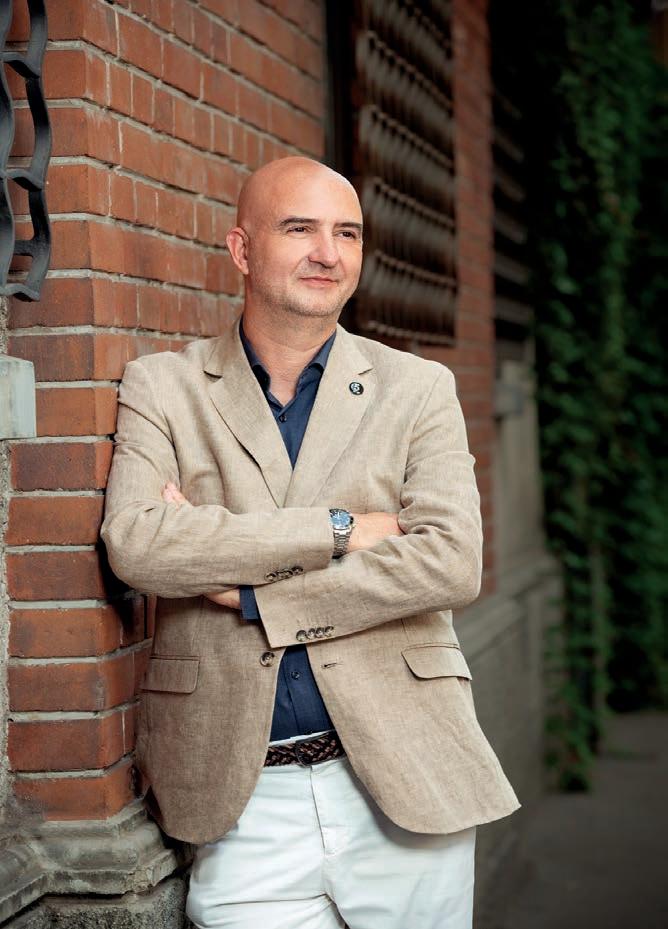
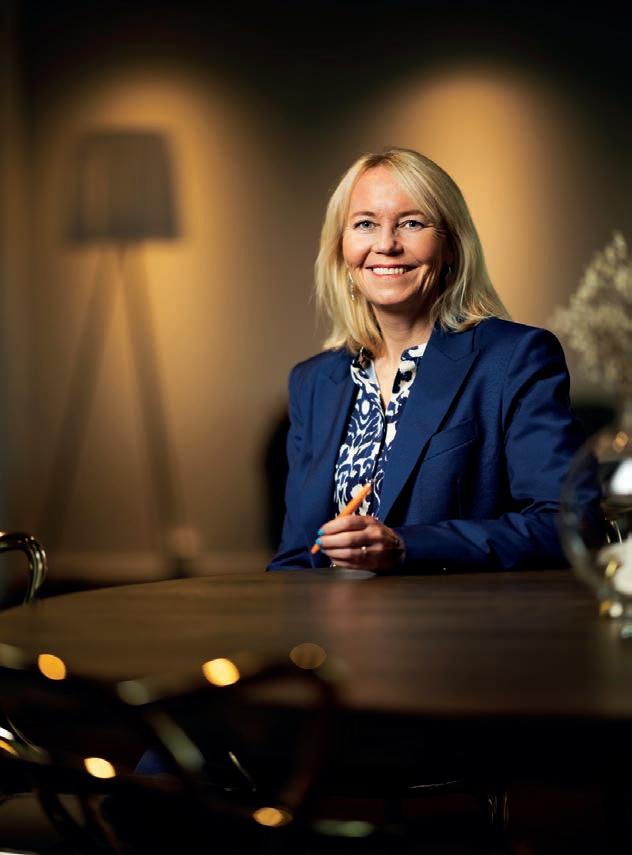


September/October 2023 www.gcrmag.com/subscribe YOUR COFFEE NEWS – WORLD WIDE Global Co ee Report is the leading business magazine covering the international co ee industry. In-depth features explore on-the-ground developments at origin, co ee pricing issues, technology updates, research breakthroughs and much more. Rise from the ashes HAWAII’S ROAD TO RECOVERY POST-WILDFIRES Innovation ignites PUSHING TECHNOLOGY TO THE LIMITS 2024 predictions INDUSTRY LEADERS FORECAST HOPES AND FEARS www.gcrmag.com January/February 2024 IS BORN star A Tomoro Coffee CEO Xing Wei Yuan on how the tech-enabled coffee chain is driving ambitious plans in Southeast Asia UNLIMITED ONLINE CONTENT
Breaking new ground
Cimbali Group explains how it anticipates customer needs with digital solutions and innovative fully automatic machines to achieve
excellent service.

BRAND REINVENTION is not always easy, especially if you’re a company with more than 100 years of history consisting of passion, tradition, and coffee culture. Yet in 2023, that’s exactly what Cimbali Group has been able to do, presenting itself under a new banner.
Cimbali Group Chief Marketing and Solutions Officer Maurizio Tursini says the rebrand better expresses the identity of the company which has evolved over time with an unrelenting commitment to product and service innovation.
“Cimbali Group embraces the perfect mix of product, technology, tradition, and history. It is a classic example of a company that dives into the future with innovation while staying connected to its tradition and roots,” Tursini says.
“This applies not only to our machines but also to our value-added solutions that a professional or coffee lover buys when choosing a product from our brands.”
Tursini says the global coffee community is responding to challenges confronting all industries, including cost pressures, staff shortages, and increasing consumer awareness.
This means customer needs are changing
and Cimbali Group is offering products to adapt.
“To facilitate market demand, we are producing machines that solve these issues through automation and innovation. We are making it as easy as possible for baristas to use the machines and train staff, technicians to fix any issues, and offering the best experience to consumers,” says Tursini.
He says the S-Lite fully automatic espresso machine, under the LaCimbali brand, is the ideal solution that caters to current market challenges.
“The S-Lite is a significant machine allowing us to enter a specific segment of the market with our new digital solution. We have collaborated with [remote control software company] TeamViewer to launch a new Global Remote Service Program for our corporate customers,” says Tursini.
“Thanks to TeamViewer’s secure connectivity solution, technicians from Cimbali Group or one of our distributors can remotely access clients’ machines to quickly solve problems, and thereby reduce machine downtime and minimise revenue loss for the customer.”
Telemetry solutions and data
communication, which is sent by the machine to a web platform, can be used for statistical consumption analysis of the number of drinks dispensed, both in total and per selection, for example.
“The technology also means the machine can be monitored constantly, as it provides a real-time snapshot of all the machine’s parts and communicates any errors or malfunctions directly to the technician,” says Tursini.
Tursini says the company considers two main factors when creating new equipment: quality coffee and milk texturing.
“Our machines are very reliable in terms of quality in the cup. LaCimbali’s Perfect Grinding System provides constant control of coffee-dispensing parameters so the grinder-doser, connected to the machine via Bluetooth, automatically carries out any grinding and dosing corrections to ensure optimal and constant dispensing,” he says.
The Barista Drive System (BDS), an integrated system, facilitates the work of the barista by maintaining a dialogue between the machine and grinder-doser.
“This innovative technology guides the barista step-by-step through all the beverage preparation stages, from grinding
36 GLOBAL COFFEE REPORT
INDUSTRY PROFILE CIMBALI GROUP
The LaCimbali S60 is a predecessor of the S-Lite fully automatic espresso machine.
Images: Cimbali Group.
the coffee to dispensing. The BDS enables the on-demand, wireless grinder-doser to identify the coffee dose to grind (single or double), dispense it, and communicate this to the machine,” Tursini says.
“This system is extremely useful when there are several grinder-dosers with different coffee blends. The grinder-doser tells the machine which blend has been selected and indicates the appropriate coffee dosage. Only the buttons for the recipe compatible with the dispensed blend will light up, while the others are disabled, preventing potential operator error.”
Tursini says Cimbali Group’s machines also enable consistent milk texturing, saving the barista time and accelerating their workflow without sacrificing quality.
“This is also an important feature, as we want any barista to be able to perfect dairy and dairy alternative milk frothing using our machines,” he says.
Under the rebrand, Cimbali Group also has a renewed vision that places people at the centre, and sustainability as the driving force behind a business model that sees collaboration, diversity, and inclusion as essential to future growth.
“Sustainability is a strategic asset for our company. It’s not a project to us. It’s a culture,” says Cimbali Group Sustainability Manager Chiara Caldarola. “Here at Cimbali Group, we enhance our collaborators, reduce the environmental impact of our machines, and optimise emissions from both processes and plants for the benefit of society and the planet.”
The machine manufacturer embraces four sustainable development goals: people, product, planet, and partnership.
“We published our second sustainability report on our website to showcase our commitment. The report highlights how we have contributed to these goals, such as hiring 53 disadvantaged workers in 2022, developing solutions capable of increasing energy efficiency and ensuring 100 per cent of electricity comes from renewable resources, to name a few,” says Caldarola.
“This is part of a dynamic process of change which has seen us take another step forward, broadening our vision of the future and redefining our market position more effectively.”
As Cimbali Group’s vision concentrates on people’s needs and providing customers with specific and comprehensive solutions, Tursini hopes it will attract new customers in 2024.
“Our new ethos is customer centric. It
lays the guidelines for a more integrated business approach in which the focus of the product range is not just the espresso machine but the value-added services a professional or coffee lover acquires when choosing a Cimbali Group brand product,” he says.
“The company has evolved significantly over the past 110 years. We are now working on shifting the paradigm from simply selling coffee products to also selling services and connectivity. These are what we call solutions,” says Tursini.
In saying that, Cimbali Group remains committed to innovation and is focused on merging into new markets in 2024 and new product releases in 2025.
“We believe fully automatic machines represent the future of the global coffee industry and we are on board that train,” says Tursini.
“We have very important plans for the
future. We want to increase our offering, develop more solutions that are capable of responding to market needs and continuously improve our technology. I can’t give away too much yet, but let’s just say we are investing a lot in the fully automatic world.”
In the meantime, Tursini says Cimbali Group aims to be recognised as a market leader in solutions and services related to professional coffee machines, coffee grinders, and milk-based beverages.
“We’re going to do this with innovative products that anticipate the needs of the market, with functionality and design capable of putting the perfect tool in the hands of every barista to express their talent,” he says. GCR
For more information, visit www.cimbaligroup.com

37 GLOBAL COFFEE REPORT
Cimbali Group Sustainability Manager Chiara Caldarola.

Automation nation
Eversys has been building its presence in the UK and Ireland since 2017, and its customers across the region are noticing big changes in the workplace.
SWISS ESPRESSO machine manufacturer Eversys has been making machines with an eye on the future since 2009. As a result, the company has extended its operations overseas, with the aim to increase its presence and support its partners to thrive in their respective markets.
Independent specialty coffee roaster and café chain 200 Degrees is one such customer that has evolved with Eversys by its side.
Each 200 Degrees venue in the United Kingdom, including those in Nottingham, Leicester, Manchester and Liverpool, is located in high footfall locations, and ranges from 60 to 100 seats with a mix of drink-in and takeaway customers.
“Creating the perfect cup of coffee takes care and expertise. Like all busy hospitality businesses, we struggled to achieve a consistent result at peak times on traditional machines while maintaining an acceptable speed of service,” says 200 Degrees Co-founder and Director Tom Vincent.
“Passing a large proportion of this labour over to Eversys allows us to ensure that not only the espresso extraction is accurate every time with perfectly steamed milk, but
that is also produced with a reduced wait time for the customer.”
Every 200 Degrees shop has two Eversys Enigma E4M machines, and some with additional Shotmaster models. The E4M can produce up to 350 espresso shots per hour at 23 seconds of extraction time, as well as 170 hot water products per hour. Baristas can produce four products at once when handling the machine. The Shotmaster can work with up to eight products simultaneously while producing up to 700 espresso shots per hour.
Vincent adds that Eversys’ professionalism and service extends beyond the cup, with the added advantage of having its own nationwide team of engineers to assist with any servicing needs.
“Because Eversys has its own engineers, we have found everything has become far more efficient,” he says.
The most notable differences in 200 Degrees’ shop operations, according to Vincent, can be seen during rush hour each morning, which is no longer a stressful time but an opportunity for baristas to focus on the art of hospitality and service.
“Peak times have become more manageable without needing extra staff on shift, as the machines can just step up a gear
when required without any drop in quality,” he says.
“[We used to] place a couple of our more experienced baristas on site for the first few weeks to assist with workflow and to maintain standards, but the Eversys machines negate a lot of this need and allow for a new team to settle in far quicker without the stress of manually making coffees.”
Eversys’ UK and Ireland headquarters was established in 2017, having previously operated under the name Evertec. Managing Director Deryck Gaffney says the decision to join Eversys was a nobrainer, with the quality of its machines leaving a lasting impression.
“I have been working with coffee machines for three decades, but Eversys’ machines were the first to make me go ‘wow’ when I opened the lid of one of the E’line machines for the first time, and our engineers felt the same way,” he says.
Gaffney notes the self-service specialty coffee solutions differ between the UK and Ireland.
“While both markets demand quality products and a great in-cup experience, the typical UK coffee drinker has become accustomed to pressing a button on a large

38 GLOBAL COFFEE REPORT
INDUSTRY PROFILE EVERSYS
Images: 200 Degrees.
The Eversys Shotmaster can work with up to eight products simultaneously.
brown box in a small petrol station on the side of the road to get great coffee,” he says.
In contrast, Gaffney says Irish customers appreciate a visible coffee-making display, preferring to see an espresso machine on a shop counter and beans in grinder hoppers. This, Gaffney says, is the way the Irish identify a better coffee experience.
“Eversys can be found in both of these formats,” he says. “In Ireland, it’s hard not to find an Eversys machine on a counter in a food court or a convenience store.”
He adds that Eversys’ Enigma range, including the Classic and 4’s, has become popular in the UK and Ireland due to its ability to blend traditional and automatic coffee-making elements to create up to four products at the same time, and produce 350 espresso shots per hour.
“[Our customers] are very happy with the range, mostly because of its reliability,” says Gaffney. “With Eversys, the quality starts great and ends great.”
In the UK, Gaffney says Eversys customers prefer machines with a twostep option such as the Shotmaster which gives complete autonomy to the user for
business. He notes the focus and interest over the past four years, however, has come from specialty coffee customers that realised the in-cup quality of the machines is on par with a top barista’s espresso.
“The fact our machines self-diagnose each coffee and milk product while finetuning itself has helped customers scale their businesses, as they know the machine will look after the product consistency and will alert the service technician of any intervention that is needed. That is the secret of Eversys’ technology,” he says.
“When you’ve got people working in a pub who aren’t trained in the world of coffee, having a machine that cleans itself once you press a button has been a game-changer.”
Eversys UK and Ireland Sales Director Martin Morrell adds that the physical presence of the brand in both countries has been imperative to gaining customer trust.
“With the size of the market, we felt we needed a direct service across the country,” he says.
“An Eversys machine can last over 10 years. Because of that, we have become a
demonstrate this idea, along with the key functionalities and convenience of the Legacy, Cameo, and Enigma ranges, at the National Convenience Show in Birmingham in April.
“It’s the first time we have participated in a show dedicated to the convenience sector,” Morrell says. “We are looking to showcase what we believe is best in class.”
Expansion in the UK and Ireland is a key priority for Eversys, which Gaffney says becomes simpler once customers see for themselves how its machines and after-sales service work.
“[The UK] is a very densely populated area, so we are able to be very responsive to the requirements of our customers,” he says. “We value each member of our team and consider our field technicians to be our assets.
“We are continuing to install machines in restaurants and coffee chains throughout the country while providing market-leading after-sales service. Our year-on-year growth is a testament to the product and the team.”
“We are looking to reach restaurants and coffee chains throughout the country so we can produce and provide a
 Partnering with Eversys has helped 200 Degrees better manage high volume output.
Partnering with Eversys has helped 200 Degrees better manage high volume output.
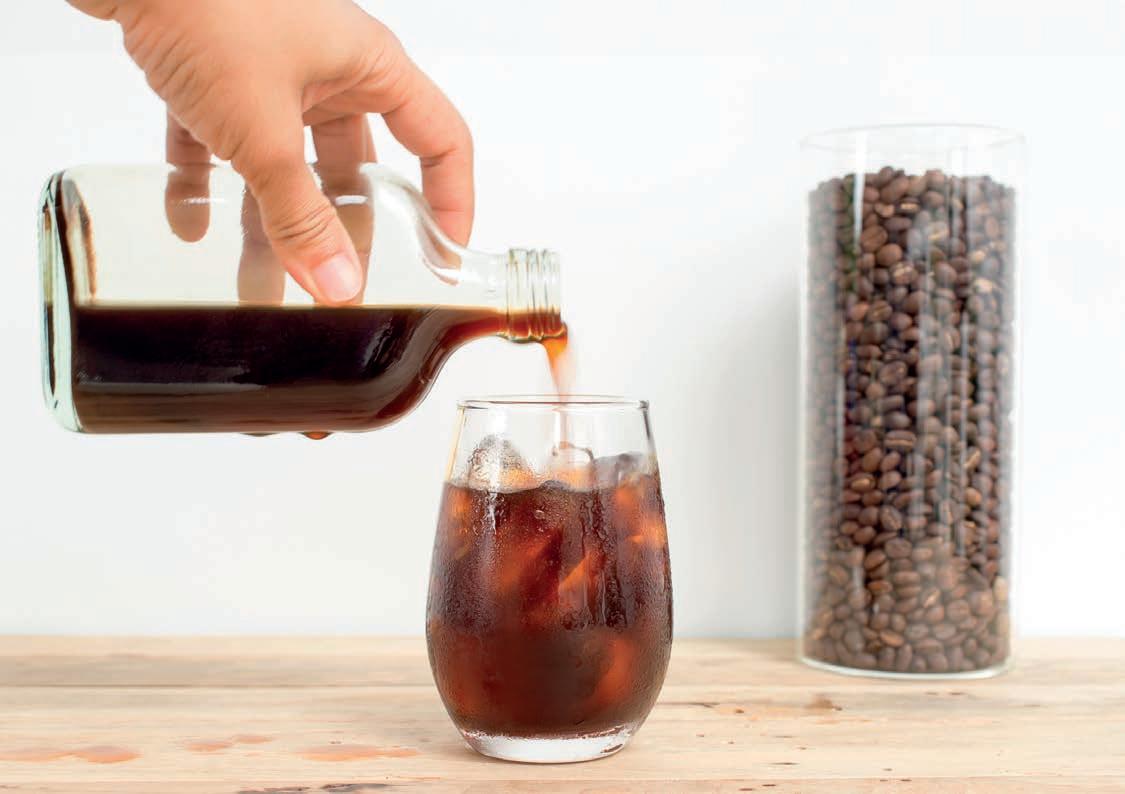
Cold concentration
Flavourtech explains how its latest partnership can assist cold brew coffee producers and why slurry processing is the best way to achieve premium RTD beverages.
AS A GLOBAL technology manufacturer specialising in aroma recovery, extraction, and evaporation solutions, Flavourtech has a front row seat to macro trends shaping the ready to drink (RTD) coffee and tea segments.
From this vantage point, the company can see sales are growing at a significant rate and, according to Global Sales Manager Paul Ahn, this is due to younger generations seeking convenient beverages that are more natural and healthier than carbonated soft drinks.
“Consumers’ busy lifestyles have made RTD coffee an attractive choice for those looking for a quick caffeine fix. The RTD coffee sector is a dynamic category with placement in supermarkets, convenience stores, and food outlets,” says Ahn.
“Products come in various formats including flavoured and supplemented beverages, traditionally brewed products which are served hot or cold, and popular cold brew coffee.”
Flavourtech believes consumers are driving the ongoing premiumisation of this sector to the benefit of beverage manufacturers focused on quality and innovation.
In recent years, the company has noticed a marked shift in cold coffee consumption in its home market. Ahn says Australian consumers are not willing to drink milk with coffee flavouring.
“Consumers want a product where the coffee is the hero flavour, and not diluted by milk or plant-based milk products. A lot of supermarkets are now selling bottles of liquid coffee concentrate to make coffeebased beverages at work or home. The coffee aisles are getting bigger and bigger, and we have been able to help beverage companies, both big and small, capitalise on this trend through the use of our innovative processing technology,” Ahn says.
“Cold brew coffee, which is extracted at room temperature and produces a brew with unique characteristics, is proving particularly popular. The National Coffee
Association in the United States stated in a 2023 National Coffee Data Trends report that the number of people who drink cold brew regularly has increased by 60 per cent since 2019.”
To assist manufacturers in producing higher quality cold brew concentrates, Flavourtech has recently partnered with Danish water technology company Aquaporin.
By leveraging Aquaporin’s expertise in forward osmosis (FO) and highly selective water removal, Ahn says Flavourtech offers an approach it refers to as “cold concentration”.
“With Aquaporin Inside technology, Flavourtech aims to help cold brew producers update their process to include a cold concentration step of osmotic pressure difference. FO exploits this pressure difference and allows movement of water molecules through a semi-permeable membrane without the application of heat. The process minimises the loss of flavours and essential nutrients, with the
40 GLOBAL COFFEE REPORT
TECHNOLOGY PROFILE FLAVOURTECH
Cold brew continues to be a popular beverage, according to Flavourtech. Image: P-fotography/Shutterstock.com.
resulting concentrate maintaining a higher nutritional value and a superior taste reflective of the original coffee’s flavour profile,” he says.
“This advanced water removal technology ensures a gentle concentration process that not only enhances the efficiency of production but ensures batch consistency and empowers producers to meet the growing demand for premium cold brew concentrates.”
Flavourtech also offers RTD coffee and tea producers an innovative way to produce premium liquid extracts from coffee and tea slurries.
The company’s Integrated Extraction System (IES) couples Spinning Cone Column (SCC) technology with the extraction of soluble solids.
“The IES is unique in that it is able to easily process a slurry of water and milled roasted coffee beans, meaning flavours are at their freshest,” Ahn says.
“Our IES is designed for the coffee and tea industry with the aim of producing the highest quality RTD beverage, full of the natural aroma from the raw material itself: the roasted coffee beans or tea leaves. Before the IES, these natural, desirable aromas were typically lost or damaged through processes that were not designed to capture or maintain them. The result is a RTD coffee or tea extract lacking flavour.”
Ahn says one of the key characteristics of the IES is its ability to capture and preserve key flavour notes for inclusion in the final extract.
“Aromatic compounds of fresh-brewed roast and ground coffee, or distinctive varietal characteristics of tea blends, are captured by the SCC at their peak quality by processing slurries at low temperatures and short residence times. When a slurry of coffee beans or tea leaves and water is introduced into the SCC, the beverage is brewed within the closed system. The SCC effectively performs the dual roles of flavour and soluble-solids extraction simultaneously, thus avoiding intermediate flavour loss or degradation,” he says.
“Capturing coffee and tea aroma from liquid extracts does not compare to slurry processing as many of the important aromatics are damaged or lost during the extraction process itself. Capturing aroma from a slurry is far superior.”
Ahn says, in coffee slurry processing, the IES produces a final coffee extract that is as good as, if not better, than freshly brewed coffee.
“The gas chromatography analysis
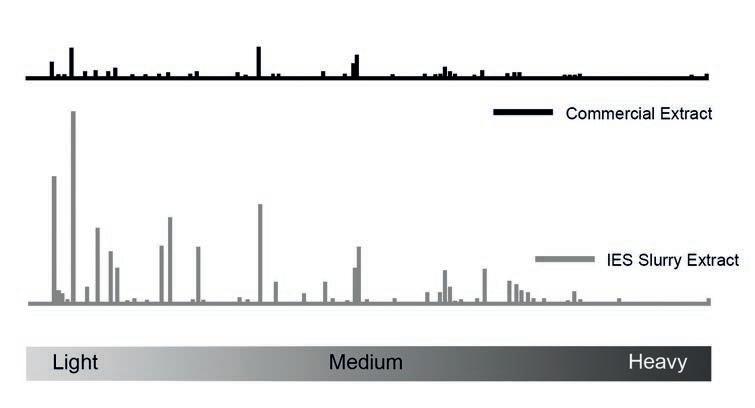
shows a graphical comparison between a commercially available coffee extract and one produced by the IES,” he says.
Ahn adds that the high concentration of volatile compounds and dominance of ‘front-end’ characters in the IES sample are attributable to the fact it was collected from a slurry of fresh-roasted coffee, not a liquid extract.
“The IES is quite versatile, one day you can be making RTD tea, the next day RTD or soluble coffee. This versatility also extends to the ability to capture different aroma profiles from the same raw material by simply adjusting some user settings. This feature allows the manufacturer to offer a variety of flavours to meet the target taste preference,” he says.
Another key feature of the IES, Ahn says, is the flexibility of a continuous
can be combined with existing processes or installed in stages,” he says.
Ahn adds Flavourtech systems are designed with the customer and application in mind.
“Our design and engineering teams offer our customers a custom-built process to produce the highest quality RTD beverage [and] it all starts from the raw material itself — the roasted beans — where the flavours are at their freshest and best. The result being a premium product with more flavour and antioxidants, ensuring manufacturers have the upper hand over their competitors,” he says. GCR
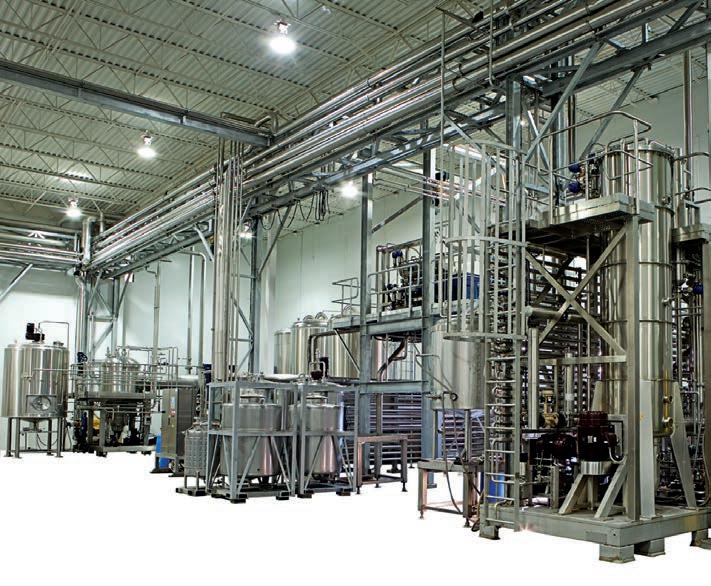
41 GLOBAL COFFEE REPORT
A gas chromatography chart compares a commercial coffee extract sample with one produced from a slurry. Image: Flavourtech.
The Integrated Extraction System processes tea and coffee slurries. Image: Flavourtech.

Bring it on
Brambati S.p.A. unveils its blueprint for the year ahead, including details on how the company plans to continue improving its practices and products to maintain a leading status.
LAST YEAR was a busy one for Italybased coffee roaster manufacturer Brambati S.p.A. It launched a new generation of roller grinders for capsule and gourmet coffee grinding, exhibited at events such as HostMilano and Interpack, and continued to invest in research and development to improve its technology and software.
This year, Brambati President and CEO Fabrizio Brambati has no intention of slowing down.
“We see consistent growth in Brambati year-on-year, and I think our history in the industry has a lot to do with that. With almost 80 years of expertise, Brambati is a trusted partner and well-respected in the industry. I’m very proud to be a part of such an esteemed brand,” says Brambati.
“Since we launched the grinders in late 2022, they’ve had massive success in the market. The grinders cover all capacity and production sizes, guaranteeing more flexibility of operations.”
These new grinders can produce the
desired granulometry with a right amount of fine particles necessary for capsule coffee production, while also giving delivering bulk density in ground coffee.
One such grinder in the range is the KL250, which Brambati says is “unique” for its scale. Despite being one of the company’s smallest specialty grinders for small production capacity, it retains all the details and features of Brambati’s classic cylinder grinders.
These roller grinders are set to become popular items in the Brambati suite, in addition to its range of roasters and grinders. Brambati says their development is timely and continuous to ensure its machines are increasingly performance driven and can meet the most demanding specifications in terms of efficiency and sustainability.
“Technological innovations and technical improvements have made it possible in the period between 2018 to 2021 to reduce the energy consumption of coffee grinding grinders by 22 per cent,” Brambati says.
“Brambati’s grinders come in a variety of sizes and types, from traditional with a production capacity ranging from 100 kilograms per hour to 2500 kilograms per hour for espresso, moka pot and filter coffee, to a special [grinder] type with a production capacity ranging from 50 kilograms per hour to 1000 kilograms per hour for Turkish and Greek coffee. All types have a fully automatic model of the KMT series available, and modular model of the KL/KLL series available.”
With continual innovation front of mind, Brambati says the company improves its technology and software every year.
“We constantly update the controls of our machines to become more and more sophisticated while remaining simple and easy to use. We have developed specialty software that allows users to overlap historical curves during the roasting phase, view discrepancies, and verify variations or any drifts in real time,” he says.
“One of the biggest advantages we have is that our machinery can consider the
42 GLOBAL COFFEE REPORT
TECHNOLOGY PROFILE BRAMBATI
The pilot plant and lab at Brambati’s 10,000 square metre engineering facility hosts Brambati’s latest equipment.
Images: Brambati.

taste and cupping result, which is very useful for specialty coffee and a highly requested feature.”
Brambati now has a worldwide presence in sales and installed roasting plants, with about 80 per cent of its sales accounted in foreign markets. In 2014, Brambati opened an Asia Pacific office in Australia, and most recently an office in the United States.
“We keep an eye on the global market because every year, we expand into new regions and find new customers. Right now, we’re seeing a lot of uptake of our roasters in Asian countries and have started supplying more equipment to Vietnam, Indonesia, and China. I believe in the future we will see increased interest in Asia and possibly the United States for our products,” says Brambati.
In addition to its expansion plans, Brambati’s Advanced Food Lab (AFL), a research and development centre that has been recognised with Specialty Coffee Association (SCA) Premier Training Campus certification, offers a unique educational setting for coffee education.
The AFL, with its complete pilot plant, was designed to increase the brand’s scientific capabilities so it can continue to push the limits of technological advancements. It features a laboratory, 3D scanners, dedicated graphics software, and the infrastructure to conduct rigorous testing.
“The AFL is a result of Brambati’s continuous commitment to search for innovation, where theoretical tests and trials are not enough. Instead, there is a need to test, confirm and support results with laboratory analysis,” says Brambati.
He adds that the AFL and its specialised technical division positions Brambati at the forefront of roasting expertise, with its competitive advantage in the flexibility of Brambati’s catalogue.
“Innovation and flexibility are two of the core pillars that this brand is built on. We are constantly seeking to develop our processes and technology,” Brambati says.
“We take pride in our products being adaptable and consistent. Our machines today are suitable for every kind of coffee and are able to obtain results that every professional roaster wants.”
To help potential buyers make purchasing decisions, Brambati has also embraced digitalisation in the form of webinars and educational online classes based in its AFL, showcasing how to use its machinery.
“Brambati runs 80 per cent of the business out of Italy, so it’s important to us that we

allow our customers the possibility to train remotely, and commission installation remotely, to guarantee the satisfaction of our customers,” Brambati says.
“It’s been a great advantage over the past few years. This ensures we maintain a close connection with our clients, which is very important to us.”
The webinars allow clients and staff to explore Brambati’s latest advancements in roasting technology and automation, and adapt it into their own facility.
“The courses are dedicated to customers that have our machinery and wish to improve their knowledge on how to best use the equipment, to ensure they understand the full capabilities and flexibility of the machinery. By utilising the machine to its full potential, they can achieve the best results,” says Brambati.
“It’s also a way for us to show new customers the features of the equipment and the advantages of using our products.”
Brambati has also invested heavily in maintaining its sustainable solutions and reducing its carbon footprint. This has resulted in implementing solar power, using recycled products, and driving social and
economic sustainable practices.
“We’re currently 70 per cent selfsufficient and are determined to operate the business without waste. To reduce indirect emissions, we reduce consumption by installing more efficient components or even eliminating some components,” he says.
“For primary emissions, we use a low NOx burner and high efficiency catalytic systems.”
Brambati says further digitalisation and sustainability will continue to be major goals for the company. He says there is continuous research and development to improve the efficiency of its roasting plants and reduce the environmental footprint of its installations.
“As we explore new ways to operate more efficiently, it’s important to us that we share our knowledge with the global coffee industry. We believe continual improvement is the secret to success,” he says. GCR
For more information, visit www.brambati.it
43 GLOBAL COFFEE REPORT
The Brambati range includes roasters suited to specialty coffee output at 20 kilograms of beans per hour, and commercial quantity machines that process up to 3500 kilograms per hour.

Giving back
To celebrate its 50th anniversary, Buencafé has launched a marketing campaign to support the coffee-growing communities that have contributed to its global success.
AS BUENCAFÉ MARKED five decades in business in 2023, the Colombian coffee company chose to highlight the efforts of those who had helped it become one of the world’s leading instant coffee suppliers.
“We worked hard to involve every stakeholder in our production chain [in the celebrations], from coffee growers to our customers,” says Buencafé Commercial Director Manuel Mejia.
“Celebrating the anniversary with coffee growers was fundamental. More than 800 farmers visited our facility and witnessed the process of transforming green coffee into opportunities for more than 550,000 coffee-growing families.”
Buencafé’s mission can be traced back to 1973, when the Colombian Coffee Growers Federation (FNC) saw an opportunity in the creation of a freeze-drying facility for Colombian coffee.
“The visionary pioneers [of the FNC] dedicated themselves to understand the needs of coffee growers and to looking out for their interests,” Mejia says.
“At the birth of Buencafé, the freeze-dried coffee market was taking its first steps in the world. Our primary objectives were to achieve an outstanding position in the instant coffee market and to continuously share the importance of the FNC with our clients.”
Mejia says it has been a privilege for Buencafé to support the distribution of Colombian coffee throughout the world. In 2023, it produced 6.83 billion cups of coffee.
“We have been a part of the industry for a long time, and we have grown with it, which has allowed us to build better opportunities for Colombian coffee growers,” he says.
For the farmers
In 2023, Buencafé launched a campaign to raise awareness of the social and environmental initiatives of the FNC to mark its 50th anniversary.
“We seek to be more than a coffee supplier, but an ally to help coffee growers achieve their goals by taking advantage of
the project execution capacity of the FNC,” says Mejia.
Buencafé selected five leading coffee growers as Ambassadors of Sustainability as part of the FNC awareness campaign, with each grower representing one of the company’s project areas: water, education, reforestation, infrastructure, and food.
“We created artwork inspired by these farmers that were turned into postcards, which we sent to our customers to invite them to contribute and donate to ongoing projects impacting the areas where the coffee is grown,” Mejia says.
“Arts and culture transcend borders. We understand that the real connections and bonds created through art allowed us to connect with people who had never experienced the reality of coffee growers, so we created these postcards from each project line and made audio-visual content with a local production company.
“Together, we brought to the screen the story of the coffee growers and how their lives have been positively impacted through the five lines of projects that reach every
44 GLOBAL COFFEE REPORT
INDUSTRY PROFILE BUENCAFÉ
Buencafé Commercial Director Manuel Mejia says it has been a privilege for the company to support the distribution of Colombian coffee.
Images: Buencafé.
corner of the coffee region thanks to the FNC, its allies, and its investors.”
One client, in conjunction with the project, decided to contribute to the improvement of local schools in Colombia, helping bring new bathrooms and infrastructure for the next generation. Another client helped implement water filtration systems in local coffee-growing areas, bringing clean and safe water to the community.
“Our process is circular. It starts with the coffee growers during the planting process, and circles back when 100 per cent of the profits from our sales are invested in their wellbeing,” Mejia says. “All of this is carried out with the fundamental objective of improving the lives of hundreds of people.”
The campaign was able to reach a multitude of key stakeholders and clients through social media.
“We are proud to say we have been able to establish connections not only with our allies and clients, but also with the people in our social circle on LinkedIn, which is currently our strongest network,” he says.
Mejia credits Buencafé’s clients in giving back to the coffee growing communities that produce Colombian coffee.
“After months of highlighting this content on our social networks through purpose-driven conversations, and via a solid email marketing strategy, we began to receive contributions that are now being implemented to benefit our coffee-growing families.”
Thinking ahead
The anniversary celebrations also served as a platform for Buencafé to promote its sustainability efforts, which focuses primarily on packaging.
“We are committed to eco-efficiency through the use of more planet-friendly packaging, such as natural fibre caps, recyclable packaging, and reducing the use of materials in our containers,” says Mejia.
He adds that Buencafé’s investment in renewable energy has demonstrated the company’s environmental commitment through concrete actions.
“In our administrative offices, we have adopted solar as our primary energy source,” he says. “Throughout 2022, we collected 17,000 cubic metres of rainwater for industrial service. Additionally, 97 per cent of our waste is reused in our processes.”
Buencafé’s commitment to growing the Colombian coffee community extended
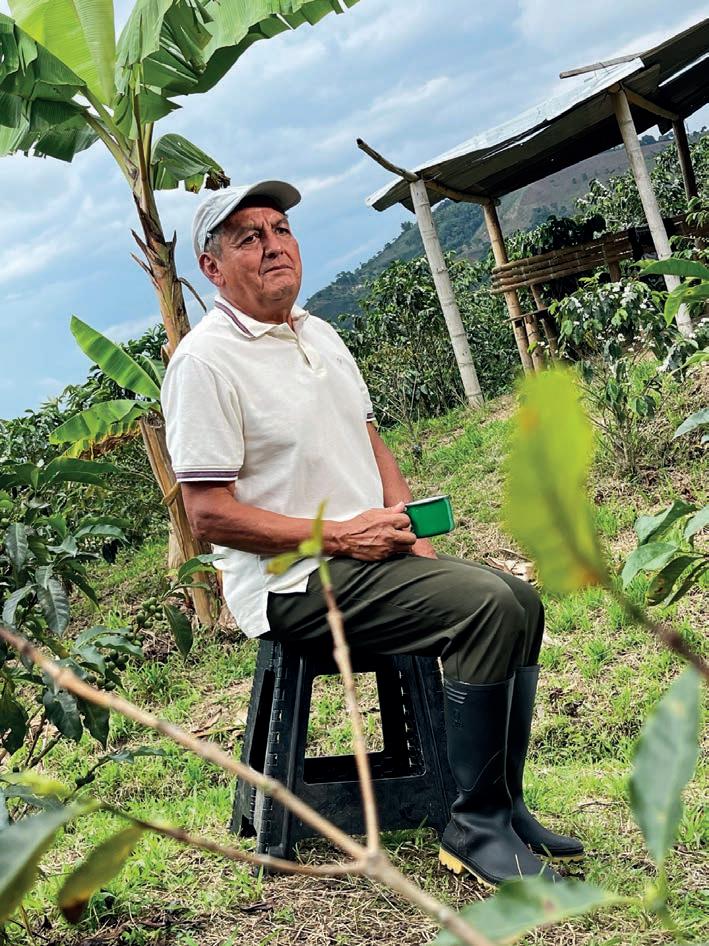
beyond its anniversary celebrations in 2023. The company also marked the expansion of its soluble coffee factory, allowing an increased packaging capacity to meet the needs of customers globally.
“We continue to think ahead, so we are already reviewing future options to continue growing our business while consolidating our position as leaders in the premium category of freeze-dried coffee,” says Mejia.
With anniversary celebrations now in the past, Mejia and the Buencafé team have goals in place to further uplift the farmers of Colombia.
“We are looking to maintain our coffee growers at the centre of our operations as
we recognise that, thanks to them, we are able to share the best of Colombia with the entire world,” says Mejia.
Mejia highlights China, the Middle East and Latin America as markets Buencafé will target in the near future.
“We want to become the best alternative of premium soluble coffee for supermarket brands in all parts of the world,” he says.
“Today, we generate added value to the Colombian coffee industry, leading the market with cutting-edge technology and a vision full of optimism for the future.” GCR
For more information, visit www.buencafe.com

45 GLOBAL COFFEE REPORT
Colombian coffee farmers inspired Buencafe’s anniversary postcards.
Buencafé’s commitment to growing the Colombian coffee community extended beyond its anniversary celebrations.

Tech-savvy
Unic explains the key technical and software features of the Stella Epic multi-boilers and Tango XP super automatic series that embody consistency, flexibility, and innovation.
UNIC STRIVES to set industry standards for innovative machines and intelligent brewing solutions to create quality coffee. Its main goal is to apply the best technologies towards fulfilling customers’ expectations.
To achieve this, Unic Research and Development Manager of Coffee Jeremy Coquille says its machines are designed to offer a high-level of technical and design features.
“Unic’s Stella Epic and Tango XP espresso machines include versatile softwares that can accommodate the different needs and profiles of users,” he says. “This includes the Standard mode for most machine users, and an Expert or Specialty mode developed for and dedicated to expert baristas and specialised coffee professionals.”
The Stella Epic is Unic’s flagship multiboiler machine that offers baristas a unique way to profile the ideal espresso shot through its Expert mode.
This gives complete control over the full extraction process, including the preinfusion pressure ramp, with a built-in
pre-infusion chamber. It allows a slower acceleration to full pressure, infusion and post-infusion cycles.
“The main difference between the two modes is how you can define and set the parameters of coffee extraction,” says Unic USA Director of Technical Support and Training Paul Flynn.
The Stella Epic also features Unic’s Thermalink technology, which controls the distribution of heat through the different boilers.
It results in thermal stability and optimises energy requirements and consumption.
The Thermal Link System is a software specific algorithm that manages power repartition to avoid variation of water temperature output. Thanks to the 1 per cent precision thermal probe, it gives precise information to the software to deliver power where needed, such as the coffee boilers or steam boiler.
“The Stella Epic offers exceptional workflow performance for high volume cafés by using an intelligent power
management system, resulting in one of the most thermally stable brew groups,” Flynn says.
Like the Stella Epic, Coquille says the most important consideration when designing the technical components of the super automatic Tango XP series was upholding quality.
“We decided to use heavy-duty 83-millimetre flat burrs combined with a powerful grinder motor to keep consistency, just like you would see in a high-volume coffee shop,” he says.
“We then paired the grinding ability with the ingenious mechanism of the Tango brew group. This unique piece of metal guarantees the stability of water temperature to reach the best consistency in coffee extraction.”
Unic’s Tango dual infusion chamber brew group is a patented design that has received much industry recognition in past years. It replicates all the steps performed by a barista in combination with the mechanism of the two independent pistons.
This is a result of the internal intelligence of the algorithm. It tamps the coffee, and
46 GLOBAL COFFEE REPORT
TECH & SOFTWARE FEATURE UNIC
The Tango XP super automatic series delivers the same quality as traditional machines.
Images: UNIC.
calibrates the volume and pressure of the infusion chambers.
There is also free space inside the piston to allow the coffee to expand during the pre-infusion. Coquille says this free space can be adjusted through the software.
“Just like a traditional machine, we have strong temperature control over the coffee boiler and the coffee group to maintain the perfect temperature. All Tango XP components and technical solutions enable you to reproduce the gestures of a skilled barista,” Coquille says.
The Tango XP Duo produces up to 440 espresso cups per hour, delivered simultaneously via the two independent pistons. The Tango Solo is an evolution model that features a new single piston.
The Tango XP series also manages the delivery of milk-based drinks thanks to the one-step integrated pump system, an advanced design that delivers hot and cold foam and milk. It also alters the density or texture of foam by playing with air injection via the speed of the pump through usercustomised settings or specific parameters.
“A big advantage of this system is its indirect heating, with no water or steam injected inside the milk. The result is a higher-quality milk foam,” Coquille says.
Beyond the one-step is another optional addition called Steamair, which features a temperature probe inside the stainless-steel steam wand to monitor temperature.
For cleaning coffee units, Unic recommends running cycles with a Unic detergent tablet.
“For most super automatic espresso machines, the cleaner is just dropped in
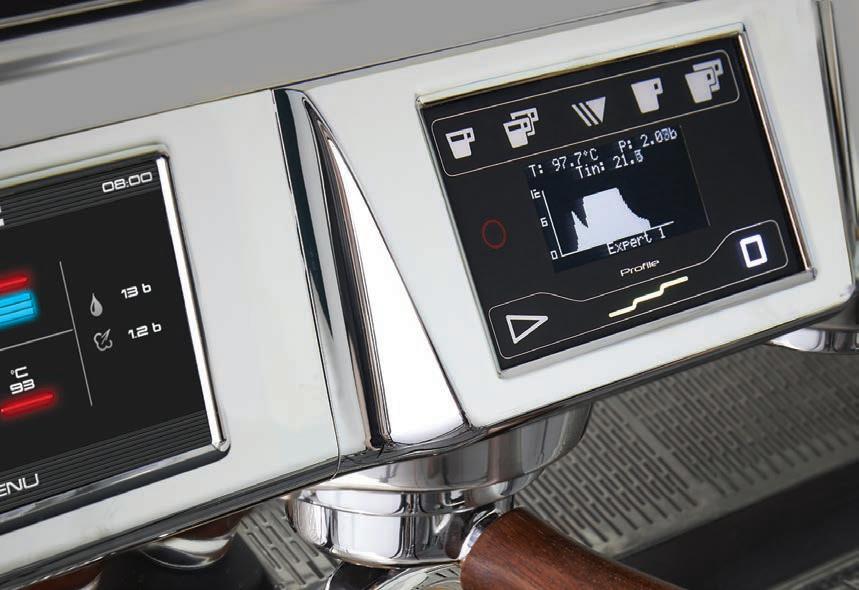
the brewing chamber. Essentially, just like a shot, it is brewed with cleaner and doesn’t backflush the way a traditional machine does. We have a completely different cleaning system where our tablet is mixed with hot water in a separate chamber away from the brewing group. The solution is then pumped through the brewing group in a counter direction for more reliable cleaning of the brew group and valves,” he says.
Flynn says a new era of customers now gets to experience the qualities Unic has always embraced.
“People are becoming more aware of quality coffee and expect a consistent cup, wherever they go. We partner with small- to medium-sized roasters in the United States that choose our machines because they can trust it will make their coffee taste as good as it’s supposed to,” he says.
The company sees a strong market
foothold for traditional machines, which it will continue to support and evolve. However, Unic says it recognises the importance of producing fully automatic machines to respond to current market needs.
“We believe the market is shifting in the direction of fully automatics and automation in general. Our Tango XP machine has been conceived so that it can brew the same coffee quality as a traditional machine, maintaining those high total dissolved solids that make a coffee great,” says Unic General Manager VP Tommaso Fontana Rava.
He adds that Unic customers are in need of a machine that can help the processes of a barista, so expert baristas can concentrate on other things like taking care of customers. According to Fontana Rava, having the possibility to create an excellent cup of coffee at the touch of a button is the main reason the company developed and expanded the Tango XP machines.
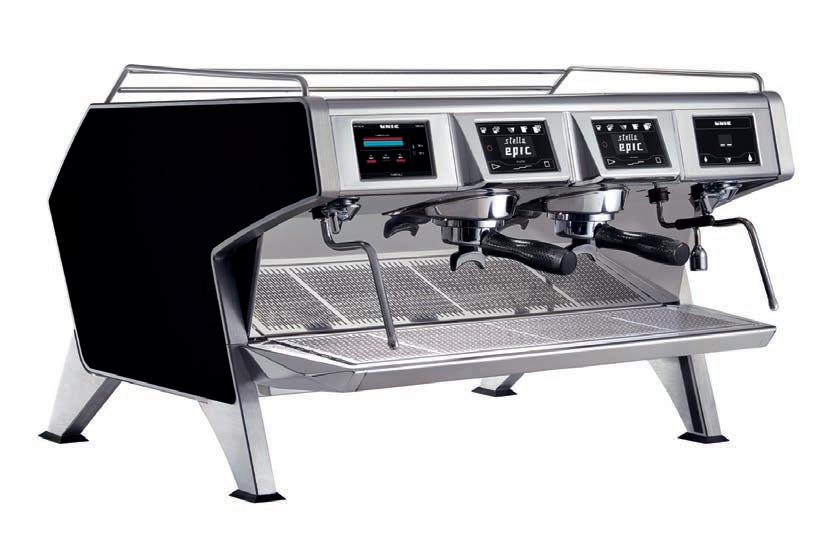
“Everything about the series is made to simplify the experience of the person in front of the machine, whether they’re a technician, novice or expert barista. If you understand how a traditional machine works, then you can replicate the same workflow to dial in your preferred recipe,” he says.
“Looking into the future, we believe coffee will become a more premium item. Consumer’s expectation for high quality is not limited in the cup but extends to the overall customer experience. That’s why we believe fully automatic machines will receive greater attention from the market.” GCR
For more information, visit www.unic-espresso.com
47 GLOBAL COFFEE REPORT
The Stella Epic is Unic’s flagship multi-boiler machine.
The Stella Epic features an Expert mode for experienced baristas.
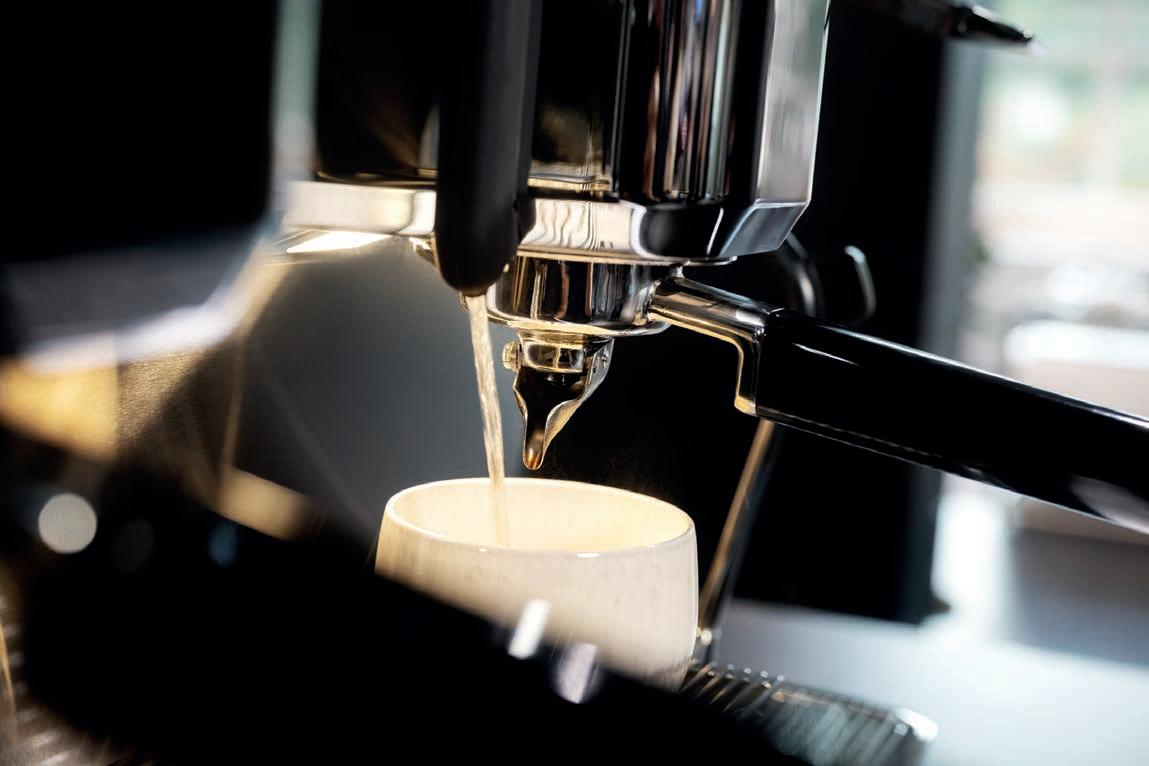
Moving forward
WMF Head of Global Marketing Axel Fähnle discusses the rise of automation, and how the WMF espresso NEXT semi-automatic portafilter can help businesses stay on top of an evolving coffee industry.
AUTOMATION IN the workplace is becoming more prevalent, with automatic grinding, tamping, and milk texturing machines hitting the market. German coffee machine manufacturer WMF has long sought to get ahead of this movement, bringing new concepts and technology to the industry so its customers can navigate a changing world.
The WMF espresso NEXT exemplifies this movement. In fact, the company’s Head of Global Marketing Axel Fähnle says the semi-automatic portafilter is an ideal machine for customers who value the highest espresso quality along with artisan preparation. This includes coffee store chains, independent smaller cafés, hotels, restaurants, and businesses that pride themselves on coffee.
“We appeal to target groups that want the best of both worlds: reproducible and consistently high barista-style coffee paired with the undeniable benefits of automation and technology,” he says.
The WMF espresso NEXT is the first WMF machine to introduce the company’s Auto Milk Dispensing technology, which works with dairy milk as well as oat, soy, or coconut alternatives.
“With this new feature, the WMF espresso NEXT offers even more milk expertise than before,” says Fähnle. “At the touch of a button, the system draws the right quantity of milk or plant-based alternative and foams it to the desired consistency. This avoids superfluous milk and thus waste, since only the exact amount needed is dispensed.”
The machine also features the One-Touch Americano function which can create this popular drink. It also includes the AutoSteam concept, which Fähnle says provides an additional performance boost for the barista.
“[AutoSteam] allows the simultaneous use of the two configurable, automatic steam lances on both sides of the machine,” he says. “In this way, service personnel can process two pots with different milk types at the same time.”
WMF sought to reconfigure the operating concept when assembling the WMF espresso NEXT. This includes adding a separate display for each brewing group in arranged areas for coffee and milk preparation.
“The barista is clearly guided, and the machine tells the user at every step what
is happening and what needs to be done,” Fähnle says. “Even for workers with very little experience, it is easy to produce delicious coffee.”
WMF’s CoffeeConnect technology has also been included in the portafilter, allowing the analysis of machine data to be presented at any time to the user. Fähnle says this marks a shift towards digitalisation in the coffee industry as it integrates data into upstream and downstream systems.
“Thanks to this integration expertise, we implement business models such as a payper-cup model, for example, which enables roasters and franchisors to offer additional financing models,” he says. “Automation in the analysis of machine data is an important basis to maintaining a consistently high coffee quality as well as providing business security by avoiding malfunctions and downtimes.”
In keeping with the WMF espresso NEXT’s technological attributes, the CoffeeConnect feature has been included to make life easier for the barista and the café owner.
“The aim is to reduce the complexity and susceptibility to errors in the individual work steps and thus continuously improving
48 GLOBAL COFFEE REPORT
TECH & SOFTWARE FEATURE WMF
The WMF espresso NEXT includes the One-Touch Americano function.
Images: WMF.
coffee quality,” says Fähnle. “The Auto Milk Dispensing and One-Touch Americano functions play an important role here, as they ensure consistent beverage quality even for inexperienced operators.
“Process reliability is also at the forefront of the new display concept. This includes clearly guided steps that make the beverage quality independent of the machine operator and the speed of machine service, which benefits from new menu structures.”
Fähnle says the WMF team have thoroughly analysed the technological approach to the WMF espresso NEXT to ensure manual errors are eliminated throughout the entire coffee-making process.
“The coffee is ground directly into the WMF espresso NEXT portafilter via integrated grinders in the exact quantity and to the perfect grind,” he says. “From there, the freshly ground coffee is automatically tamped and then brewed with the correct amount and temperature of water.”
The company’s team ensured that, while designing the WMF espresso NEXT, the additional features would not overcomplicate the machine’s structure from a user and technician perspective.
“Thanks to the new display concept with its user logic and guidance, the service procedures for the WMF espresso NEXT are even easier. In addition, the continuous training and further education of our certified service technicians and sales partners is one of the quality foundations of our customer focus,” says Fähnle.
Fähnle says a machine such as the WMF espresso next is needed in the coffee market due to the increasing popularity of fine coffee specialties among consumer groups.
“The number of experienced coffee professionals, however, is not growing at the same rate,” he says. “In order to meet increasing customer demand for coffee quality and variety in time of staff shortages, the machines must guarantee high process reliability and be as easy to operate as possible.
“With this new machine, WMF is addressing target groups that want to combine the best of traditional Italian coffee culture with the process reliability of a modern fully automatic machine.”
Fähnle hopes that by helping solve the common workplace issue of staff shortages, the WMF espresso NEXT can alleviate financial and operational concerns businesses may have.
“Semi-automatic concepts such as this
can help ensure high coffee quality despite changing staff,” he says. “Compared to conventional portafilter machines, the WMF espresso NEXT reduces the manual preparation steps for a cappuccino, for example, by up to 40 per cent. This leaves more time for customer interactions, which then leads to higher sales due to shorter waiting times and positive customer satisfaction.”
What separates the WMF espresso NEXT from other portafilter machines, according to Fähnle, is the standardised and optimised communication and interaction between the coffee grinder and the extraction process.
“The integration of the grinder into the main appliance [the coffee machine] also reduces the space required on the counter,” he says. “There is no need to buy a separate grinder. It also optimises the workflow of the barista as everything is happening in front of the machine.”
Fähnle believes the possibilities of automation through the WMF espresso NEXT will become more established.
“In the coffee business, this development can be seen in both fully automatic machines with self-regulating systems and in portafilters with an increasing level of technological equipment,” he says. “A shortage of skilled workers and high fluctuation rates, as well as increasing quality demands from customers, are the breeding grounds for important innovation steps, which is why our goal is to maintain consistently high craftsmanship and quality in our products and services.”
Fähnle adds that it is only a matter of time before automation takes over almost all tasks and processes that simplify the preparation of coffee beverages. As such, the WMF espresso NEXT is an important milestone for the company.
“[The WMF espresso NEXT] provides the discerning coffee scene with barista-quality specialties, while at the same time relieving the burden on restauranteurs,” he says. GCR
For more information, visit www.wmf-coffeemachines.com
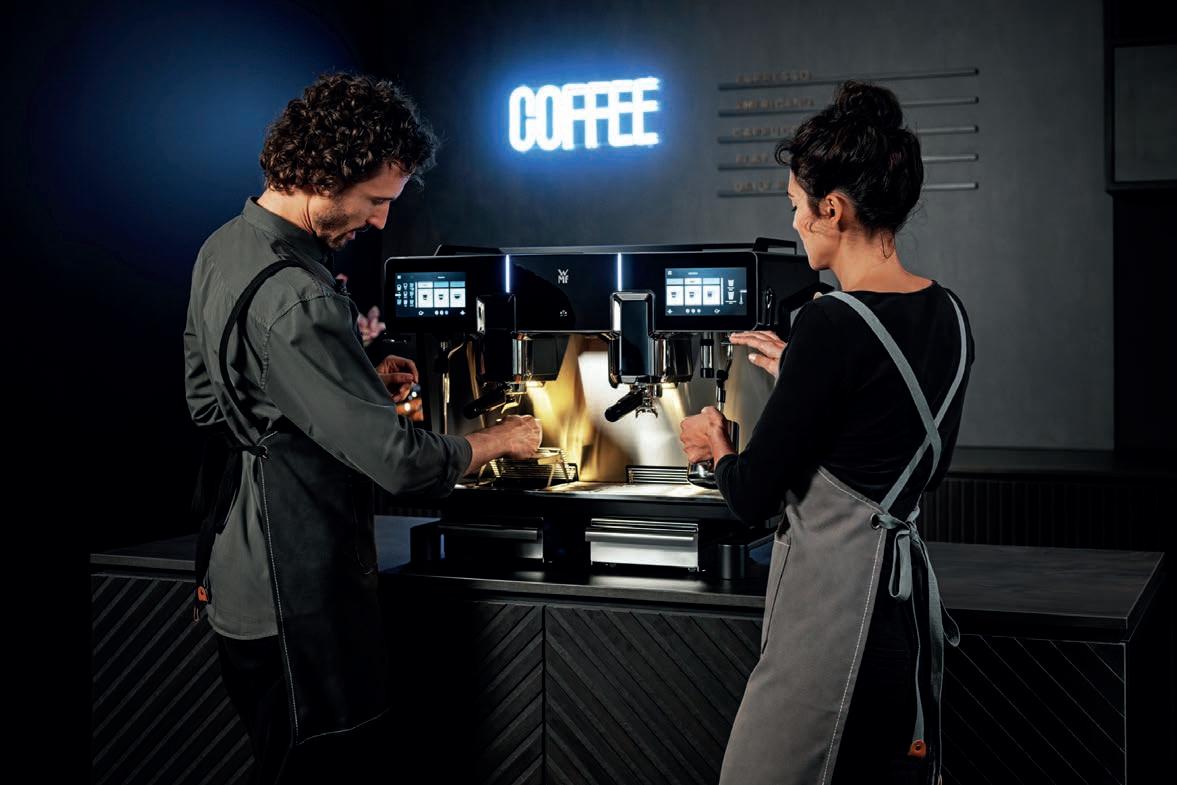
49 GLOBAL COFFEE REPORT
The WMF team has ensured manual errors are eliminated throughout the coffee-making process with the WMF espresso NEXT.

Steeped in success
California-based Steeped Coffee details an innovative yet simple single-serve brewing method that's making coffee more accessible, ethical, and sustainable.
THE IDEA for Steeped Coffee started from a common problem: the struggle for travellers to pack light. Serial entrepreneur and self-proclaimed coffee snob Josh Wilbur wanted to enjoy specialty coffee without lugging around a suitcase full of brewing equipment. To alleviate this, he combined the convenience of a single-serving brew method with the premium quality of ethically sourced coffee.
“Josh wanted to redeem the environmental dilemma created by coffee pods, and it seemed like there was a gap in the market for making premium coffee more accessible and a single-serve solution,” says Steeped Coffee Executive Vice President of Sales Evan Dohrmann.
“There are a number of great competitors that have popped up in the years since Steeped Coffee was founded [in 2017], which I think illustrates that other people felt there were similar gaps in the market. We applaud all innovation, and we love the competition because it creates really dynamic single-serve offerings. The more high-quality innovation we can have in the space, the more it forces all of us to
continuously refine our offerings and create a better product.”
According to Steeped Coffee, more than 10 billion unrecyclable pods accumulate in landfills each year – enough to wrap around the Earth more than 110 times if placed side-by-side.
“In America, the workplace is a market in which people are consuming filter coffee as the most common method. Single-serve consumption still dominates the landscape, and that’s an area we feel we can provide value in,” Dohrmann says.
It took Wilbur seven years to innovate the proprietary Steeped Coffee system that delivers on several fronts: fresh roasted, pre-portioned, precision ground, micro batched coffee which comes in customised full immersion filters. After hundreds of prototypes, Wilbur invested in a straightforward solution, the Steeped Brew Bag.
Available in five roasts – light, medium, dark, French roast, and a single-origin Swiss water processed decaf – the brew bags are made from commercially compostable packaging, and brew premium coffee as simply as tea.
“Premium coffee roasters have shied
away from offering their specialty beans in single-serve packaging because it’s been almost impossible to keep ground coffee fresh, which quickly ruins the taste,” says Dohrmann. “With our nitro sealed bags, oxygen is replaced with nitrogen, so the coffee stays fresh as if it was ground moments ago.”
Due to the convenience of the brewing method, Dohrmann says Steeped Coffee packs are the easiest way to make a delicious cup of coffee.
“You shouldn’t need to perform chemistry before you’ve made your coffee. Simply submerge each Steeped Brew Bag in hot water for about five minutes to allow the coffee to develop its distinctive body and flavour. There is no machine, no noise, no clean up, and no destructive waste,” he says. Steeped Coffee works with more than 300 premium coffee roasters and has found its brew method to be a successful solution in the hospitality sector, especially in hotel chains.
“Most of our customers seem to really appreciate the work that's been undertaken to ensure a premium experience is maintained. The work that goes into sourcing and preparing high-quality
50 GLOBAL COFFEE REPORT TECHNOLOGY PROFILE FRANKE
The Steeped Brew Bags are available in five different roasts.
FEATURE STEEPED COFFEE
Images: Steeped Coffee.
coffee, and the desire to try to maintain that integrity, has a lot of alignment with our roaster partners as it relates to quality. Beyond that, our roasters value the efforts we undertake to ensure we're minimising our footprint,” Dohrmann says.
The company’s packaging is crafted from plant-based renewable materials. Dohrmann says that, from the outer box to the inner bag, all components of the product come in an eco-friendly package.
“With each sip, you’re helping us pave the way for a future where coffee and sustainability go hand-in-hand,” says Dohrmann.
The Steeped Brew Bag Method brews coffee in pre-portioned compostable coffee bags.
“At its core, [the Steeped Brew Bag Method] is brilliantly simple – just add water. But what unfolds within the walls of your mug is a complex dance between science and innovation, thanks to the full immersion brewing technique. This approach allows the coffee to reach its full potential while immersed in the water, resulting in maximum flavour extraction that will awaken your taste buds like never before,” he says.
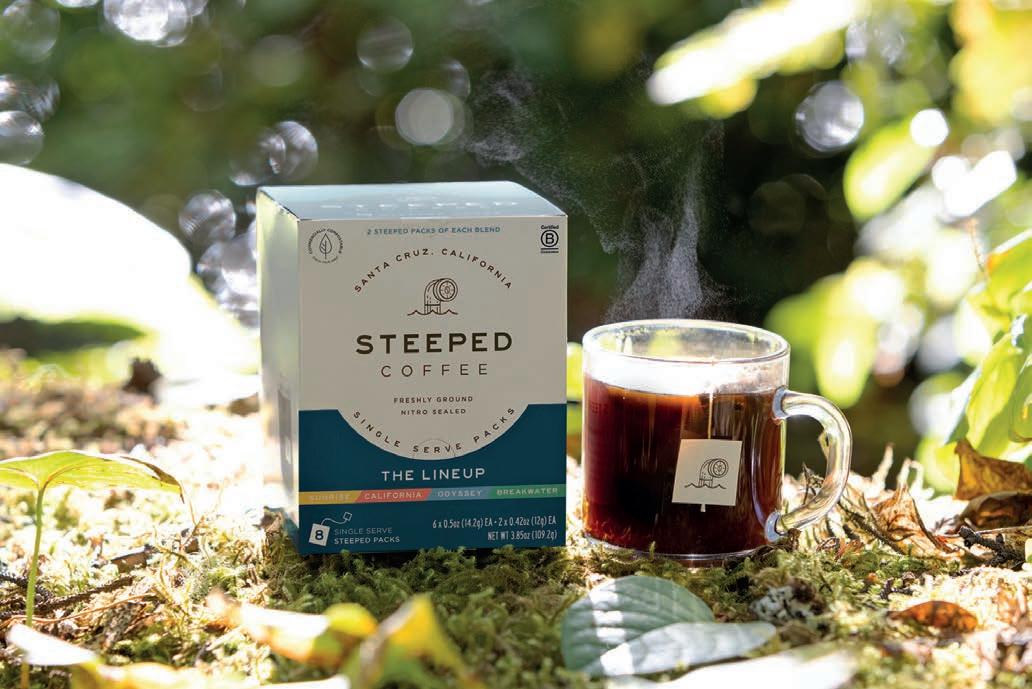
“Receiving recognition from Inc. is an incredible honour. It validates our efforts in transforming the coffee industry through eco-friendly practices. This honour is a powerful motivator for us to continue driving innovation for a greener future,” he says.
From the careful selection of its beans to the artistry of its brewing method, each step is a celebration of flavour. Steeped Coffee’s full-immersion filter allows maximum extraction to ensure each sip reveals the depth and complexity its curated beans offer.
“It's a coffee experience unlike any other,” says Dohrmann.
As such, Steeped Coffee, a Certified B Corporation, was included on the Inc. 2023 Best in Business list.
This list recognises 215 companies that focus on purpose before profits, with the goal to make a difference in communities, industries, and the world.
“Steeped Coffee’s inclusion is testament to its revolutionary approach in the coffee industry, offering a unique and sustainable single-serve brew method,” says Steeped Coffee Founder and CEO Wilbur.
By simplifying the brewing process and eliminating plastics, Wilbur says Steeped Coffee has set a new standard in environmental responsibility.
“Selected from a competitive pool, Steeped Coffee was chosen by Inc. for its achievements and positive global impact,” he says.
Wilbur says the company’s commitment to environmental stewardship is particularly notable.
The brewing company also partnered with Michelin-starred chef and television personality Curtis Stone to launch a line of craft-roasted specialty coffee. The line features a curated selection of blends and single-origin roasts, showcasing a diverse range of flavour profiles and roast intensities.
“It was a natural evolution to collaborate with Curtis. We’re excited and honoured he decided to explore our brew method as a way for him to introduce more products to more people. We're hoping to be able to potentially expand that partnership in the future,” says Dohrmann.
“Together, we are introducing a new level of excellence to the coffee industry, combining Curtis’ culinary expertise with our innovative brewing method. We believe this partnership will redefine how people experience specialty coffee.”
“One of the best aspects of single-serve coffee is its ability to brew just the right amount, minimising any waste that comes along with your morning ritual. Since each bag is pre-portioned for an eightounce cup, you can kiss those blearyeyed, pre-coffee measurements goodbye,” Dohrmann says.
While other methods might run water through coffee, Steeped Brew Bags do things differently.
“Steeped Coffee is all about making a tangible impact, one cup at a time. Our goal over the next few years is to raise customer awareness about our product and purpose,” says Dohrmann. GCR

Steeped Coffee’s commitment to ethical sourcing ensures every coffee bean in the cup has been grown with respect for both the environment and the farmers who nurture them. One of its partners is the family-owned Flor del Café farm in Guatemala's Huehuetenango region. The farm actively participates in programs that empower local communities, promote environmental conservation, and enhance the region's overall wellbeing.
51 GLOBAL COFFEE REPORT
Steeped Coffee allows consumers to enjoy coffee while traveling light.
The Steeped Brew Bags are brewed similarly to tea.
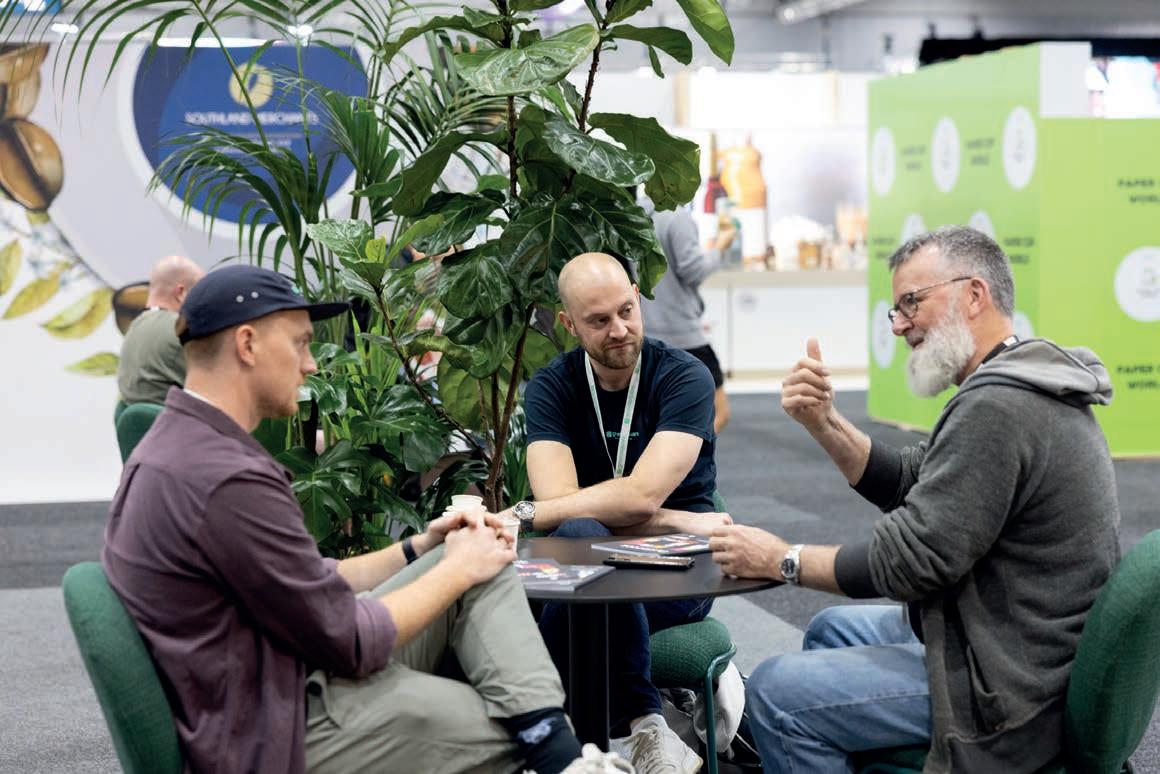



Real talk
The Melbourne International Coffee Expo introduces the GCR Breakfast Symposium, a discussion series examining key issues in the coffee industry.
ANEW ELEMENT is coming to the Melbourne International Coffee Expo (MICE) in 2024, adding an educational layer to Oceania’s leading coffee trade show.
This year, the event will feature the Global Coffee Report (GCR) Breakfast Symposium, inviting guests to attend a series of panel discussions that will tackle a range of important topics in the Australian coffee landscape.
“We can’t wait to bring the symposium to the expo this year,” says MICE Show Director Lauren Chartres. “It’s been a long time in the making, and we think people are going to appreciate it.”
The discussions will take place on the two expo trade days, 13 and 14 May, at the Melbourne Convention and Exhibition Centre. Tickets are required to access the symposium, which will also allow early entry to the expo.
GCR Managing Editor Sarah Baker will moderate the four talks, each with a panel of speakers. The sessions will be designed
to unpack key issues and themes applicable to the coffee industry. It will present an opportunity for attendees to listen and absorb the knowledge presented from leading industry experts. Equally, audience participation is encouraged, with guests invited to address questions to the panel with thought-provoking ideas.
When determining the four topics for the GCR Breakfast Symposium, the Chartres says it was important to consider customer feedback, market needs, and how to best maximise value to attendees.
“We wanted to focus on topics of global interest that would directly affect roasters from the Australasian market so that they can gain in-depth knowledge, hear practical advice, and make informed decisions that will set their business up for future success in line with evolving market needs,” Chartres says.
She says the reaction to the GCR breakfast series announcement “has been overwhelmingly positive”.
“Being able to provide such a platform
and add value to our MICE attendees is really exciting from our perspective and is helping to take MICE to another next level,” says Chartres.
The first session topic, Business in Asia, will examine the rapid growth of the Asian market and its influence on beverage and consumption trends. The discussion will highlight the DNA structure of successful Asian businesses looking to expand overseas, and Australian businesses beginning to mark their territory in the region.
“With coffee really booming in Asia. We want to examine what is happening around us with our neighbouring countries, and explore any trends that could translate to the Australian market,” Chartres says.
“There has already been several Australian roasters who have successfully expanded into Asia, and we want to share their learnings with others looking to try their luck in the region.”
The second panel topic, Tracing Trees, will take a closer look at recent deforestation
52 GLOBAL COFFEE REPORT
EVENTS MICE 2024
Images: James Thomas Photography/Prime Creative Media.
MICE will take place at the Melbourne Convention and Exhibition Centre from 12 to 14 May 2024.
supply chain regulations set in place by the European Union (EU).
In December 2022, the EU agreed on a new regulation to ensure supply chains remain free from processes and products that cause deforestation. Coffee, among other commodities, was identified as a key driver of deforestation due to agricultural expansion, with the new order aiming to reduce greenhouse gas emissions and biodiversity loss in the harvesting process.
Chartres says the discussion will benefit roasters still questioning how the regulations will affect their business operations.
“We’re looking to hear explanations across the supply chain, from those based in coffee growing origins to exporters that work with Australian businesses,” Chartres says.
“The aim is to prepare the Australian market for the future so that the transition is seamless and transparent going forward.”
The third chapter of the discussion series, Origin Focus, will deep dive into the nuances of origin countries including Brazil, Indonesia, and Nepal. Country representatives will highlight current crop trends and challenges, explain future plans for varietal development, and its unique point of difference.
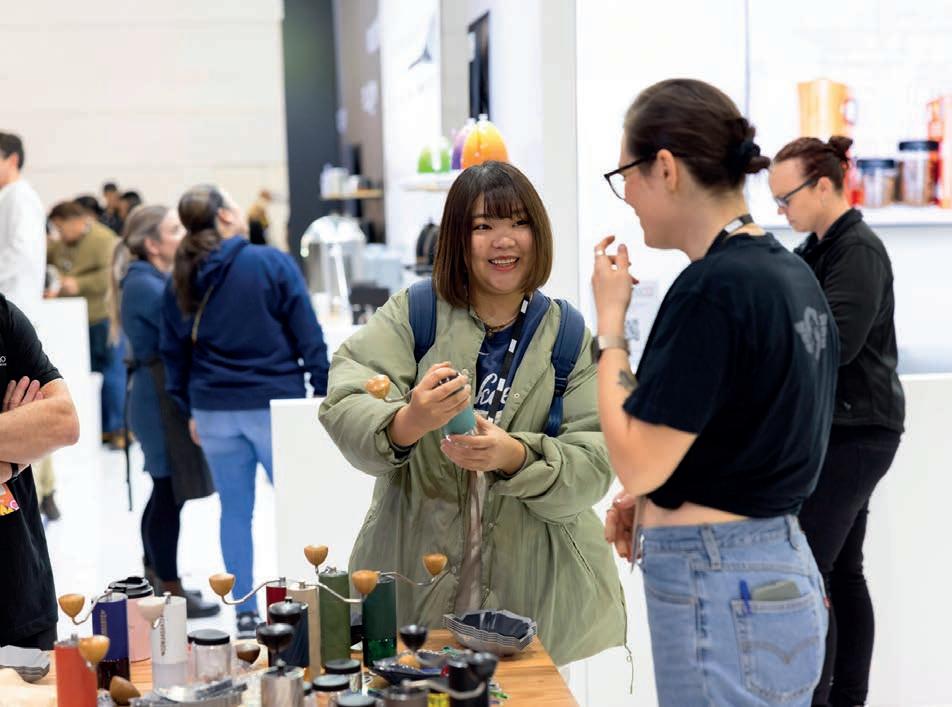
looking to make the trip Down Under, Chartres says now is the time to make a strong business case to attend.
“This topic will give attendees a chance to meet representatives from some of Australia’s favourite coffee-growing countries and gain insights into the lives of coffee farmers, and their commitment to upholding quality coffee production,” Chartres says.
“It’s all about challenging people to think more broadly about the journey of crop to cup, and a deeper appreciation and understanding of the many hands that contribute to the product so many Australians worship and consume daily. Our entire industry is dependent on the first step of the supply chain. Without our producers, there would be no industry and no MICE.”
The final topic of the panel series, Coffee Prices, will examine market conditions, look at past pricing trends, key factors contributing to volatile conditions, and what the future holds.
Panel representatives will speak from an outside perspective, which symposium organisers believe will provide a refreshing change to standard coffee analysis.
“Our goal is to give attendees an added perspective about the broader economy in the hope to broaden their understanding
“Now only is the GCR breakfast series going to be a fascinating new addition, it’s just one part of a larger event that is known throughout the global coffee industry for its dedicated coffee approach, it’s highlevel engagement, lead generation, and networking opportunities,” she says.
“MICE has been serving the needs of the Australian coffee market for the past
and this year is no different. If your business is looking to establish itself or its products in Australia, or you want to better understand the intricacies of this discerning market, there’s no better place than MICE to start that exploration. We look forward to seeing you in May.” GCR
To register for the breakfast series or to acquire tickets to MICE, visit internationalcoffeeexpo.com
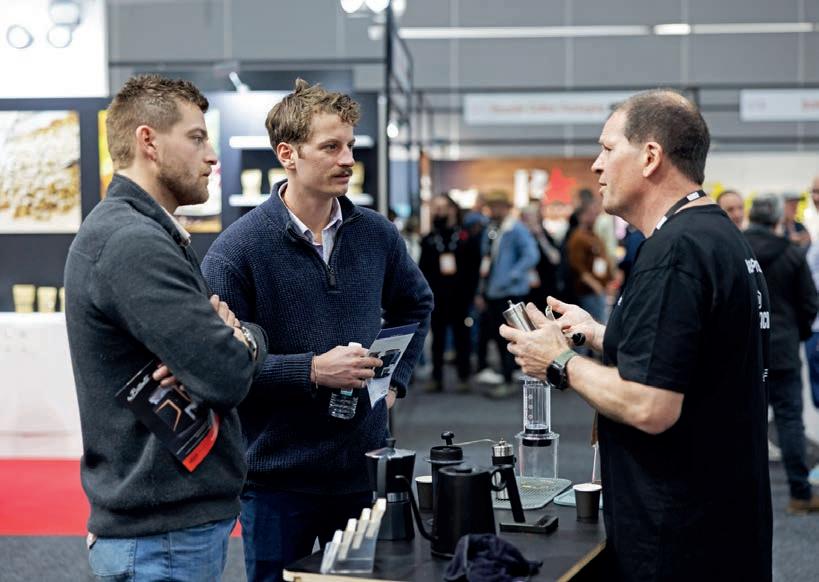 Tickets to the symposium will allow attendees to gain early entry to MICE and add value to their visit.
MICE is the place to do business and make new industry connections.
Tickets to the symposium will allow attendees to gain early entry to MICE and add value to their visit.
MICE is the place to do business and make new industry connections.
PRODUCT Marketplace
Probat thermal imaging cameras
Probat thermal imaging cameras have extremely precise detection properties and are directly integrated into the roasting machine control system. They guaranteeing consistently high product quality and maximum process reliability.
Probat’s cameras operate in the mid-infrared range and are particularly suitable for detecting incipient or imminent fires caused by embers in roasted coffee. They enable a sensitive evaluation of temperature inhomogeneities or differences, and permanently monitor the entire bulk material surface formed by roasted coffee beans in the cooling sieve. In the event of local overheating with temperatures above a defined limit value, suitable countermeasures can be initiated depending on the degree of overheating. An alarm is triggered if the temperature is exceeded for at least three seconds.
For more information, visit www.probat.com
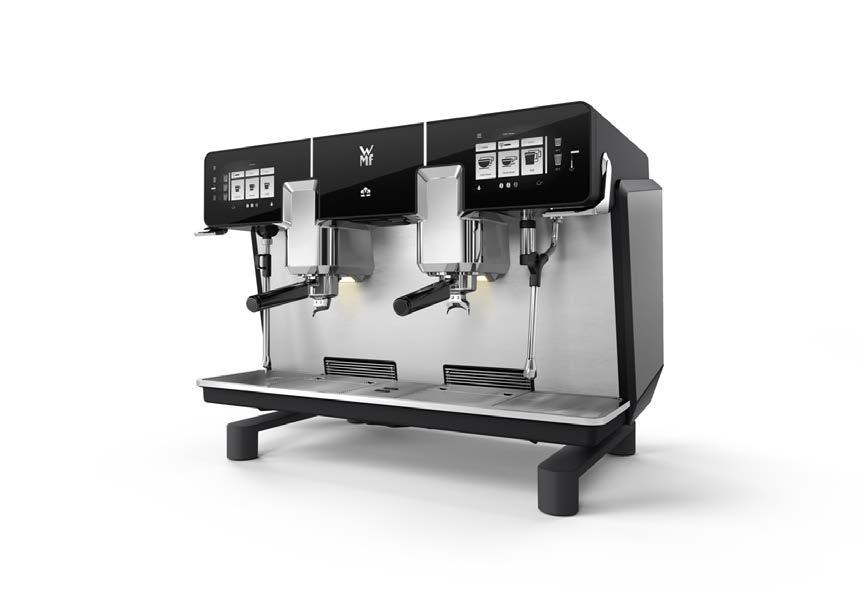
Small-scale aroma recovery and brewing
Flavourtech’s small-scale Spinning Cone Column (SCC), the SCC100, is ideal for research and development applications or small production runs. This new machine is in part two of its release with a slurry-capable model introduced in late 2023. Processing slurries of milled roast coffee beans and water is proven to recover premium coffee aroma compared to liquid coffee extracts. This is because the aroma is captured when it’s at its freshest, and not post high-temperature extraction, as traditionally occurs within the coffee industry.
The SCC100, with a throughput of 25 to 115 litres per hour, now provides companies with the opportunity to simultaneously recover aroma and gently brew their coffee on a smaller scale.
For more information, visit www.flavourtech.com

WMF espresso NEXT
The WMF espresso NEXT semi-automatic portafilter machine combines the world of traditional portafilters in terms of taste, design and craftsmanship, with the advantages of automation. The machine takes over all time-consuming and error-prone tasks, from grinding, portioning and tamping, to milk dosing and milk foam production. This makes it easy for any user to produce barista-quality coffee specialtes. The WMF espresso NEXT reduces manual coffee preparation by up to 40 per cent. This leaves more time for customer contact, leading to higher sales, shorter waiting times, and contributes to customer satisfaction.
For more information, visit www.wmf-coffeemachines.com
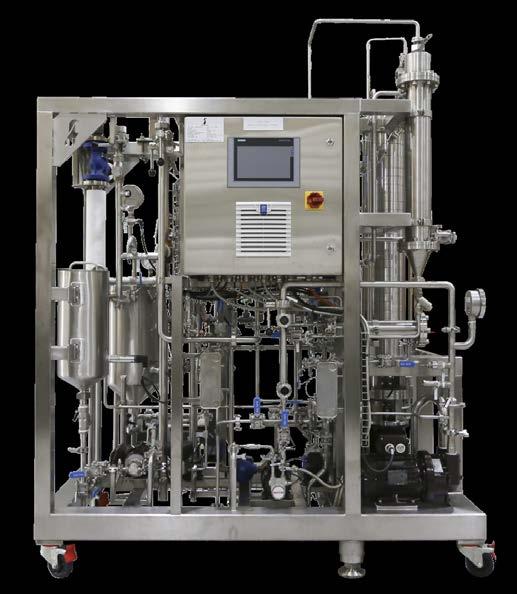
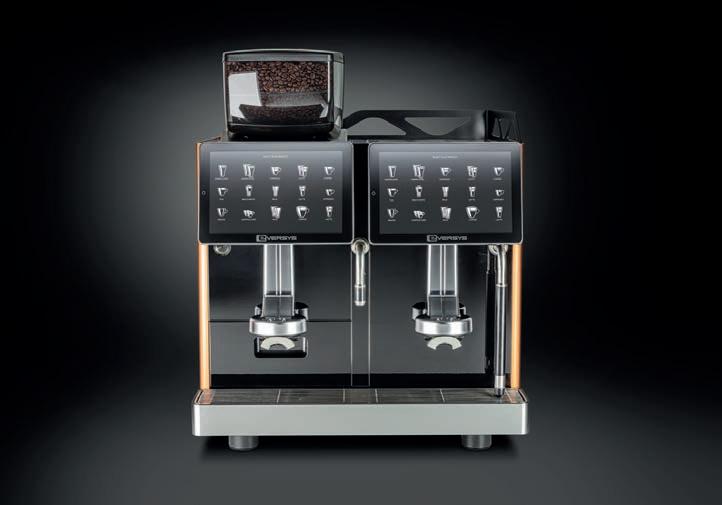
54 GLOBAL COFFEE REPORT PRODUCT MARKETPLACE


Brambati KL250S roller grinder
The KL250S FAF1 grinder was created to meet the market demand for small- to medium-sized production capacity for ‘gourmet’ grinding of coffee capsules. It can be installed in small spaces or directly on top of capsuling machines. The grinder is designed and constructed specially to achieve the required amount of powder in the ground regardless of the type of coffee origin, roasting, and moisture. Consisting of four pairs of grinding rollers with independent speed ensures consistency in particle size distribution, even in the case of discontinuous production. Specially recommended for production of high-quality capsules with ideal percolation, high cream content and body in the cup.
For more information, visit www.brambati.it
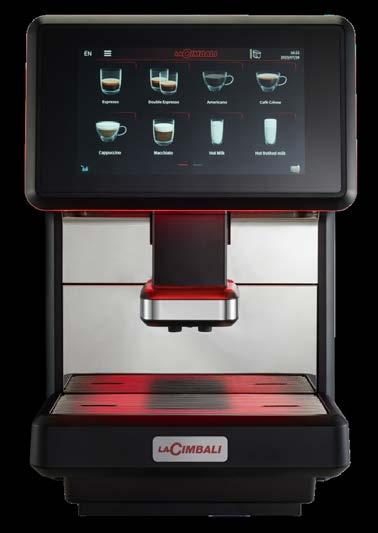
Enigma E’4m/Classic
Introducing the Enigma E’4m/Classic, a compact powerhouse in the world of coffee machines. With a 56-centimetre width, it produces four espressos or cappuccinos simultaneously, meeting the demands of high-volume settings with ease. Equipped with an in-built automatic milk heating and frothing module, the E’4m/Classic simplifies the beverage preparation process, ensuring consistent quality in every cup. Elevate the coffee experience with the Enigma E’4m/Classic, where innovation meets efficiency for unparalleled performance. It’s the ideal machine for places that need speed and taste without sacrificing space.
For more information, visit www.eversys.com
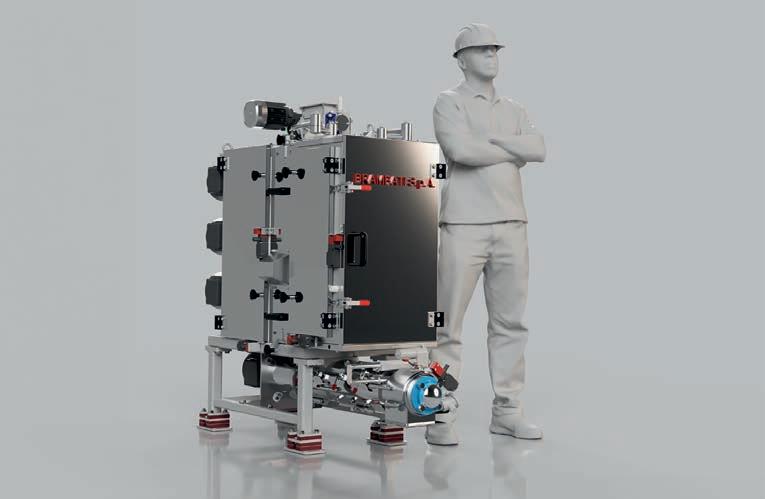
S-Lite
LaCimbali S-Lite redefines coffee excellence with its compact design blending tradition and modernity. The customisable LED light wraps the 10.1-inch touchscreen, reflecting the mood of any space.
The intuitive interface creates a user-friendly experience for skilled baristas and beginners. S-Lite is a hassle-free plug & play solution. It requires no direct water supply, making it ideal for businesses seeking a quick and effortless coffee experience. Stay connected with integrated Wi-Fi and USB, enabling seamless updates and recipe downloads. Effortless cleaning is guaranteed with La Cimbali’s Automatic Washing System, while flexible water tank options cater to diverse business needs.
For more information, visit www.cimbaligroup.com
55 GLOBAL COFFEE REPORT
DIARY Dashboard
Global coffee:
Café World Summit
SAN JOSÉ, COSTA RICA
20 — 23 March
More than 3000 participants are expected to attend the first edition of the Café World Summit at the Costa Rica Convention Centre. Attendees can experience a tech farm experience at one of the nearby demonstration farms, hear expert panel presentations at the Foro Al Grano conference and Café Growers Hub, and watch a Brewers Cup competition to conclude the event. At the conference, speakers from the Coffee Institute of Costa Rica and the University of Costa Rica will share valuable information. Attendees are welcome from around the world and from all sectors of the industry, from growers to suppliers.
cafeworldsummit.com
Coffee Expo Seoul
SEOUL, SOUTH KOREA
21 — 24 March
Coffee Expo Seoul 2024 is the first of two major coffee events to take place in South Korea in 2024. The annual expo, organised in collaboration with Coex Coffee and the Korea Coffee Association, will see more than 60,000 buyers connect with the coffee industry throughout the four-day event. Hundreds of varieties of global coffee beans will be showcased, alongside gourmet food, raw materials, and state-of-the-art coffee machines and equipment. The 2023 Expo saw more than 30,000 visitors travel to Seoul to analyse the very best of the Asian coffee market. Guests who pre-register through the Expo website will be granted free admission for the entire event.
www.coffeeexposeoul.com
Specialty Coffee Expo
CHICAGO, UNITED STATES
12 — 14 April
The Specialty Coffee Expo will take place in Chicago this year. The expo is designed to be the coffee professional’s one-stop-shop for everything they need to succeed in the industry. Attendees can learn about the most innovative and cutting-edge coffee products, consider how to integrate specialty coffee into existing business plans, and participate in numerous lectures. There are also handson learning opportunities for visitors, with the chance to expand careers and networks. Key show features include the Roaster Village, Cupping Exchange, Coffee Design Awards, and Best New Production competition.
www.coffeeexpo.org
SIGEP China
SHENZHEN, CHINA
24 — 26 April
SIGEP China has become a point of reference for innovation in the Chinese coffee industry, providing insights into market trends in ingredients, machinery, and equipment. The expo welcomed over 25,000 visitors during its 2023 edition. SIGEP China offers a complete view of the world of coffee while also providing networking opportunities for attendees visiting Shenzhen, one of the fastest growing economic regions in China. The entire coffee chain will be on display, from plantations to new processing techniques and competitions. Pre-registration for visitors is open until 20 March.
sigepcn.com/en
56 GLOBAL COFFEE REPORT
1 1 2 3 3 4 8
events around the world
7
2 4 5
World of Coffee BUSAN, SOUTH KOREA
1 — 4 May
World of Coffee Busan 2024 marks the first World of Coffee trade show in Asia, and is testament to the growth of the specialty coffee industry in this part of the world. Busan is the second-largest city and a prominent coffee trade hub of South Korea. Taking place at the Busan Convention and Exhibition Centre, the expo is a collaboration between the Specialty Coffee Association and Exporum. The expo will host the 2024 World Barista Championship, which returns to Korea following the Café Show Seoul 2017. The event will see the world’s best baristas demonstrate their abilities to compete to be crowned world champion. asia.worldofcoffee.org
5 6 6
Melbourne International Coffee Expo MELBOURNE, AUSTRALIA
12 — 14 May
The Melbourne International Coffee Expo (MICE) is known throughout the Asia Pacific as its largest dedicated coffee event. Established in 2012, MICE connects café owners, roasters, equipment manufacturers, service suppliers, and more to facilitate real business opportunities in Australia and around the world. The 2023 Expo saw almost 11,000 attendees at the Melbourne Convention and Exhibition Centre. This year, MICE will host a GCR Breakfast symposium, looking at global issues and their effects on the Australian coffee industry. Panel sessions will be curated specifically for roasters.
internationalcoffeeexpo.com
8
World of Coffee COPENHAGEN, DENMARK
27 — 29 July
The Specialty Coffee Association will host three global trade shows in the same year for the first time, with the final instalment of the World of Coffee series taking place in Denmark. World of Coffee Copenhagen will feature the 2024 World Latte Art, World Coffee in Good Spirits, and World Coffee Roasting Championships. The city’s progressive approach to business, technology, design, and trade made Copenhagen an ideal host destination for Europe’s premier specialty coffee trade show.
worldofcoffee.org
SIGEP Asia
SINGAPORE
26 — 28 June
The SIGEP expo series is looking to capitalise on Asia’s growing coffee prospects with its second expo in the continent in 2024. The inaugural SIGEP Asia, held alongside the Restaurant Asia series, will connect coffee buyers, retailers, and enthusiasts from around the world to showcase the best of innovation and development to the Asian market, including the latest grinders and barista equipment. Masterclasses, tastings, and discussions on the most advanced coffee machinery and accessories will be a highlight at the three-day event, as well as live demonstrations showcasing some of the industry’s latest trends.
sigepasia.com.sg
57 GLOBAL COFFEE REPORT
7
What’s Brewing

A wrap up of the latest appointments in the global coffee industry.
John Owen – Chief Operating Officer, Scooter’s Coffee
Restaurant industry veteran John Owen joins Scooter’s Coffee as Chief Operating Officer to help lead the successful drive-thru kiosk franchise model focused on providing high-quality drinks, speed of service, and amazing customer experiences. In his new role, Owen will lead the operational vision and execution to fuel the organisation’s strategic sales and service goals. He will partner with franchisees to ideate and execute strategies to expand capacity and achieve significant sales growth and overall franchisee success. Owen was the principle of Owen & Associates, an executive consulting firm specialising in assisting restaurant and retail suppliers. Most recently, he served as the President of Acrelec Americas, a global technology company focused on reinventing the customer experience for restaurant, and retail brands.
Massimiliano Bizzarri – CEO,
Rancilio Group has appointed Massimiliano Bizzarri as the new Chief Executive Officer (CEO) as of 1 January 2024. He succeeds Ruggero Ferrari, who successfully led the Rancilio Group for the past four years and confirmed steady growth, including in the past fiscal year.
Bizzarri, aged 54, holds a degree in Mechanical Engineering and has lengthy experience with multinational industrial groups in different business sectors, from automotive to food processing equipment. He joined Ali Group in September 2023 as Senior Vice President EMEA APAC and in recent years has held senior roles at Interpump Group as Division President and
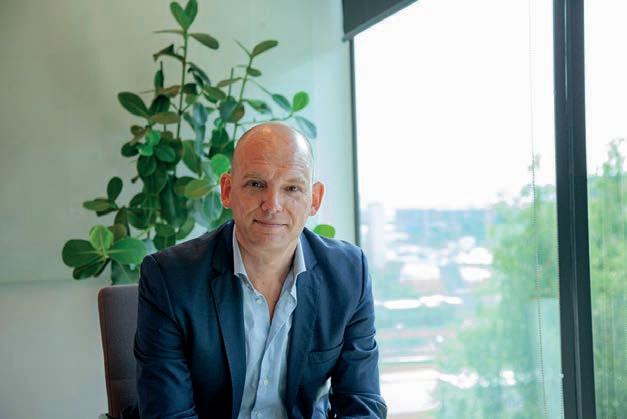

Roel van Poppel – Chief Sustainability Officer, ofi
Roel van Poppel will take responsibility of scaling ofi’s ability to drive positive impact across its five leading product platforms: cocoa, coffee, dairy, nuts, and spices. He will report directly to CEO A. Shekhar and be a member of the Corporate Leadership Team.
Roel is an industry leader with extensive experience across both ingredients and sustainability. This includes senior leadership roles at Cargill and Wild Flavors before joining ofi’s parent company Olam Group in 2013 as Global Commercial Lead for its spices business.
Most recently, Roel was seconded by Olam Group as a Co-founder of the wider industry-led sustainability measurement digital platform TRACT.
Roel will bring further focus to ofi’s expertise in addressing social and environmental challenges in food supply chains such as farmer poverty, deforestation, and greenhouse gas emissions.
Siobhan Rocks – General Manager, Melbourne International Coffee Expo
Prime Creative Media has appointed Siobhan Rocks as the new General Manager of its Melbourne International Coffee Expo (MICE). Rocks is an experienced events executive, having spent many years in senior roles at Diversified Communications. Her experience managing Fine Food Australia, Foodpro, Naturally Good, and FoodTech makes her an especially strong candidate to lead the events team and support the redevelopment of MICE.
“I have long admired the work Prime Creative Media has done, watching MICE grow into a staple event for the global coffee industry,” says Rocks. “I look forward to joining such a great team and supporting the ongoing growth of their events.”
Rocks intends to continue to listen to the industry and is planning to invest more people and resources to support the future evolution of the Southern Hemisphere’s largest dedicated coffee expo.

58 GLOBAL COFFEE REPORT
Image: Scooter’s Coffee.
Image: ofi
Image: Prime Creative Media.
Image: =Rancilio Group.
SERVING THE INDUSTRY SERVING UP EDUCATION MICE2024 SERVING COFFEE
BOOK YOUR STAND TO TAKE PART IN THE SOUTHERN HEMISPHERE’S LARGEST DEDICATED COFFEE TRADE SHOW.
CONVENTION AND EXHIBITION CENTRE INTERNATIONALCOFFEEEXPO.COM INTERNATIONALCOFFEEEXPO@PRIMECREATIVE.COM.AU PLATINUM SPONSORS
INTERNATIONAL COFFEE EXPO EXHIBITION SPACES AVAILABLE 12–14 MAY 2024
MELBOURNE
MELBOURNE















 Sarah Baker Editor, Global Coffee Report
Sarah Baker Editor, Global Coffee Report



















 Allowing patches of natural habitat to grow among coffee crops may provide a refuge for pollinating insects.
Allowing patches of natural habitat to grow among coffee crops may provide a refuge for pollinating insects.












 The AAA Program aims to reach net zero in AAA green coffee production by 2030. Image: Nespresso.
The AAA Program aims to reach net zero in AAA green coffee production by 2030. Image: Nespresso.


































 Tickets to the symposium will allow attendees to gain early entry to MICE and add value to their visit.
MICE is the place to do business and make new industry connections.
Tickets to the symposium will allow attendees to gain early entry to MICE and add value to their visit.
MICE is the place to do business and make new industry connections.











